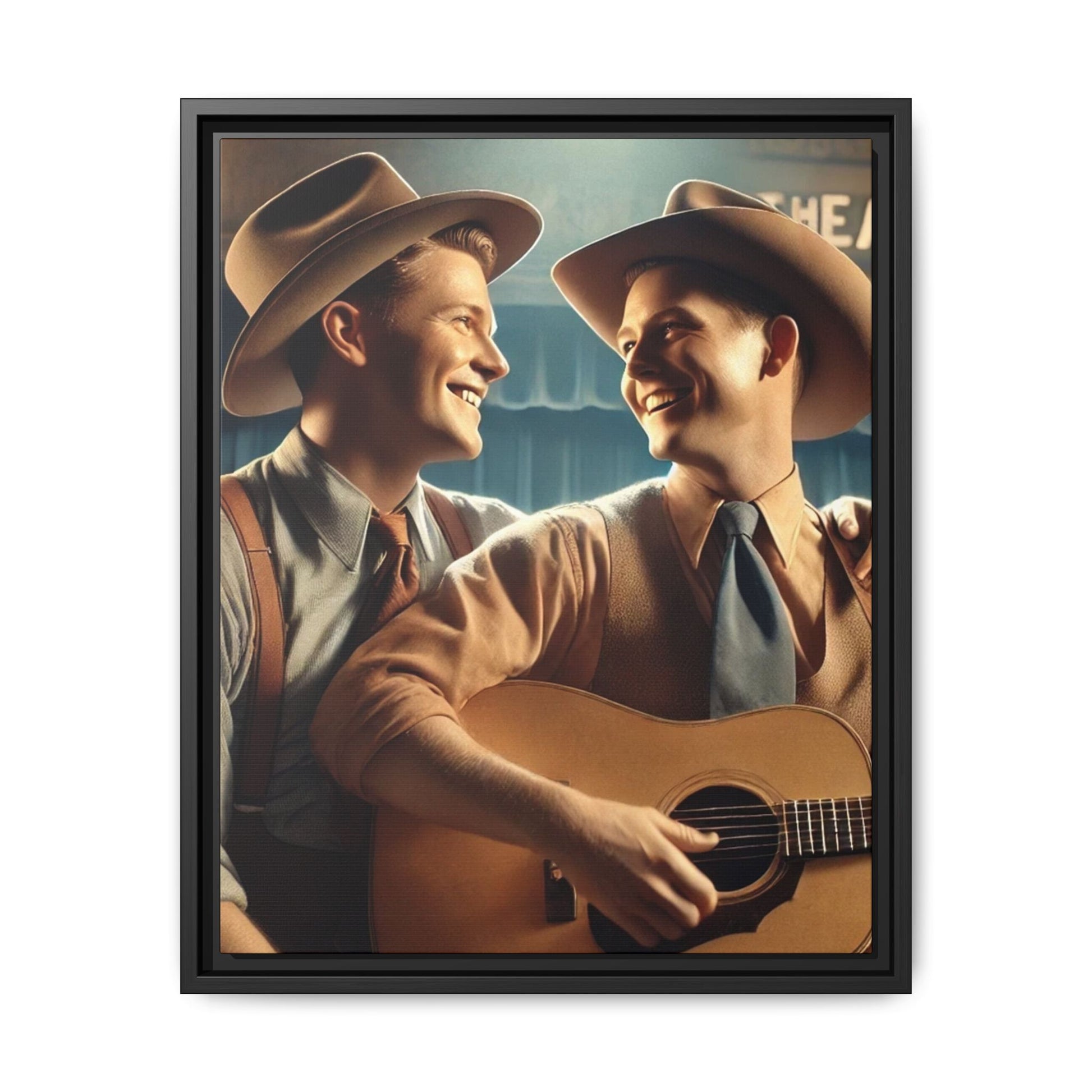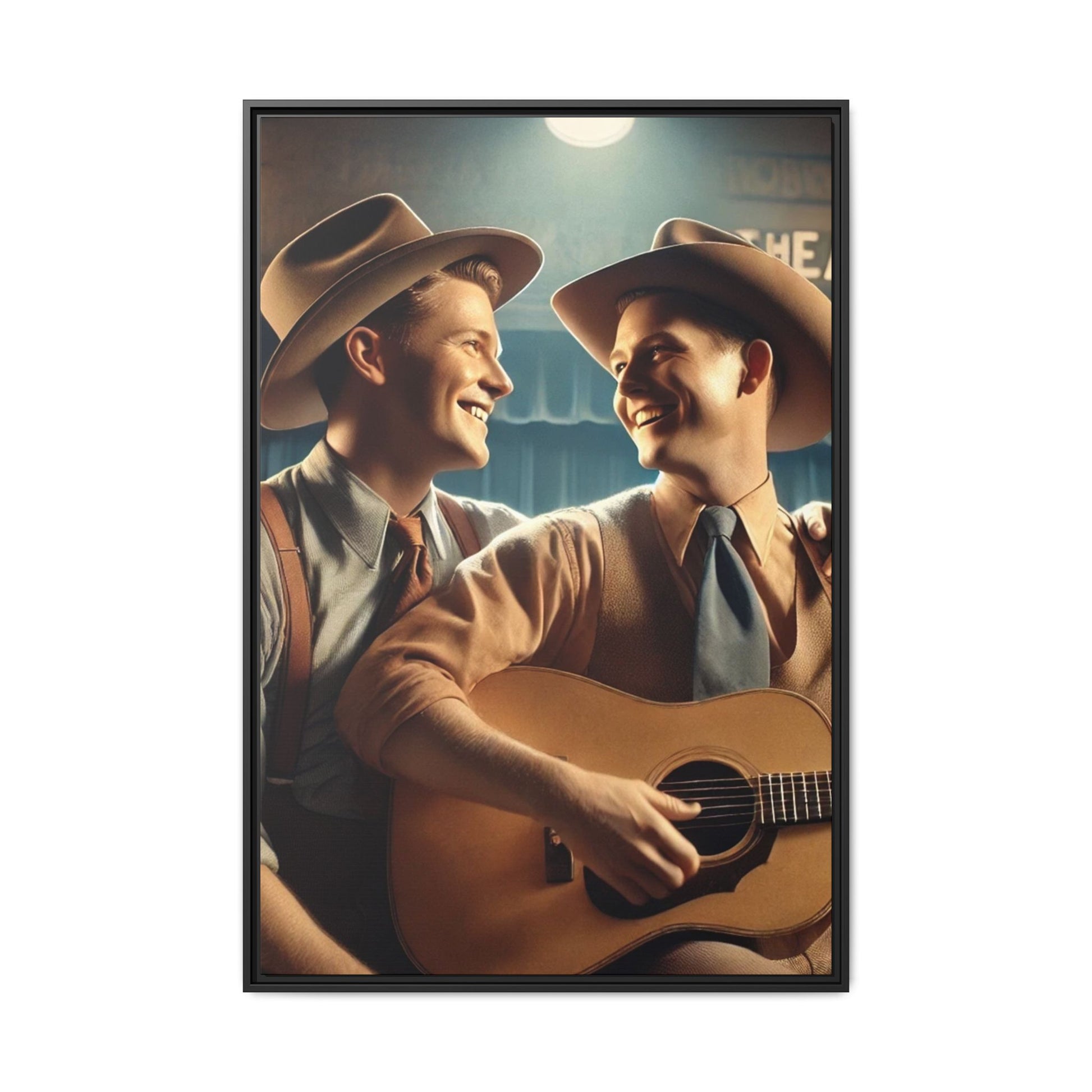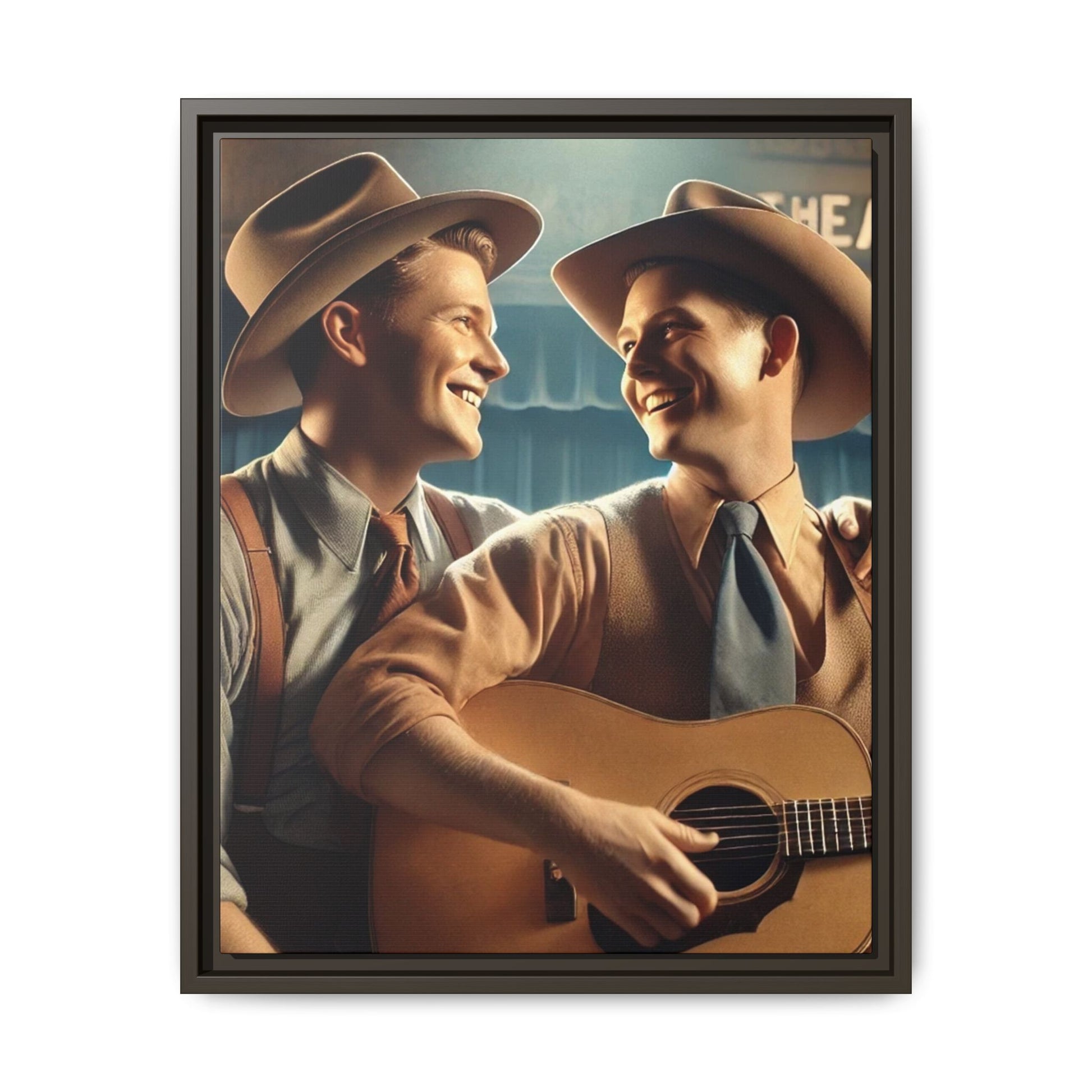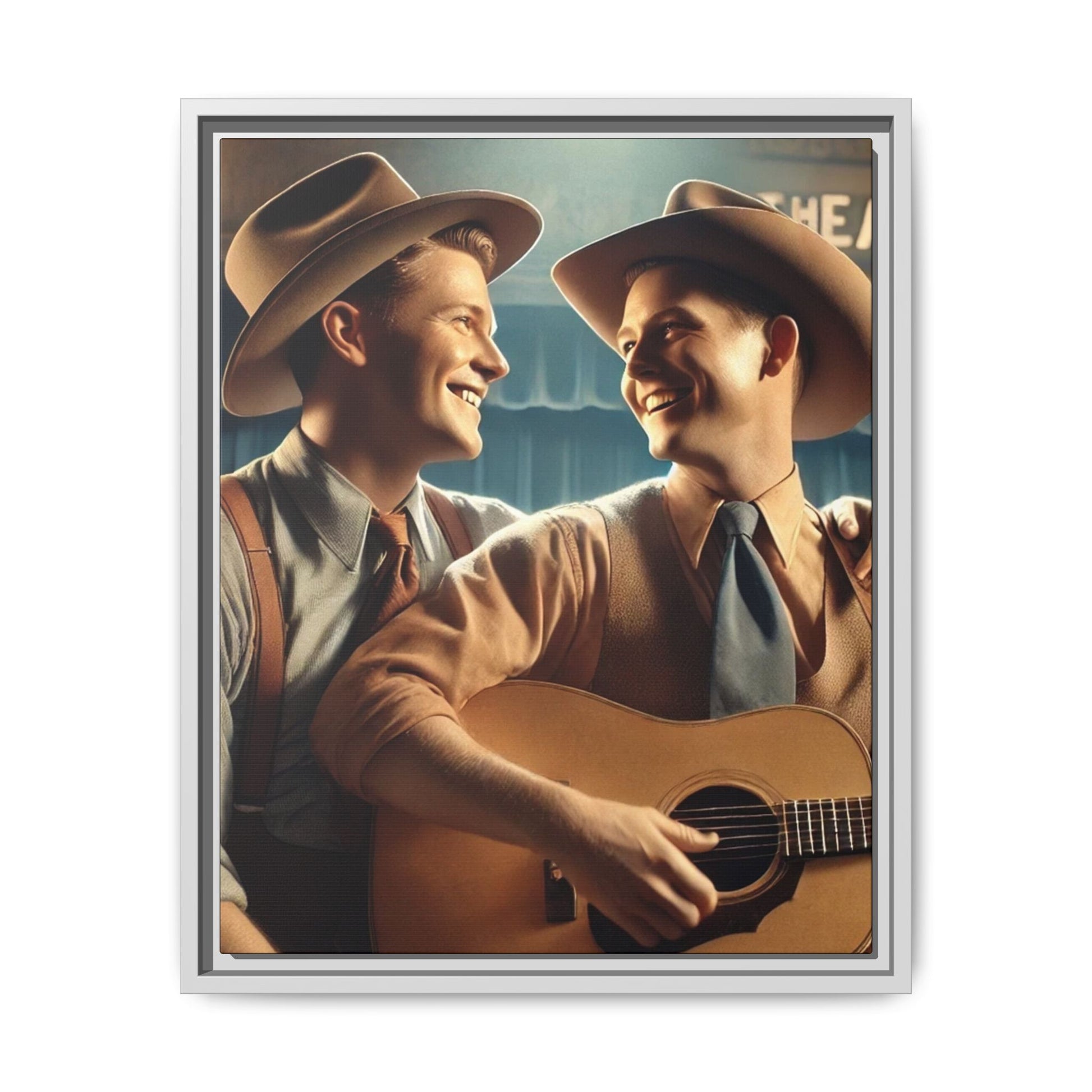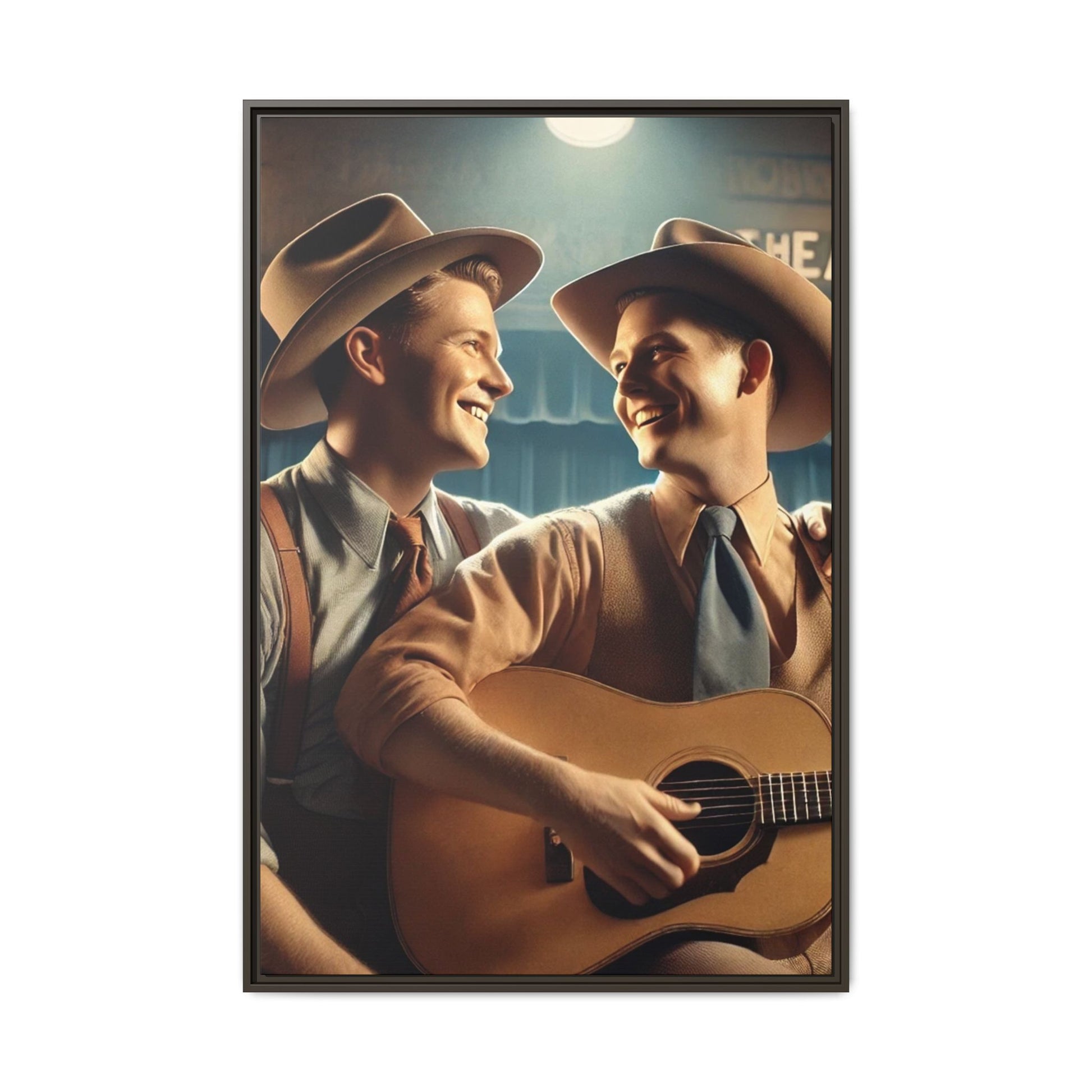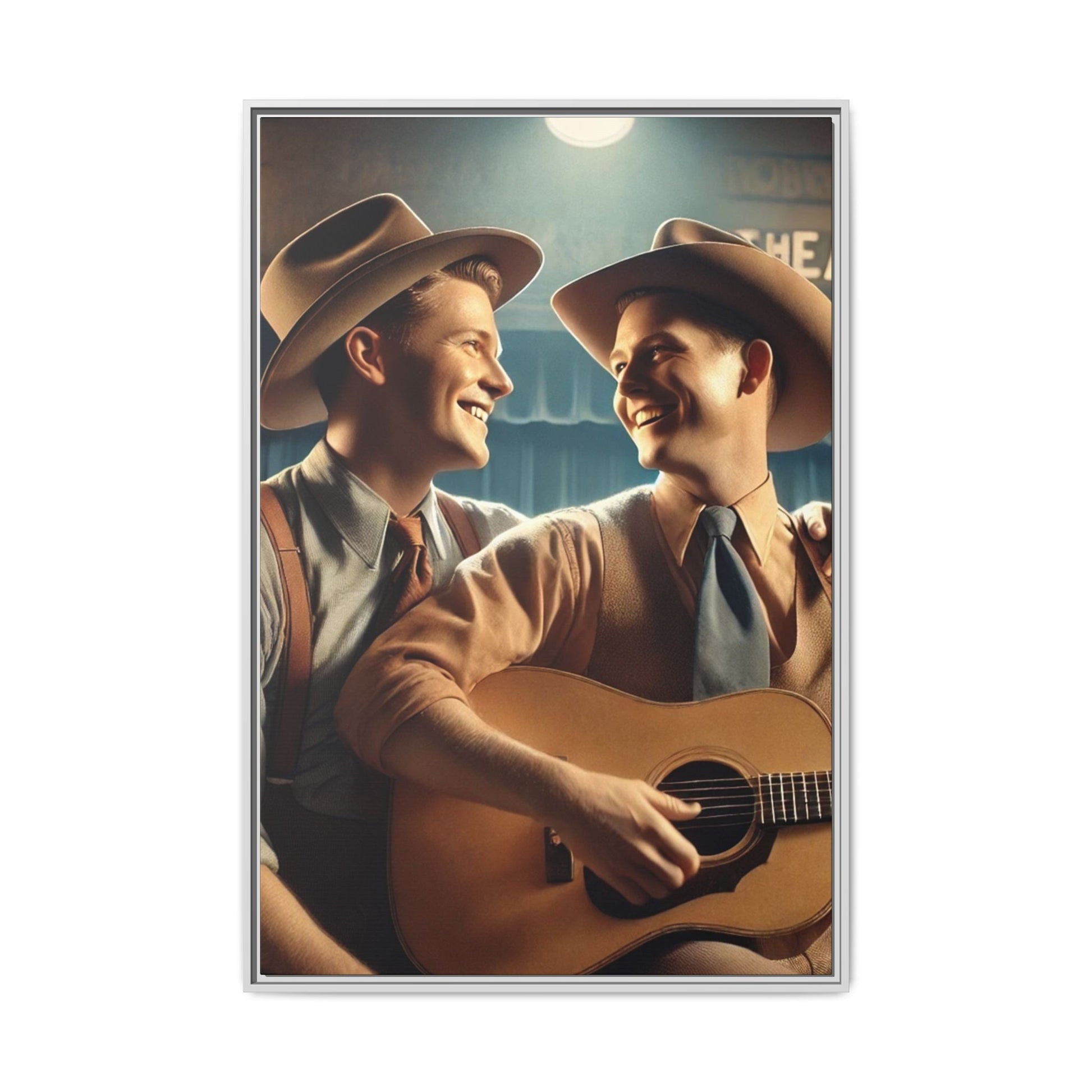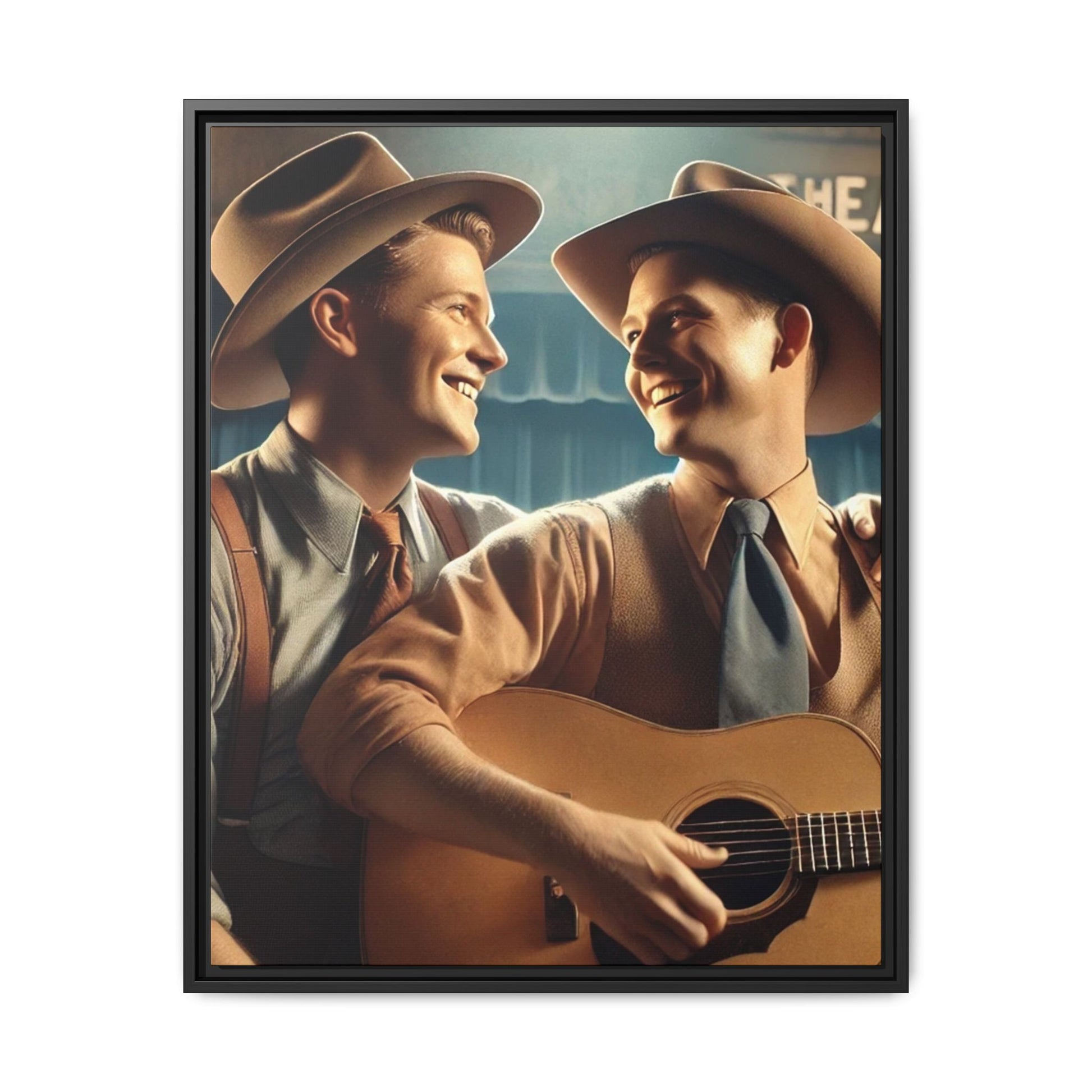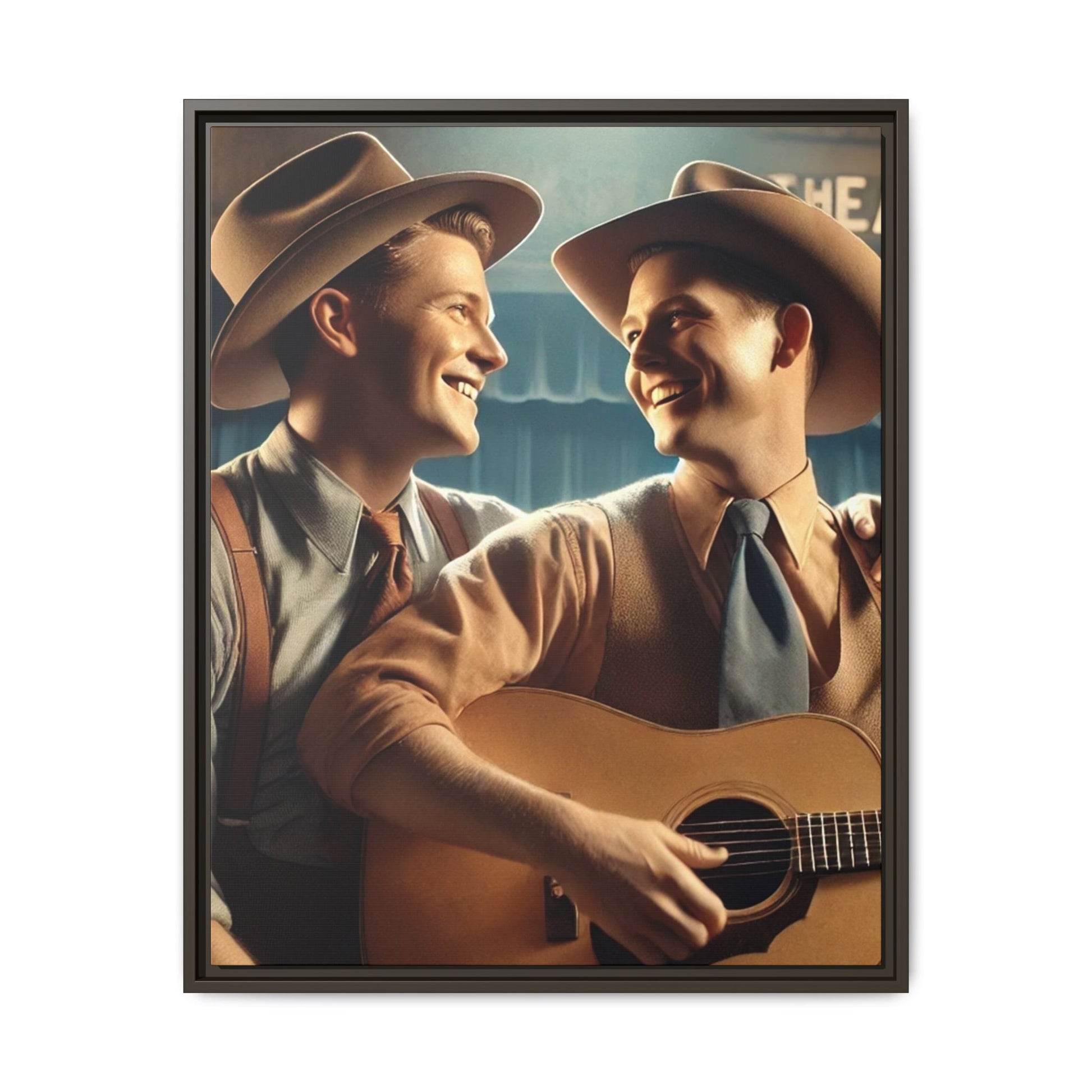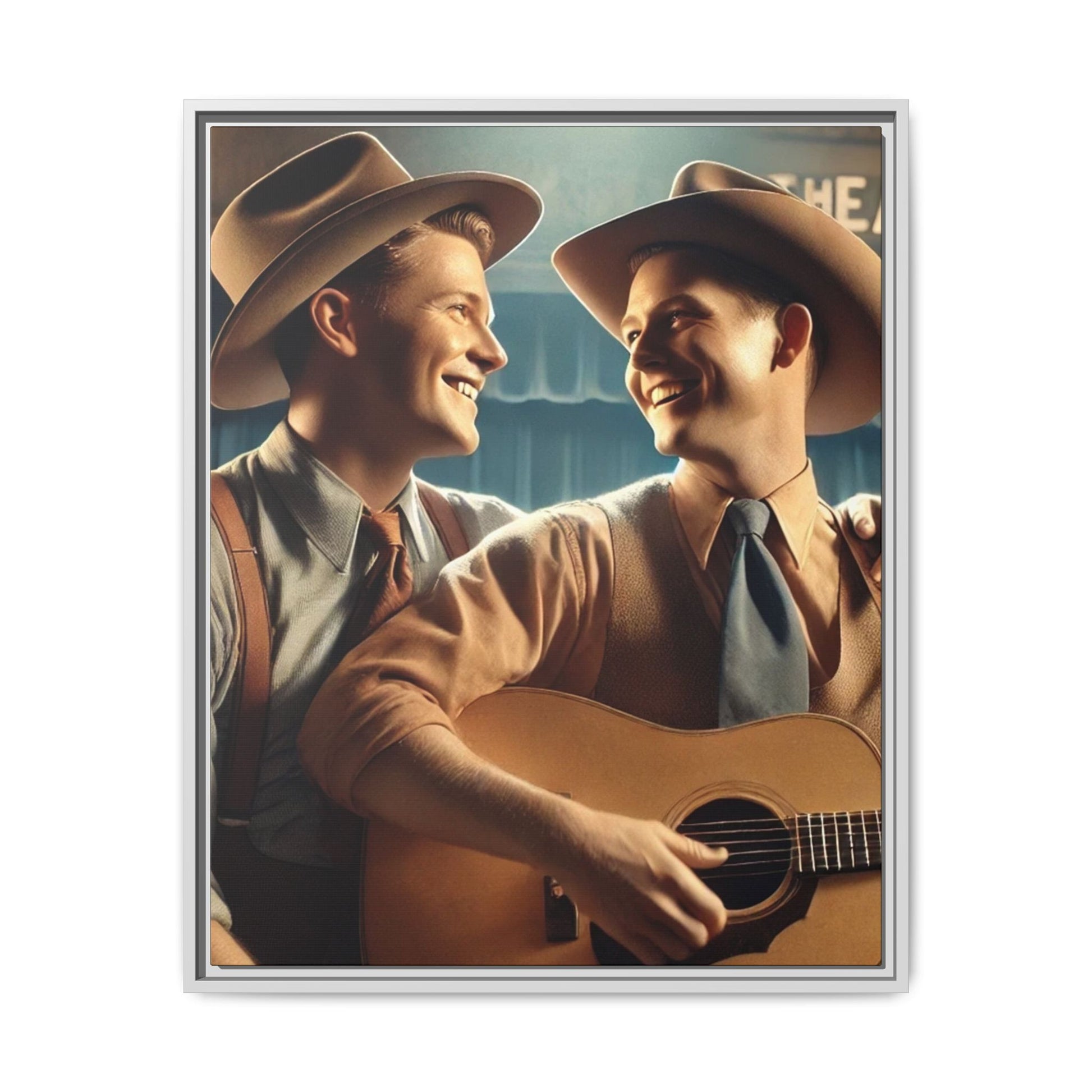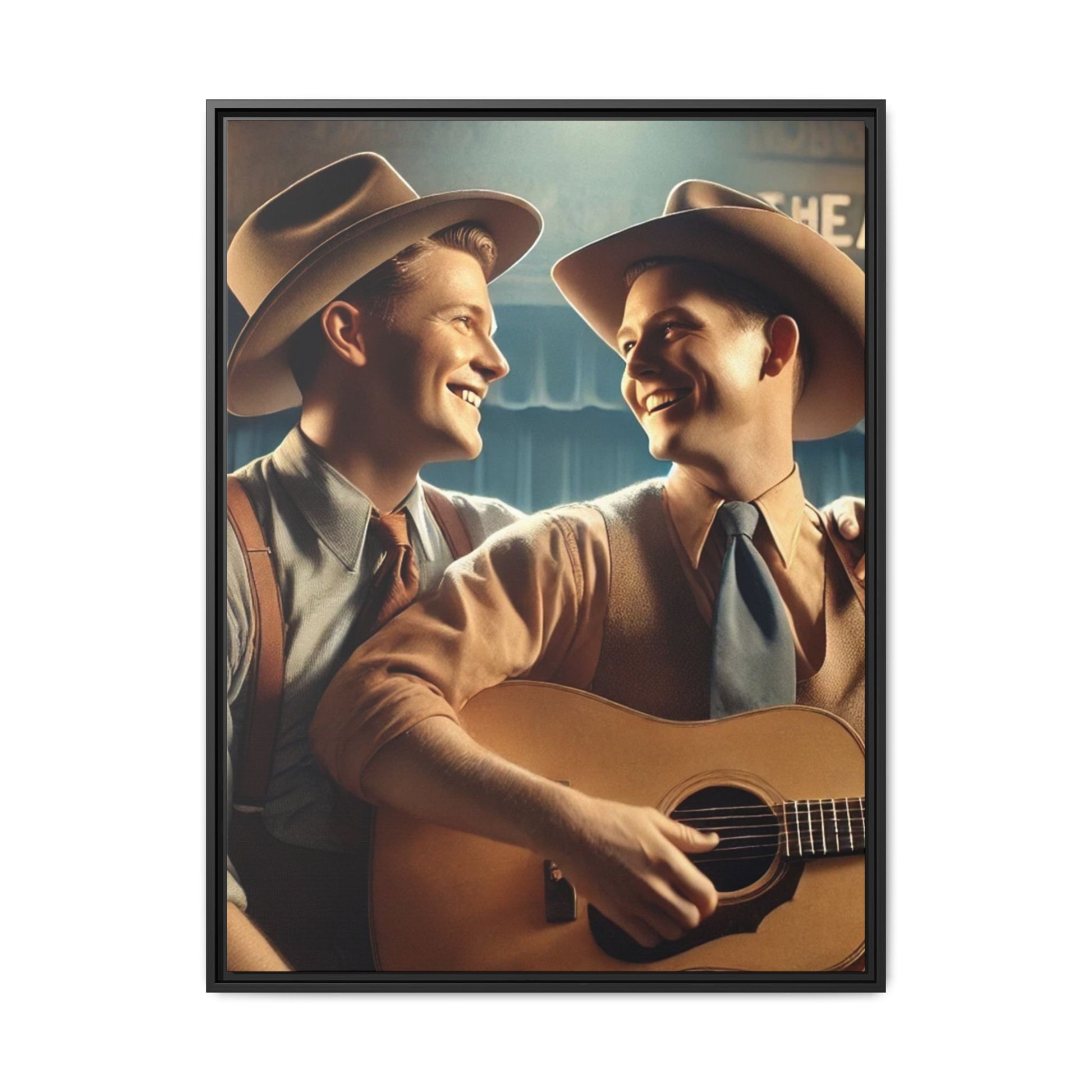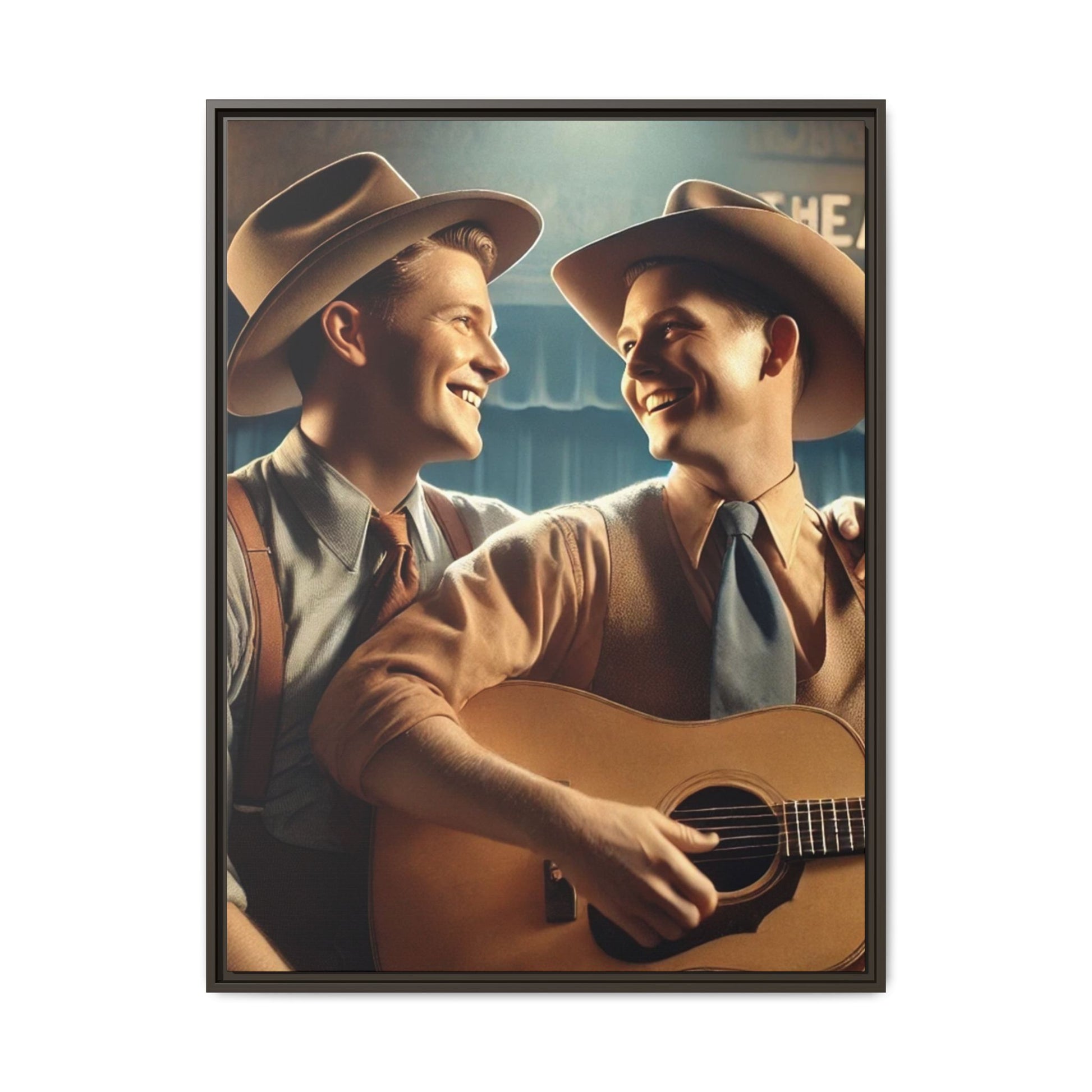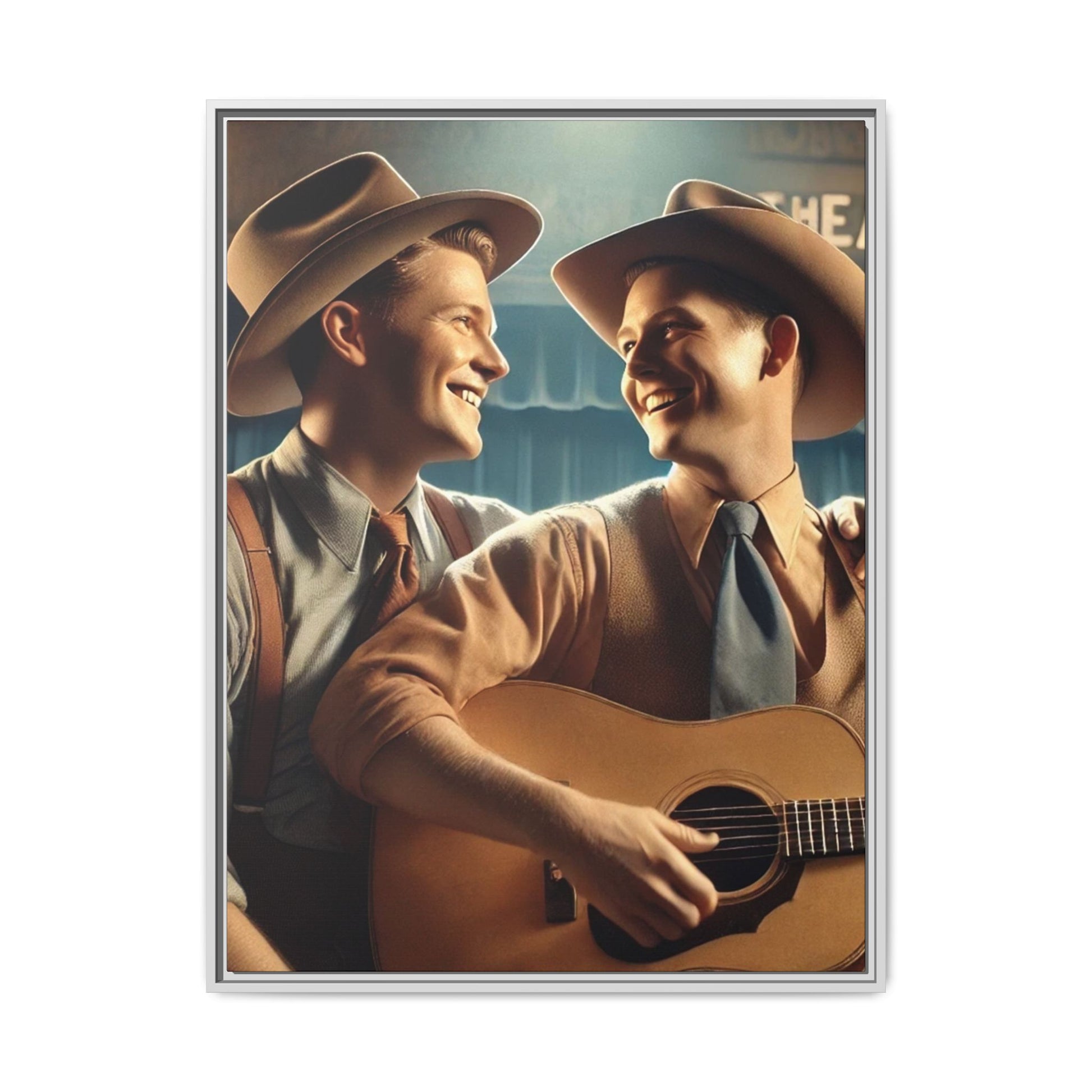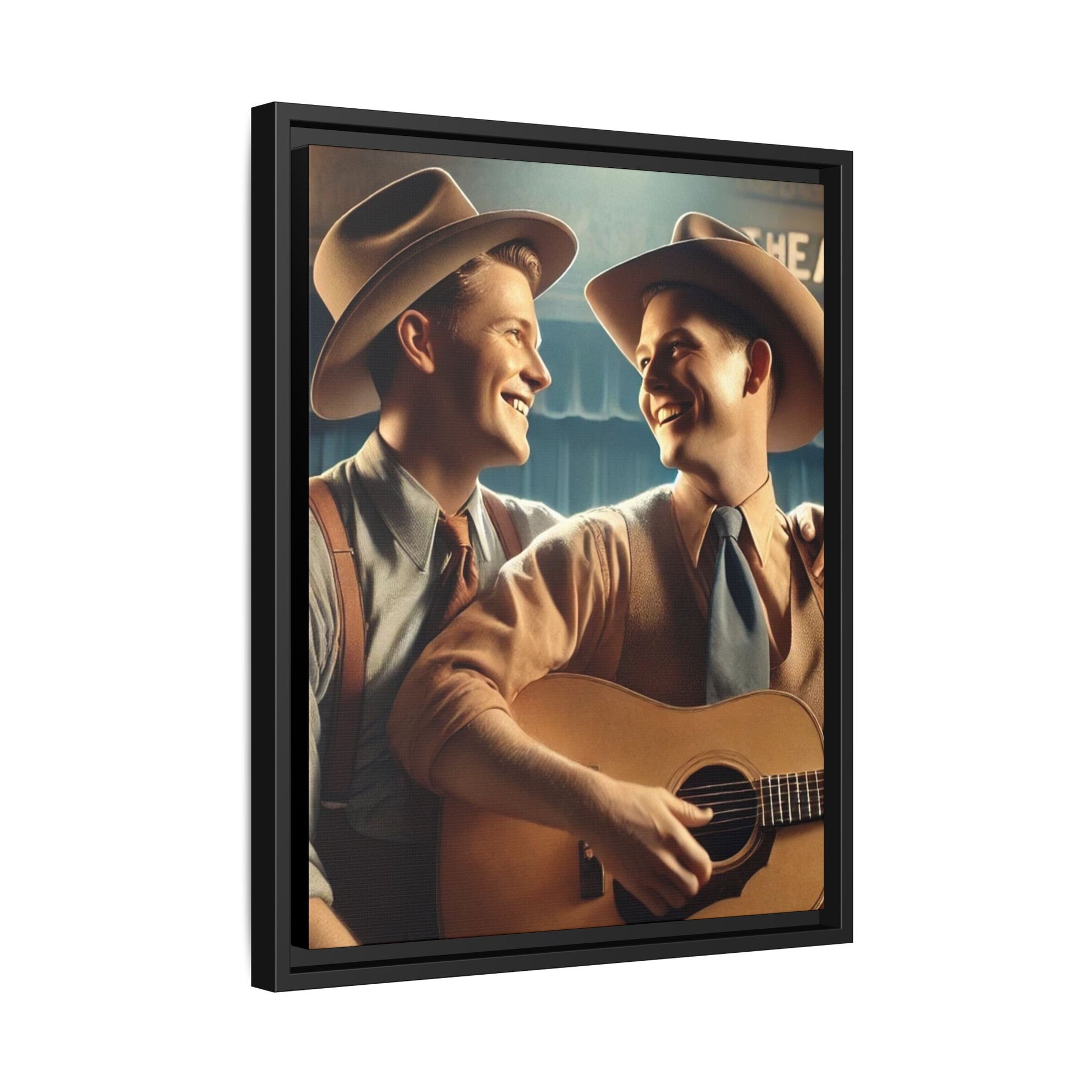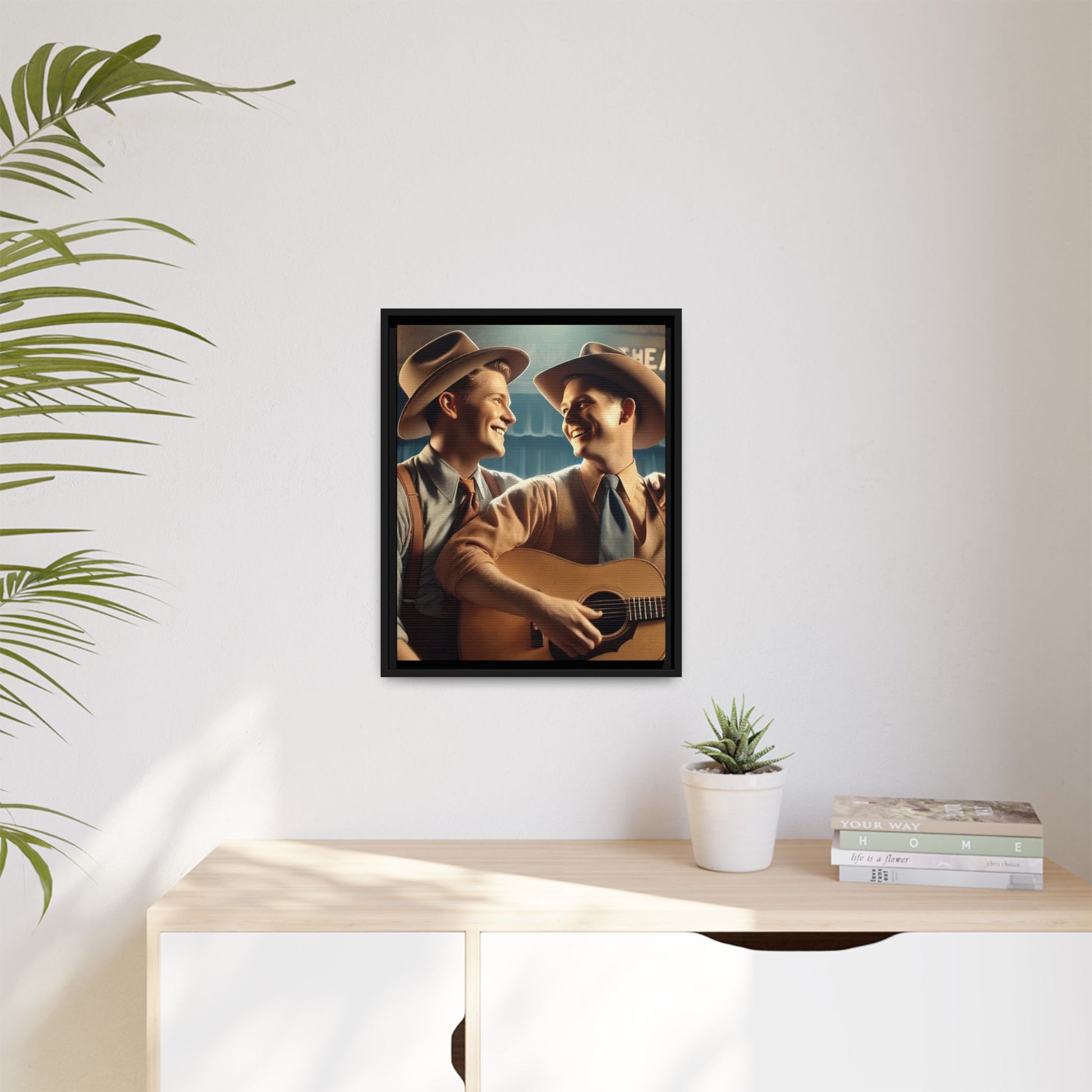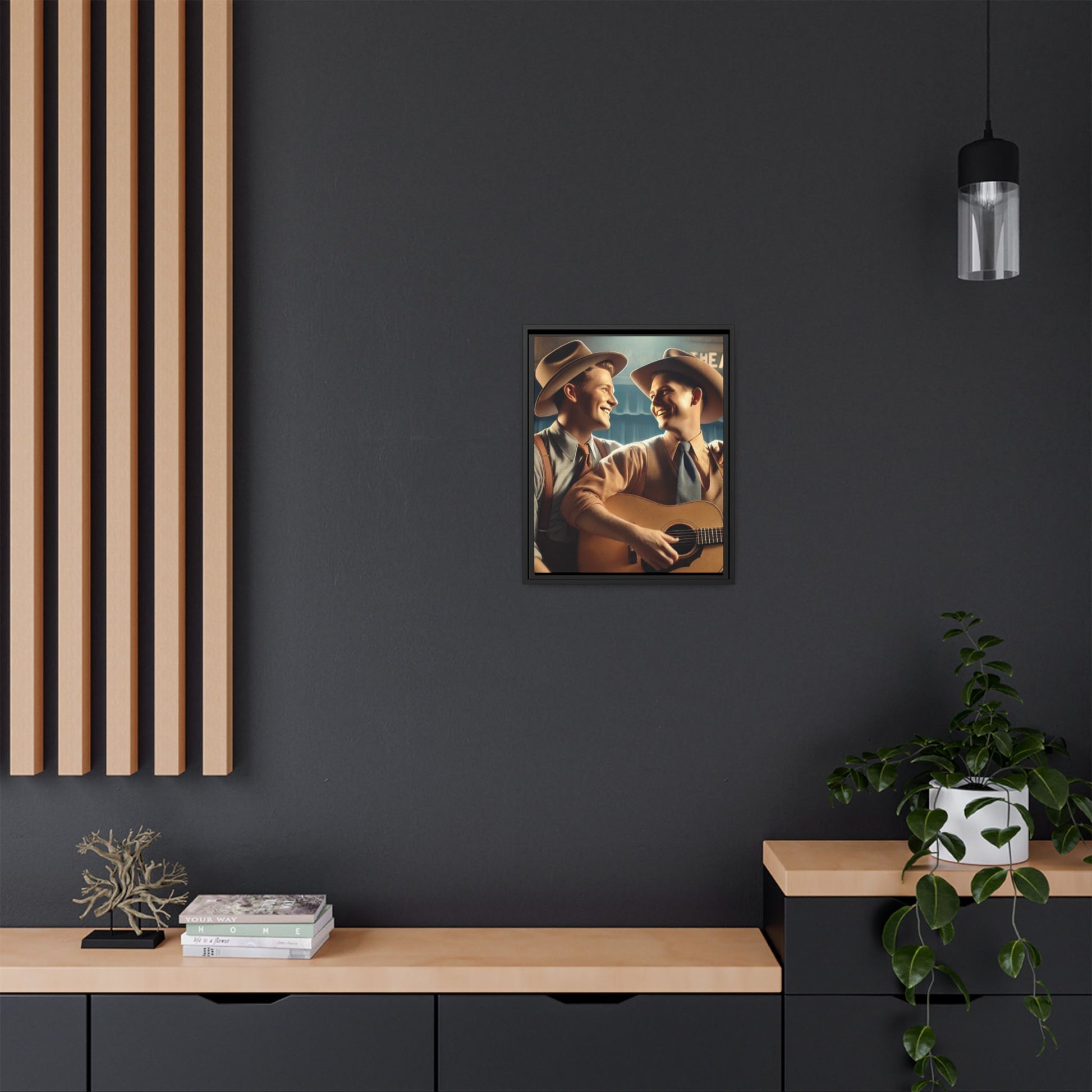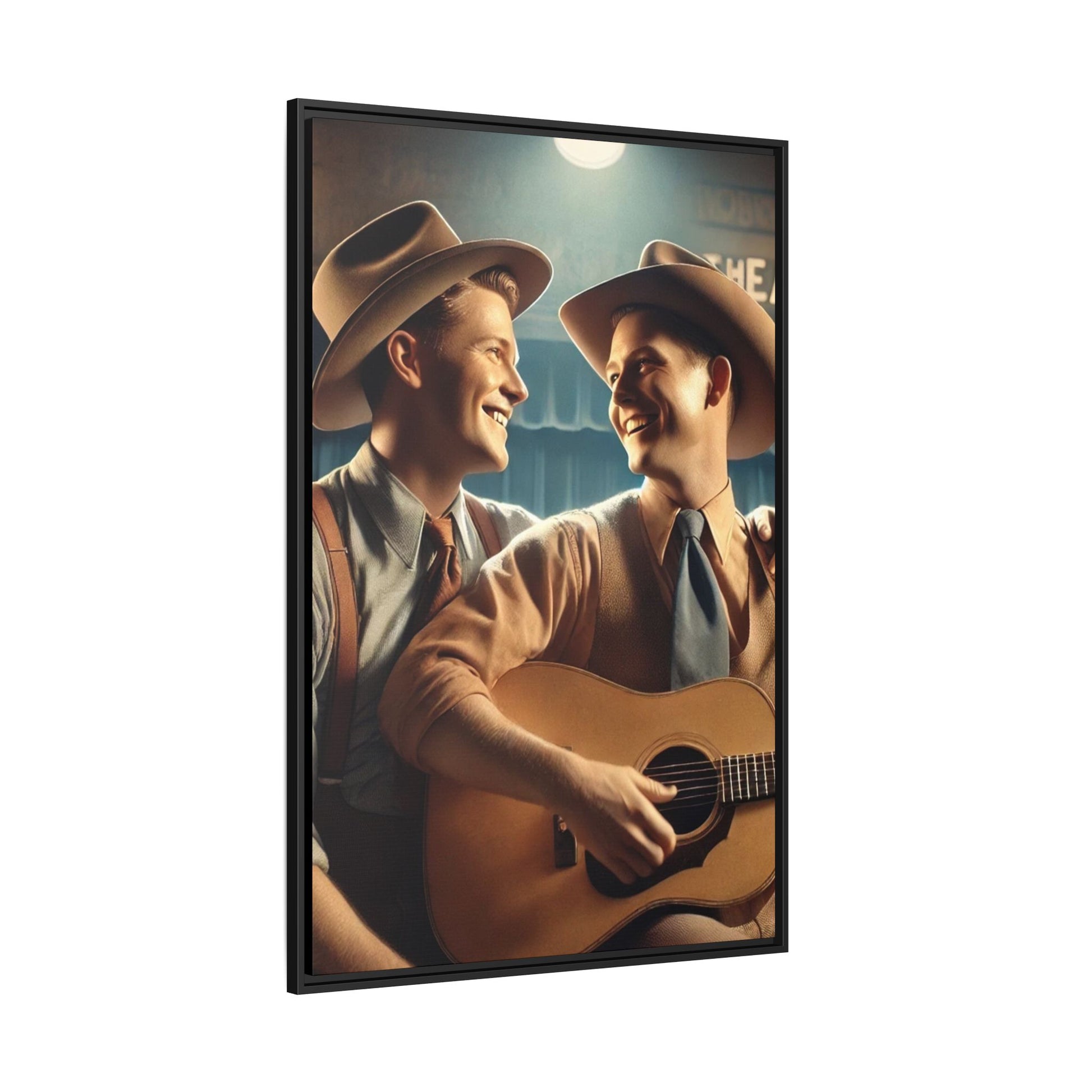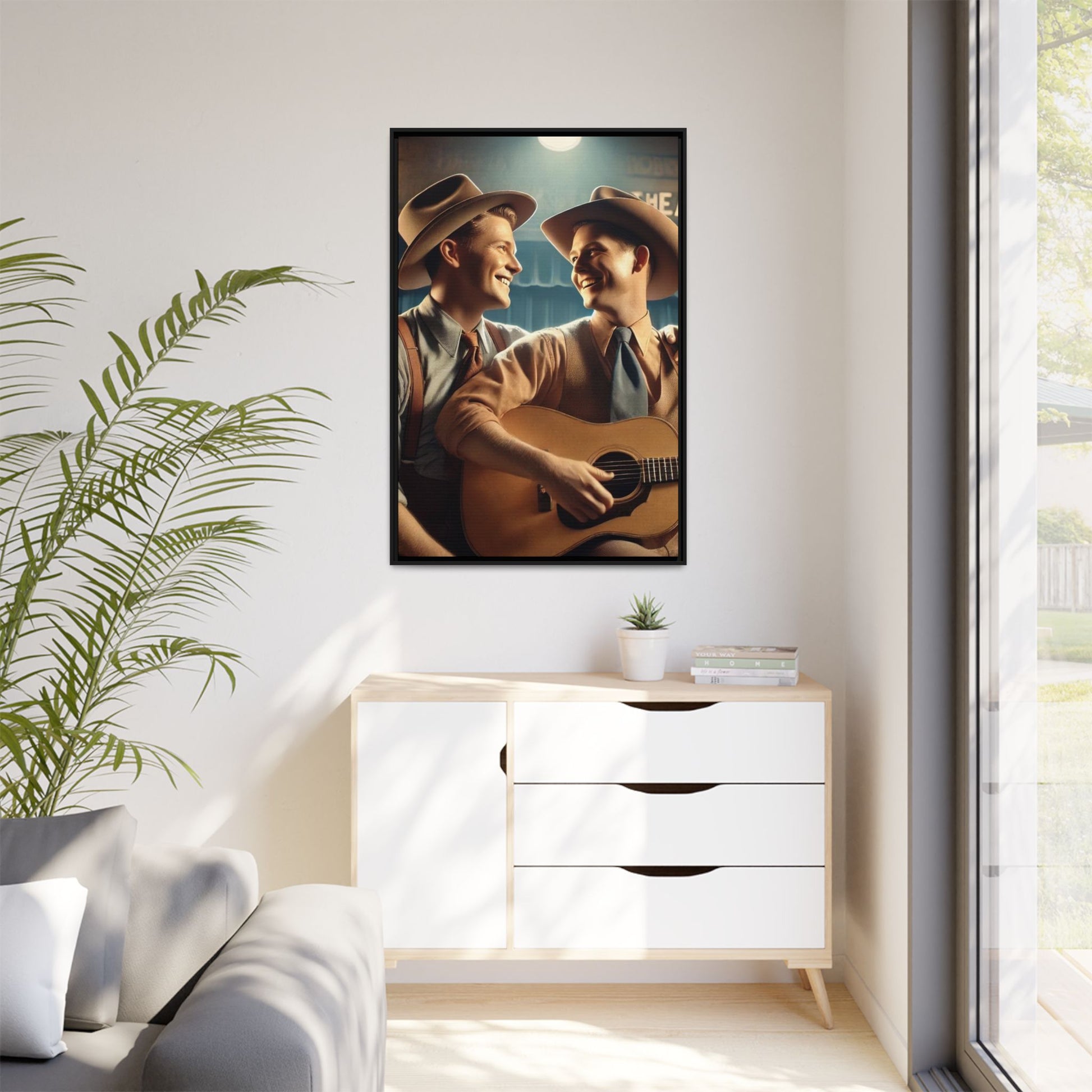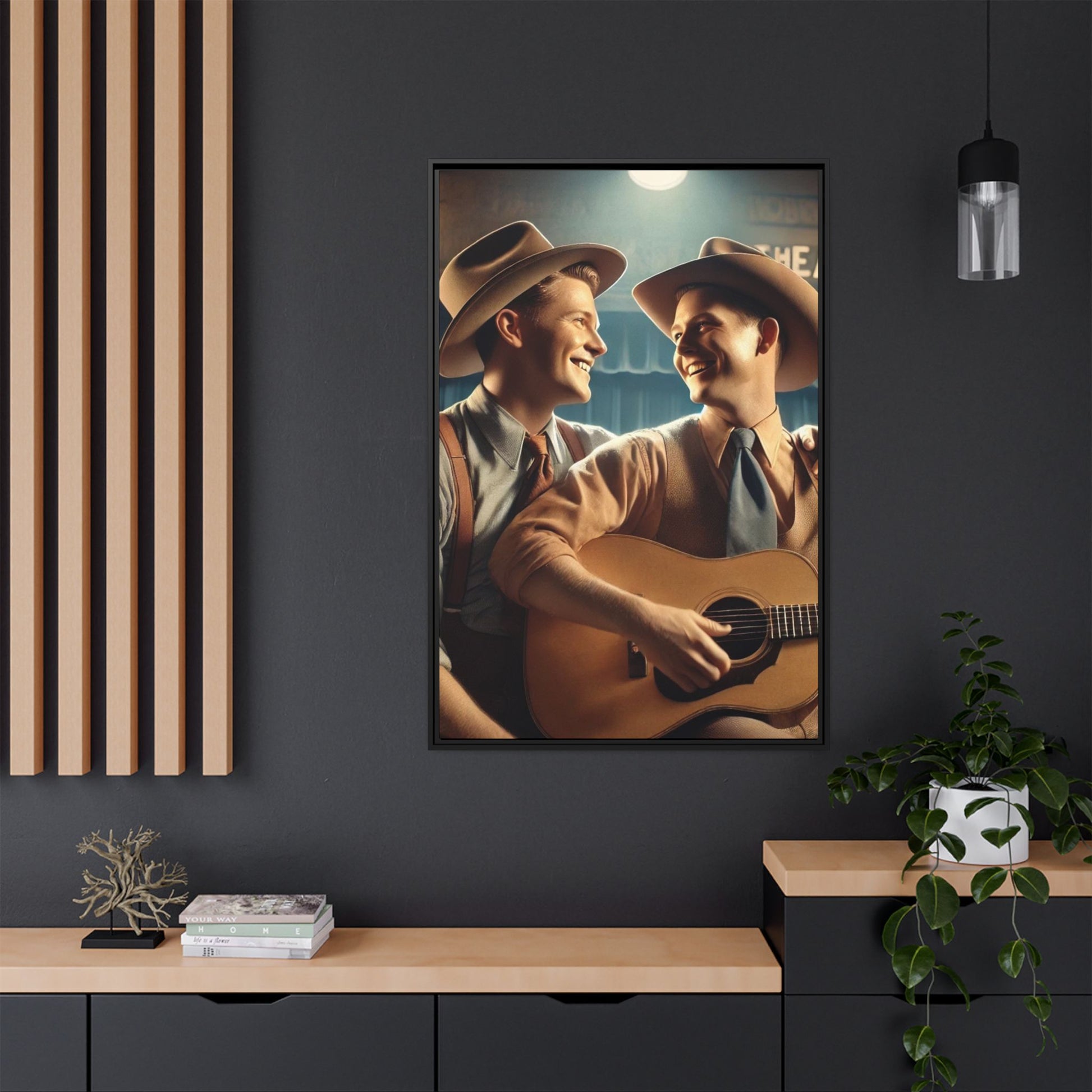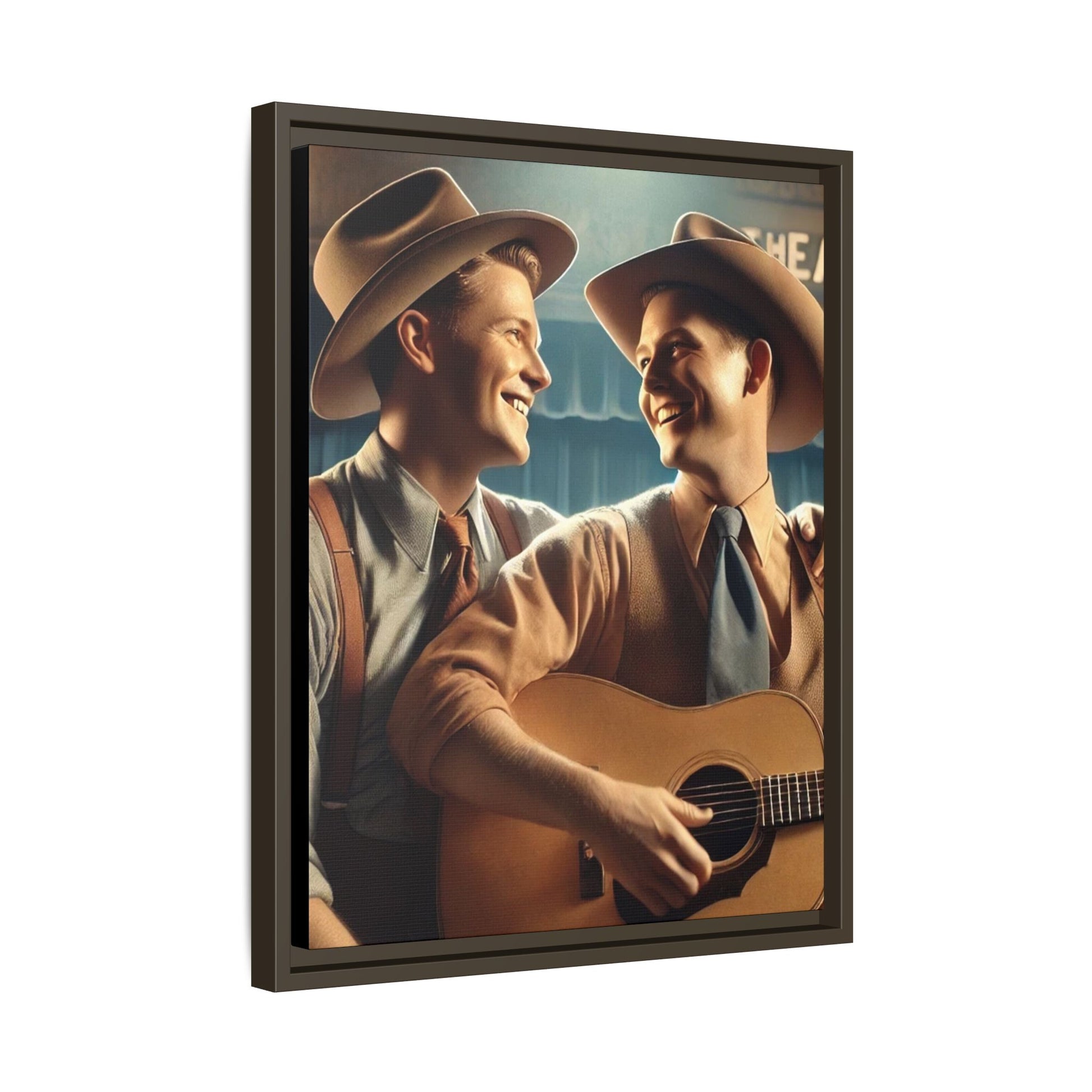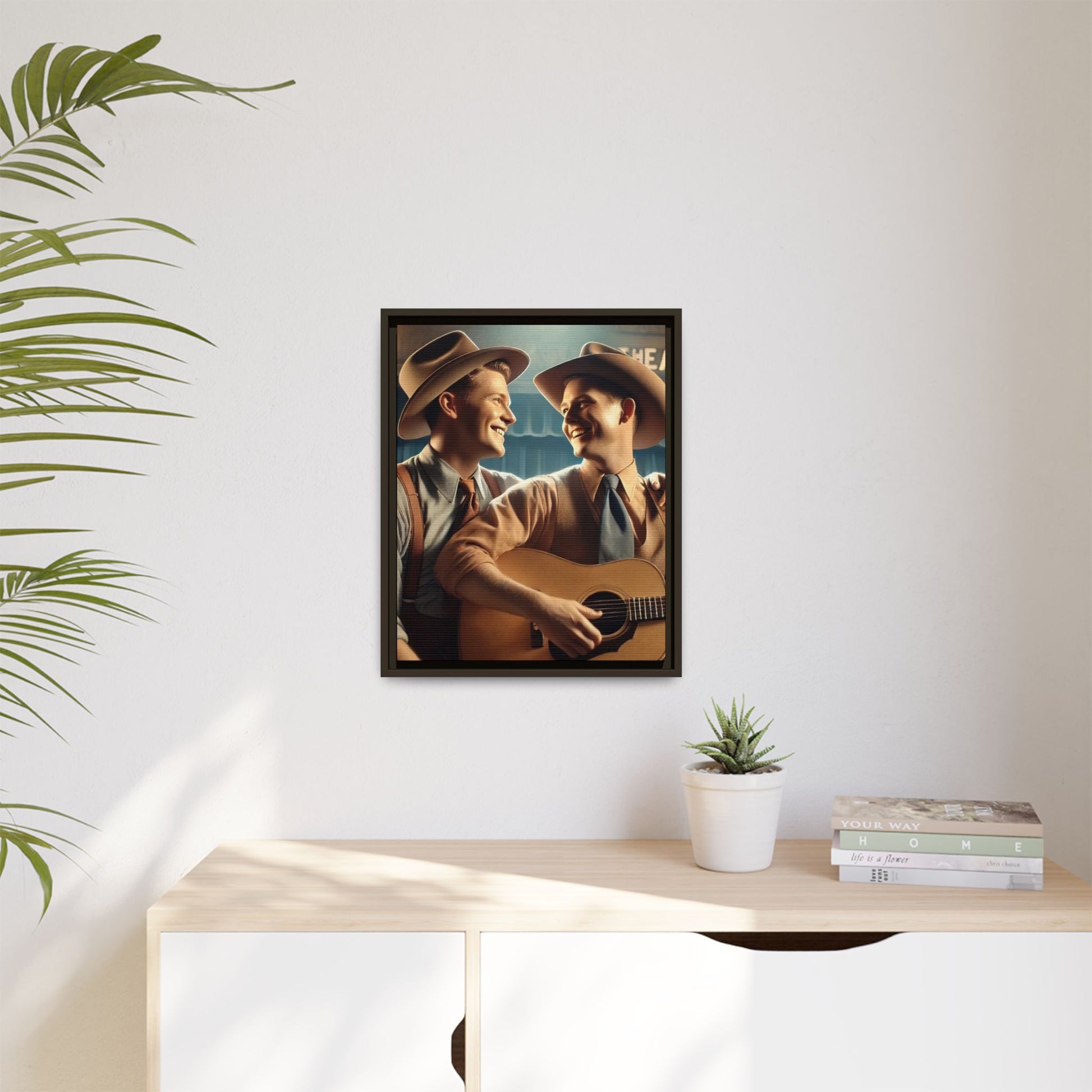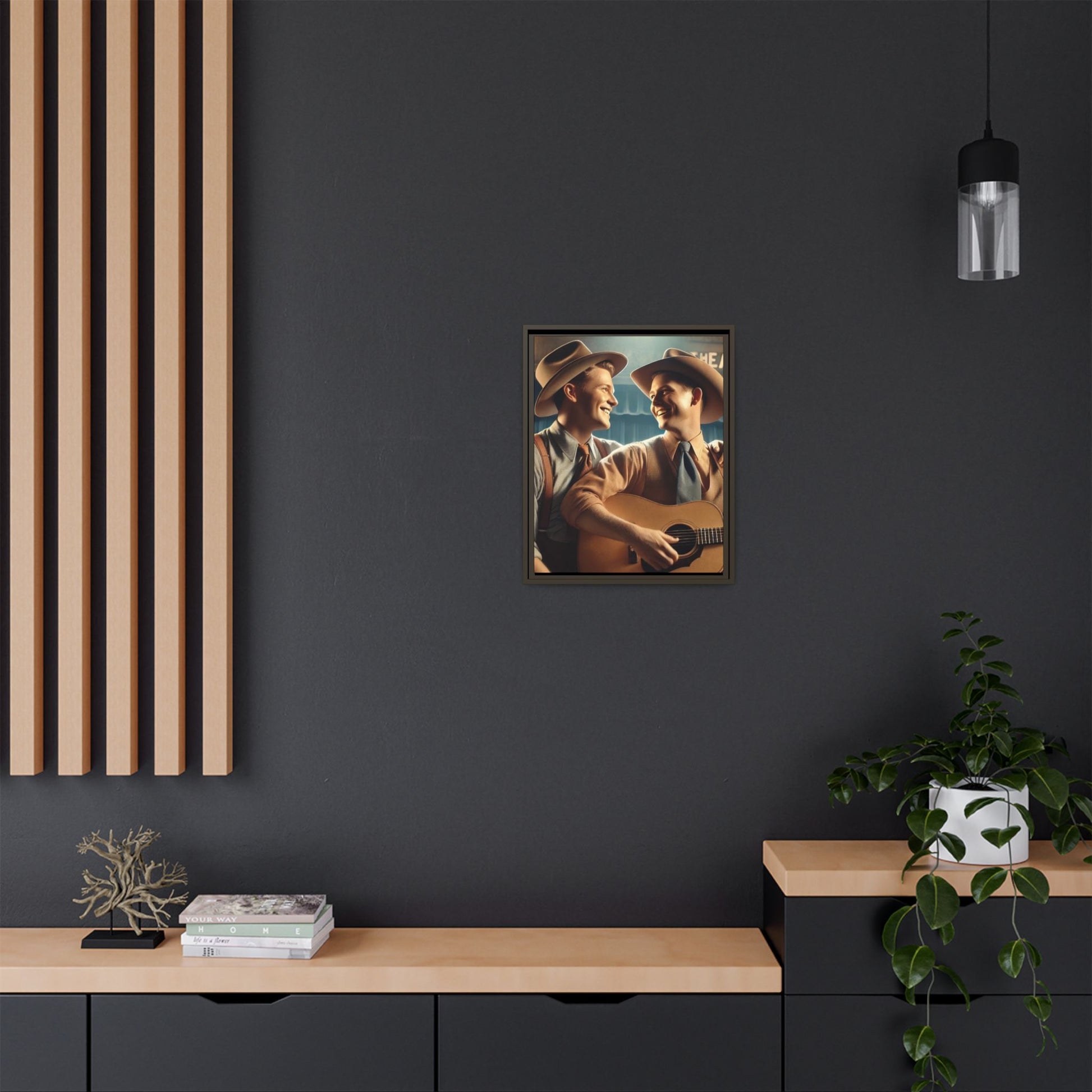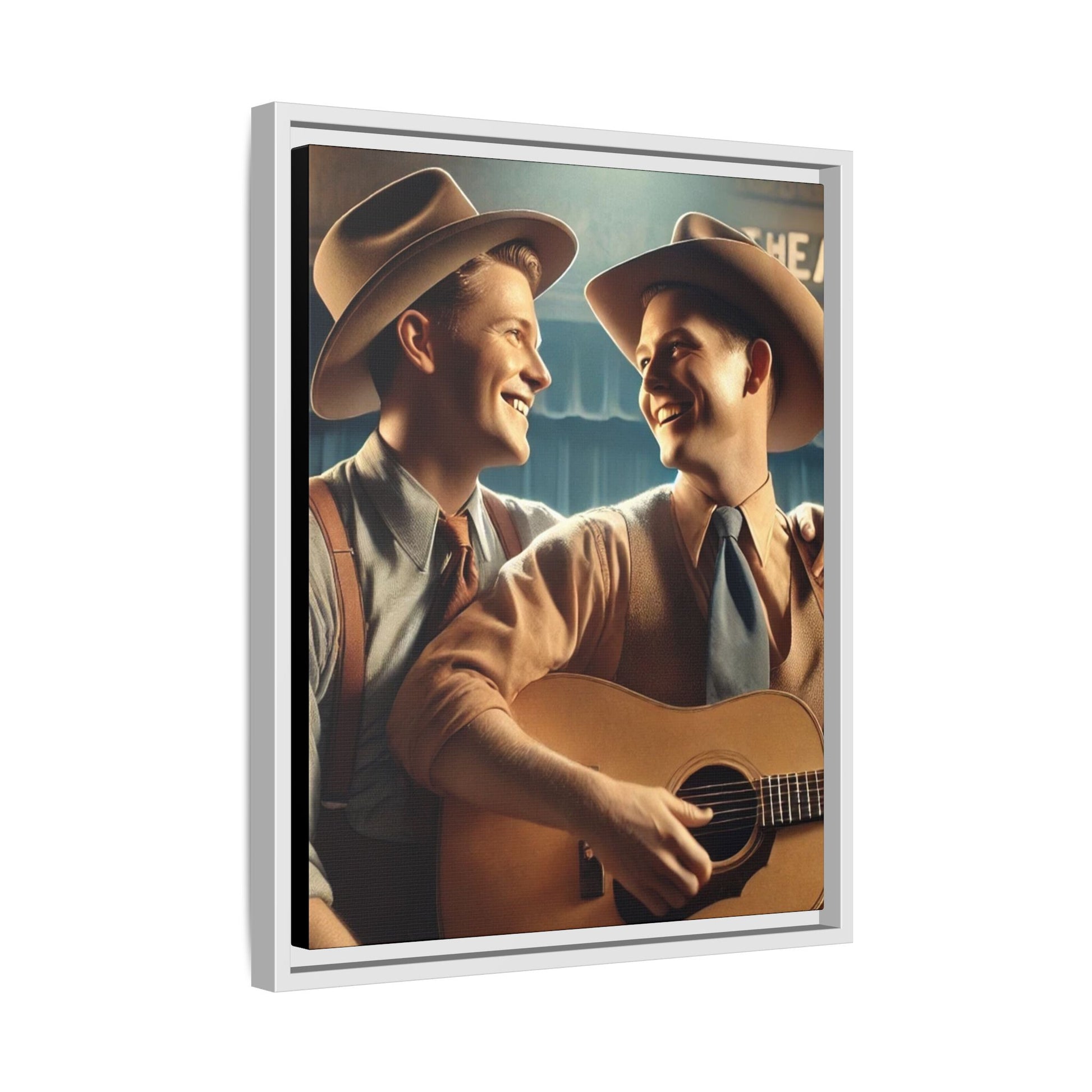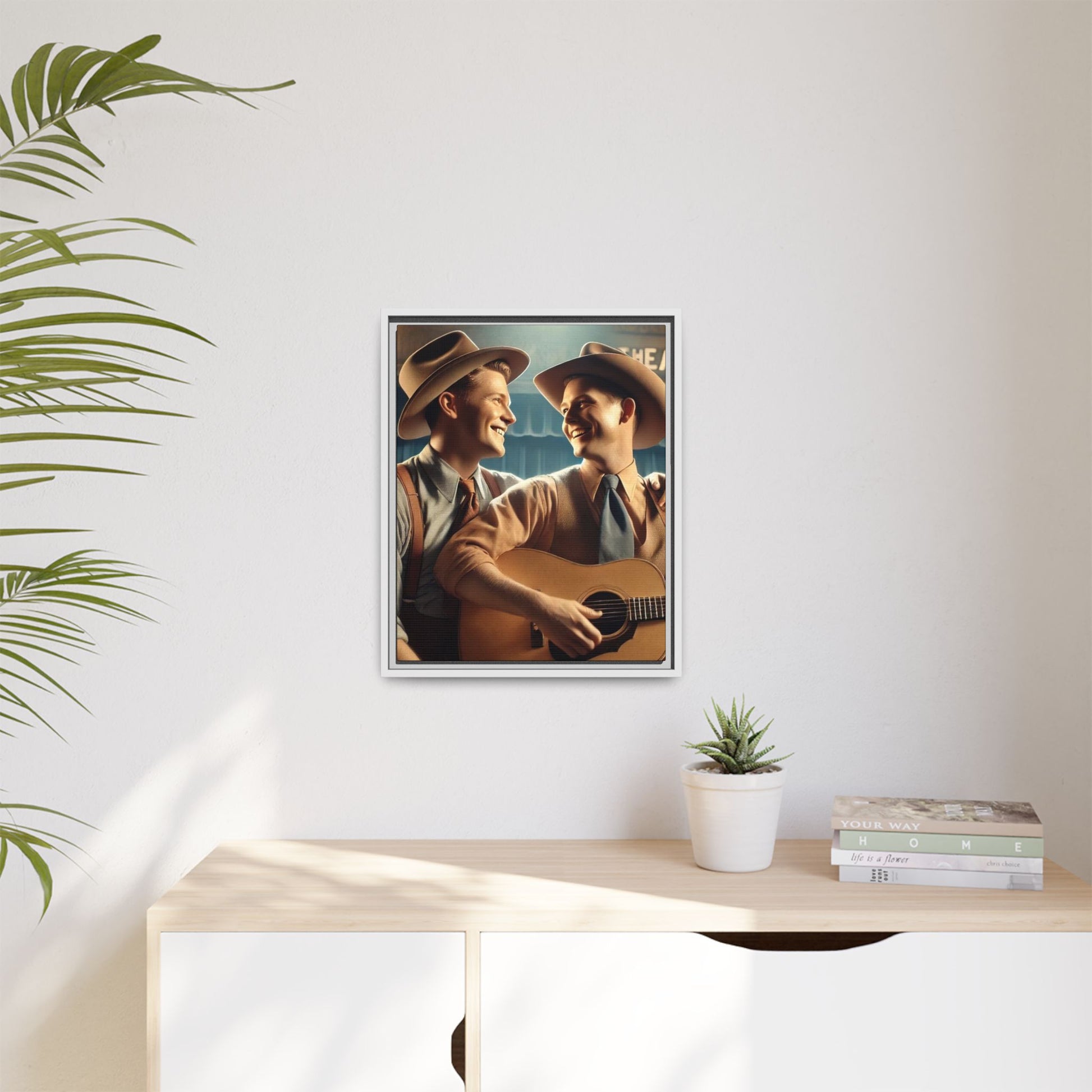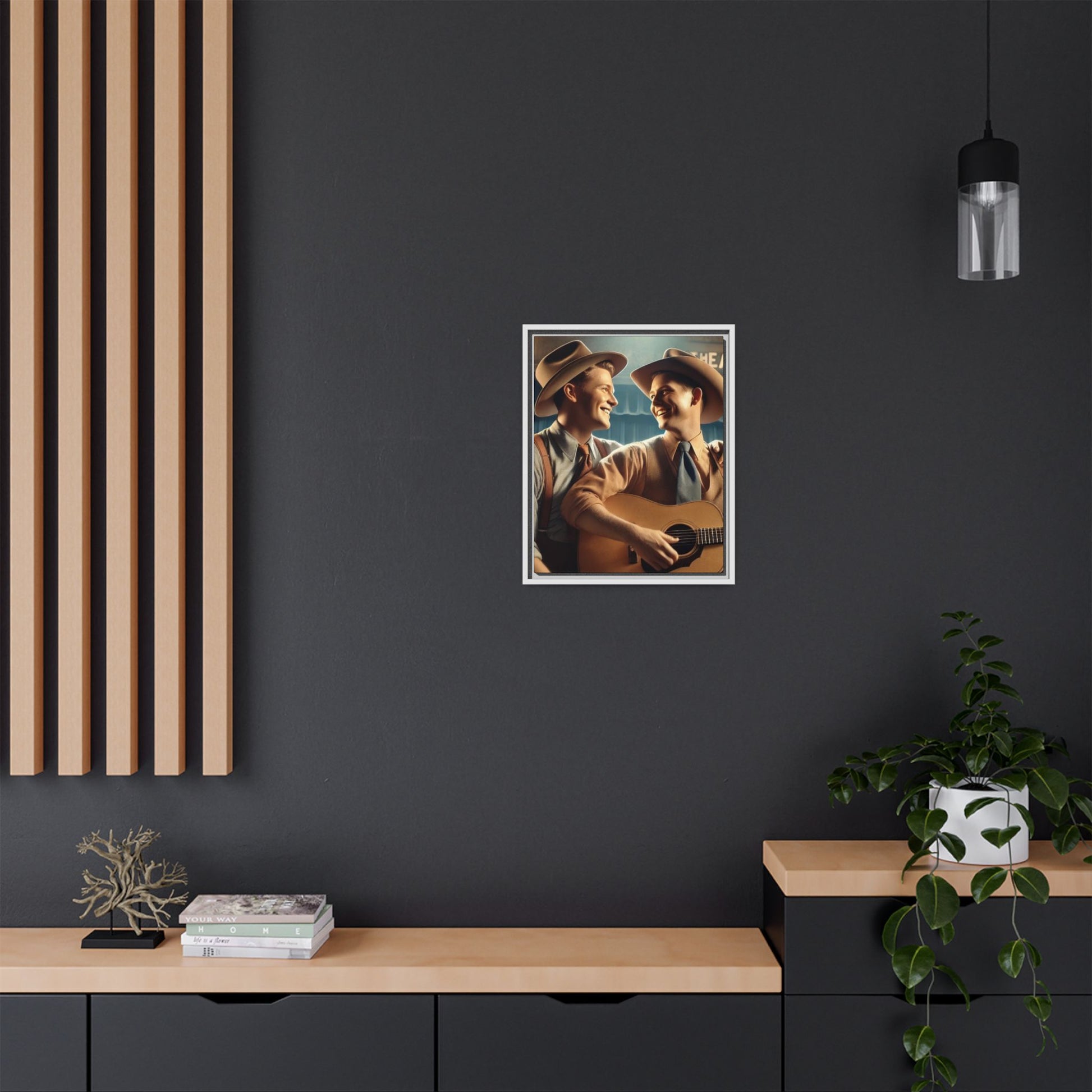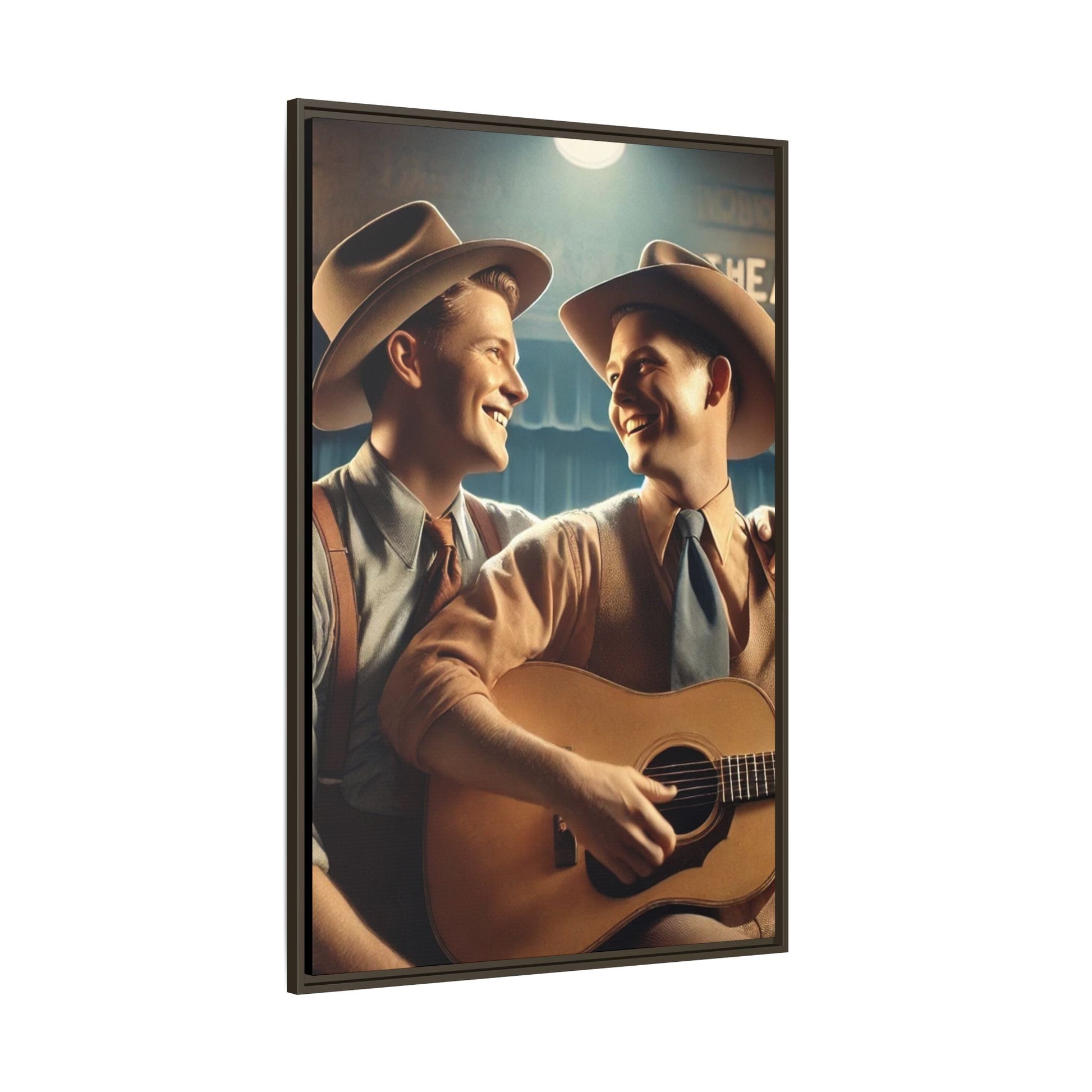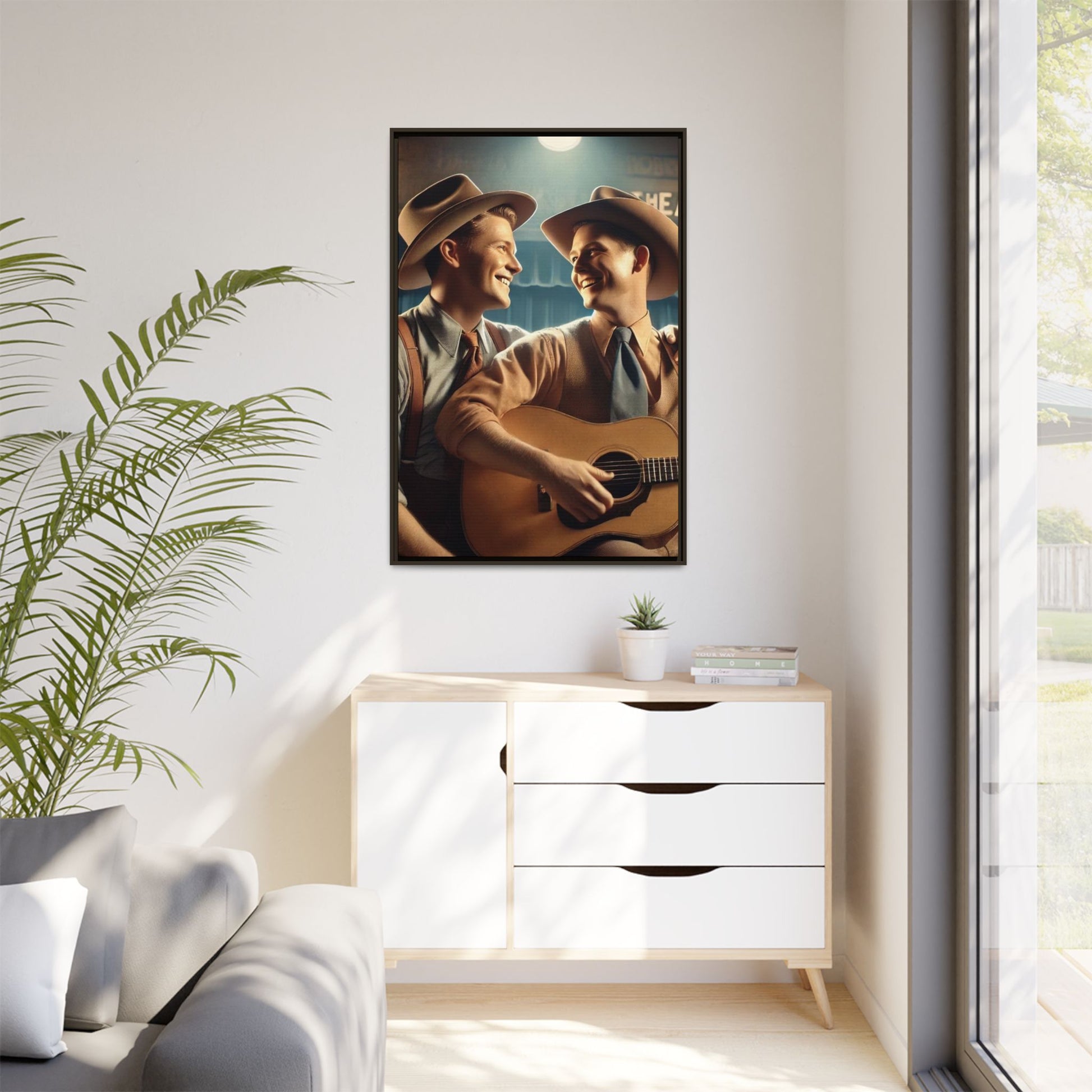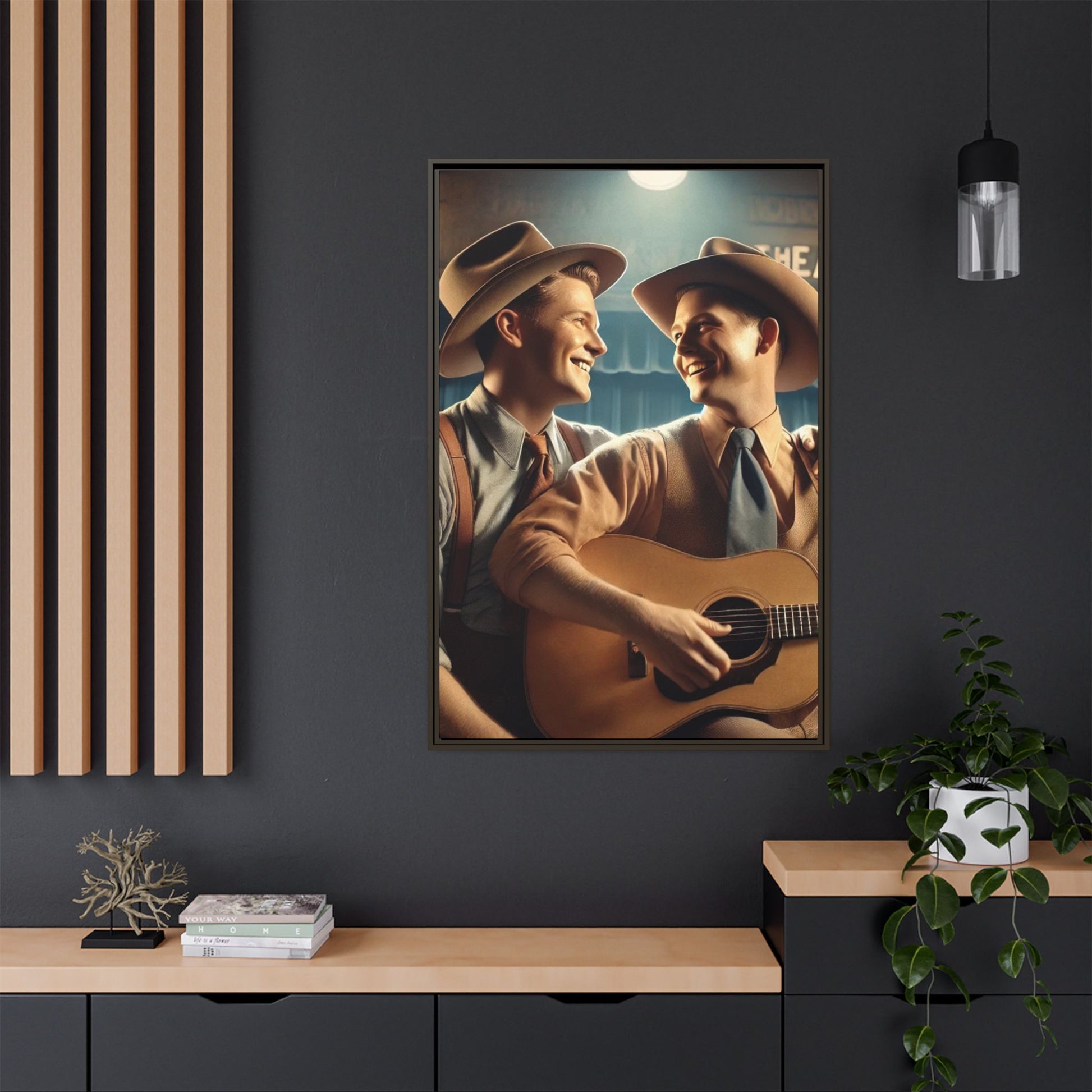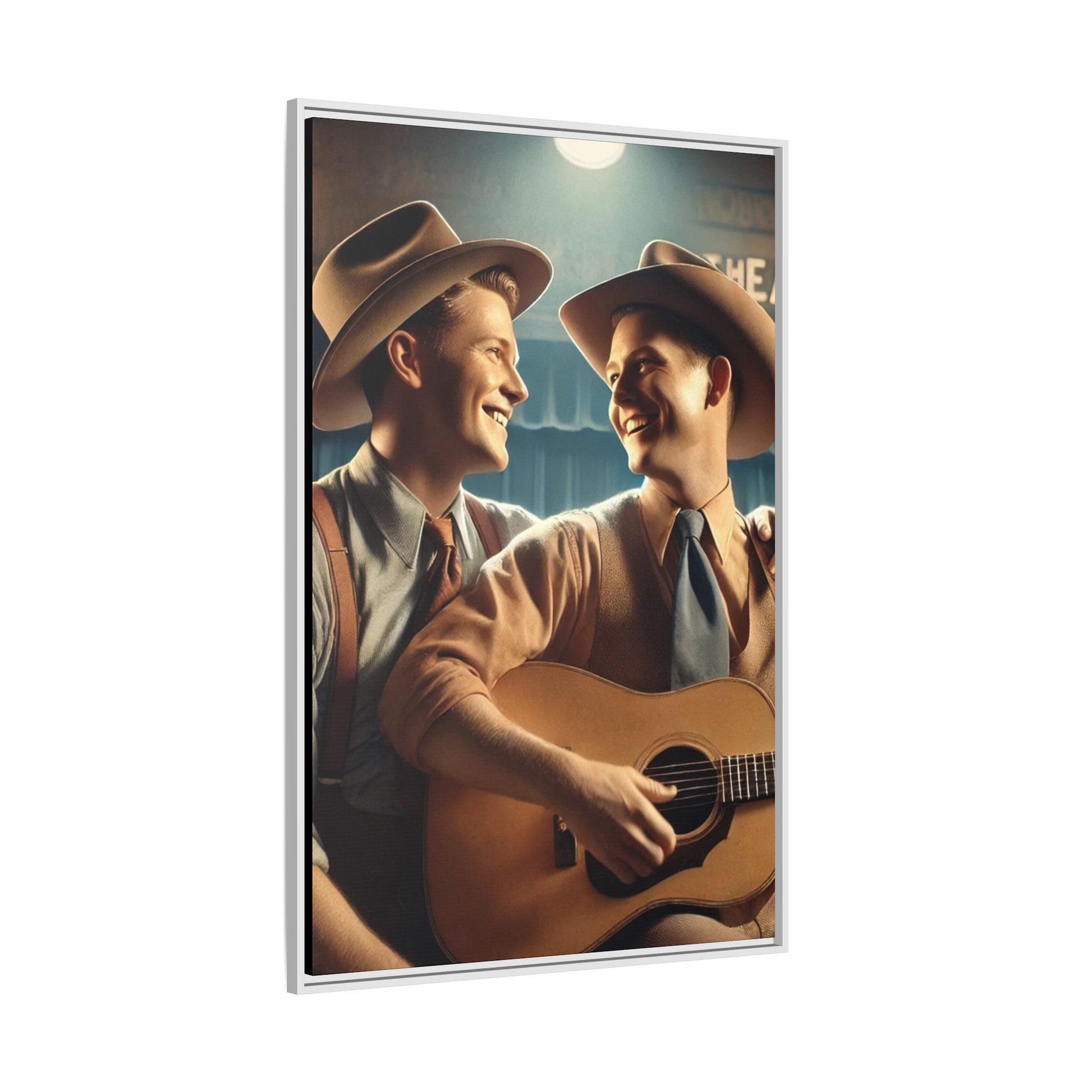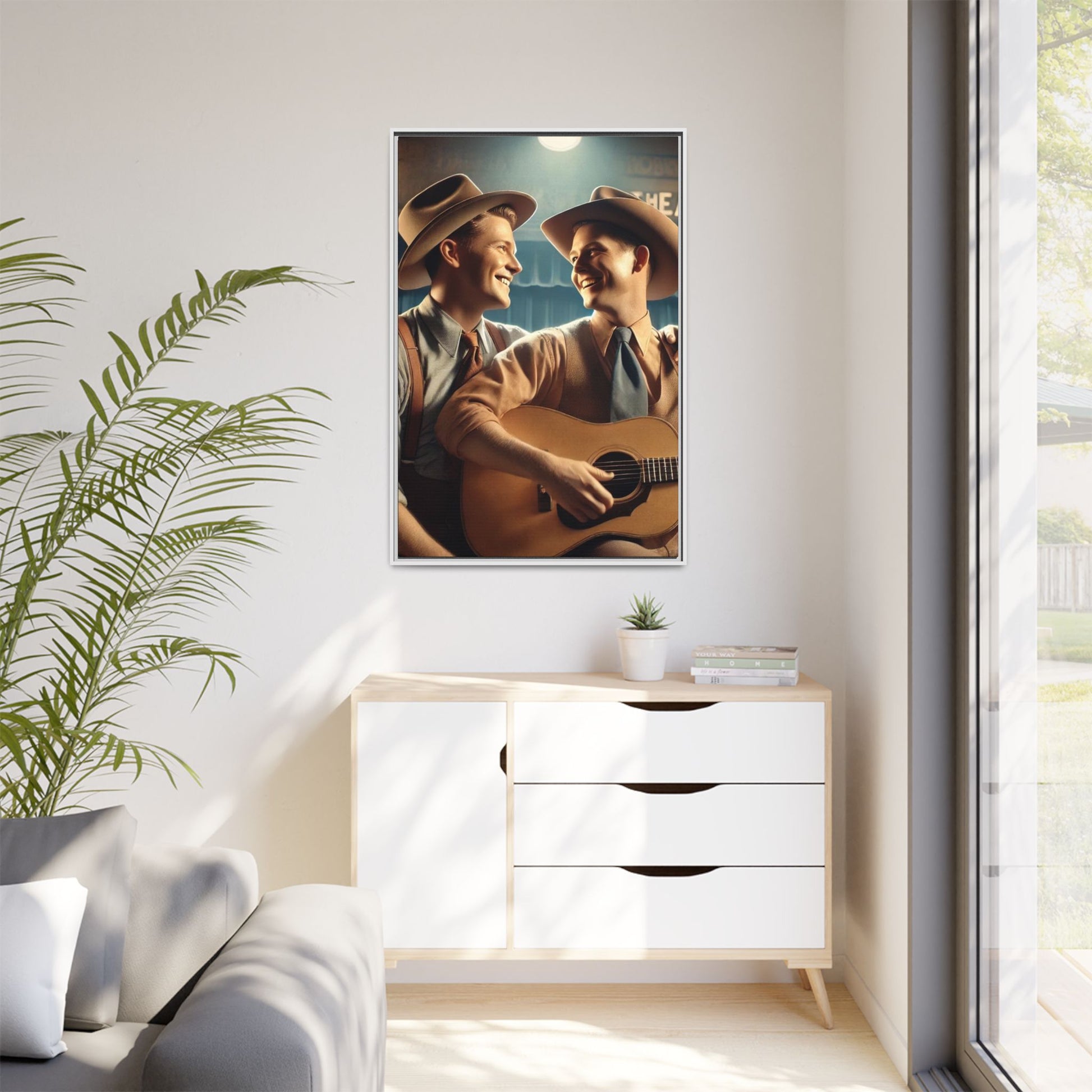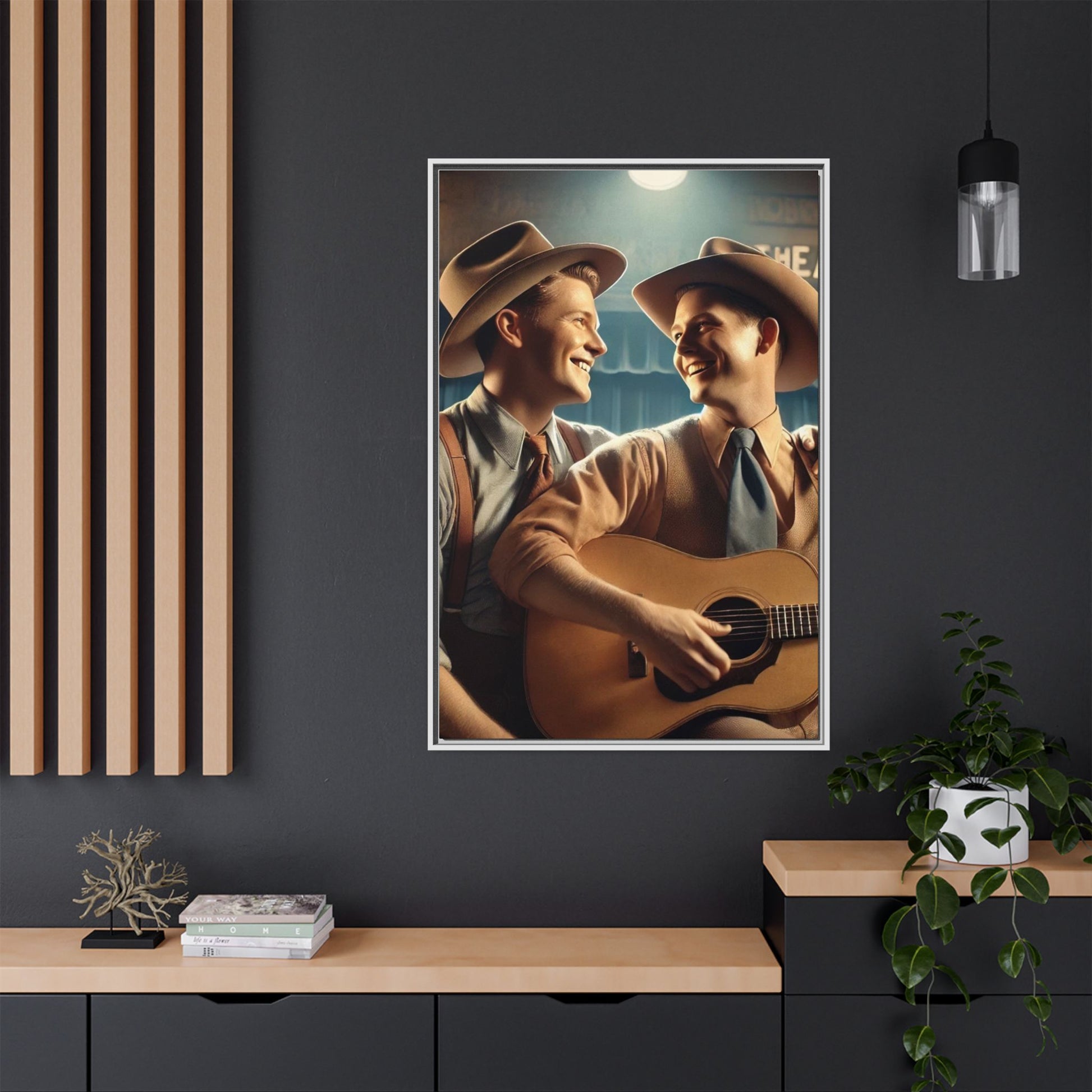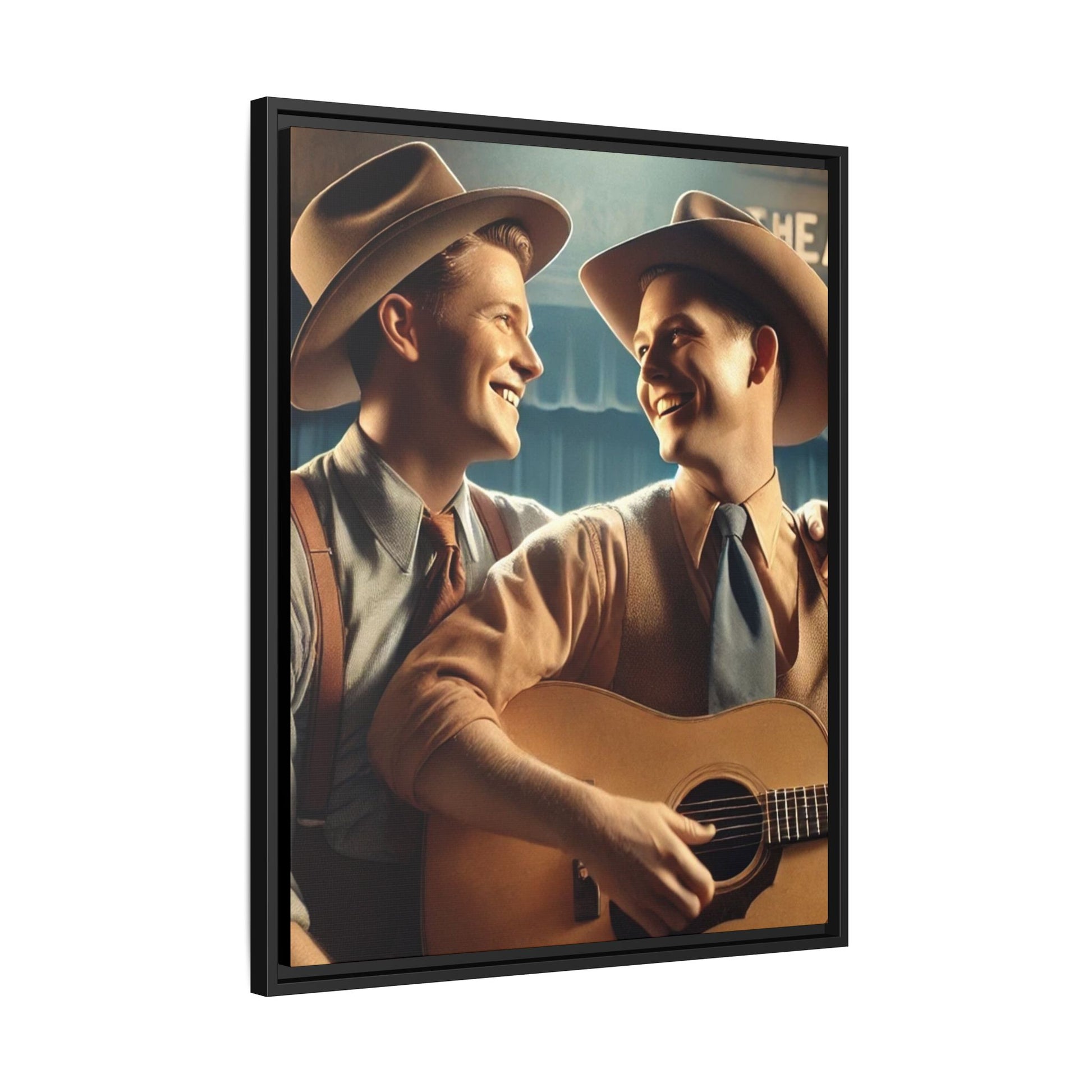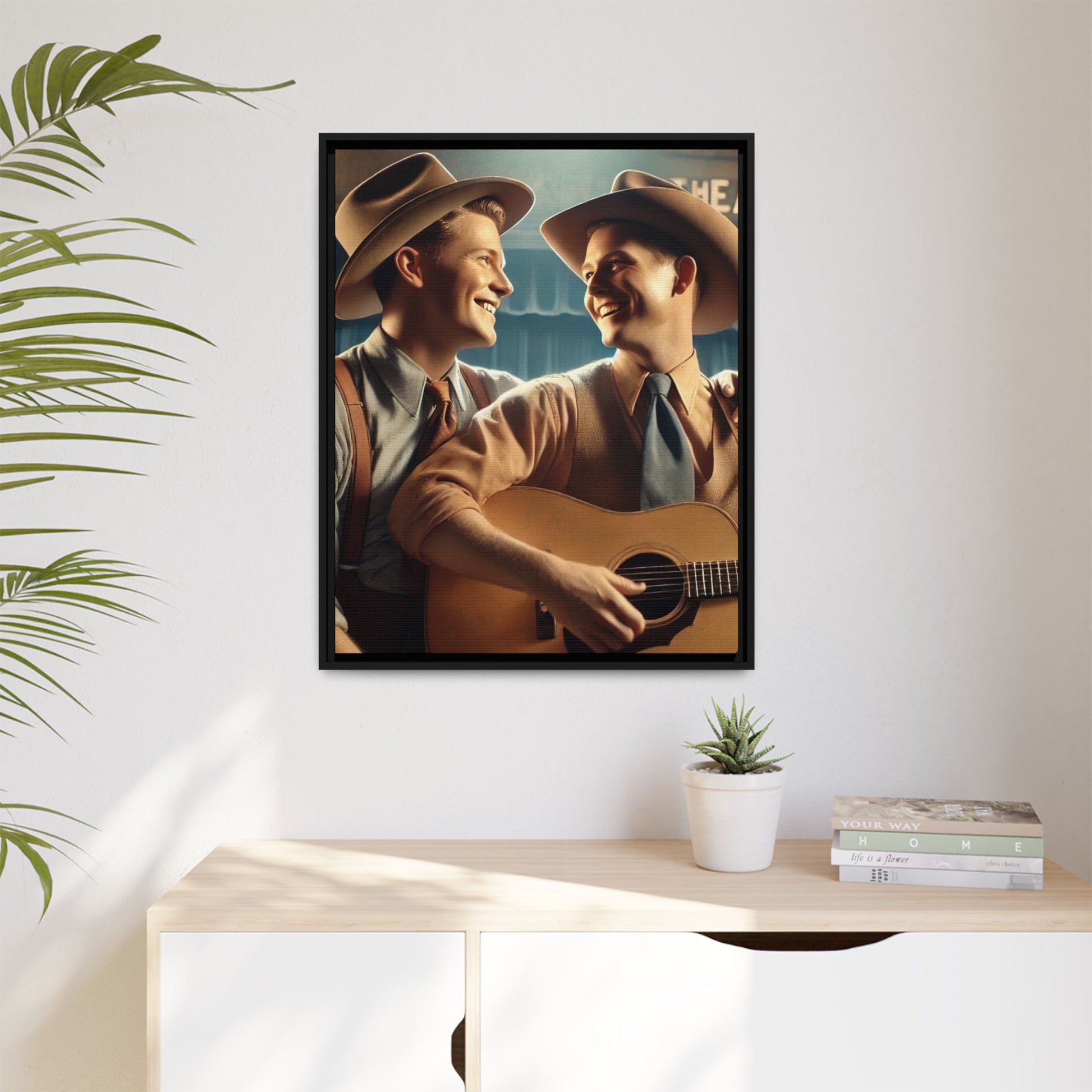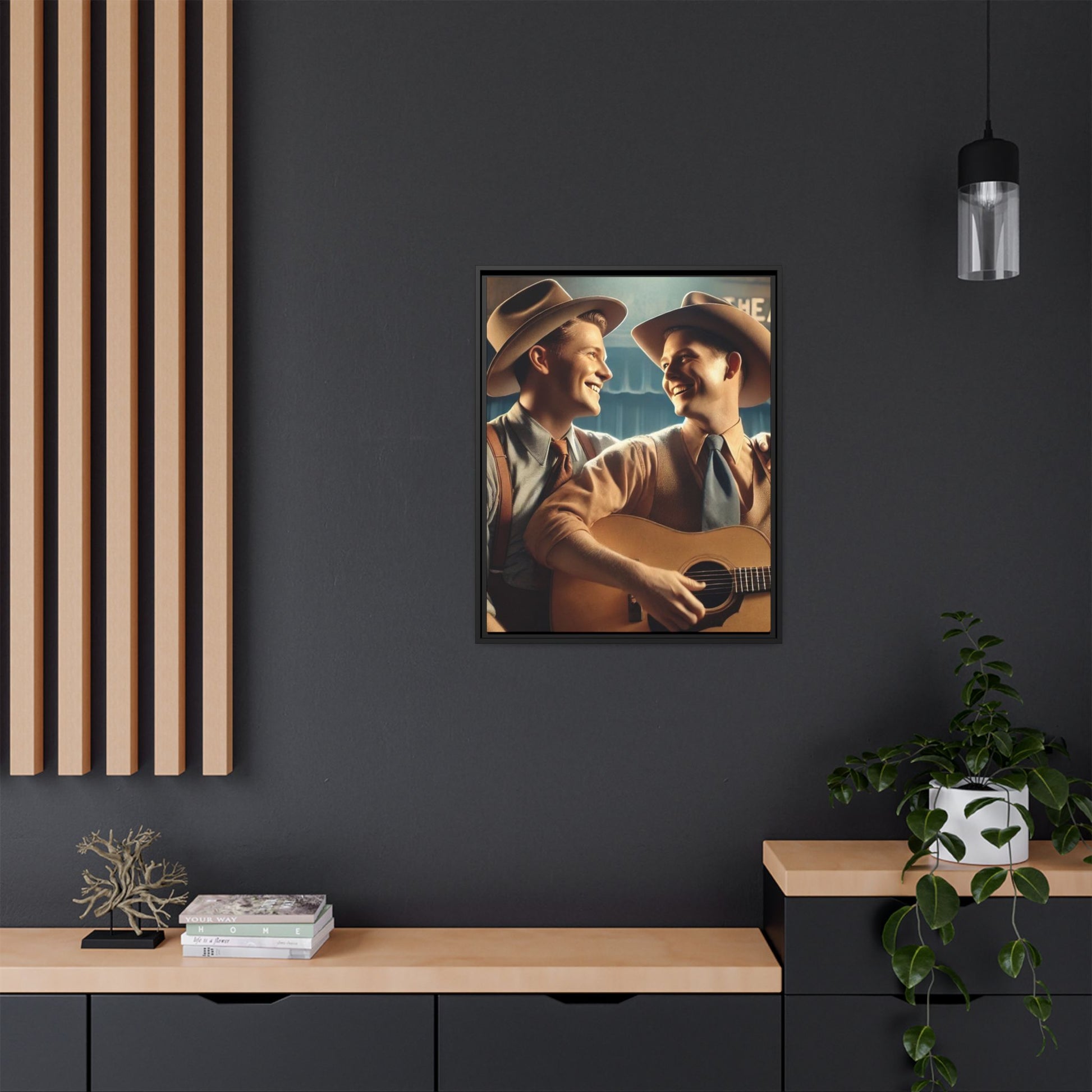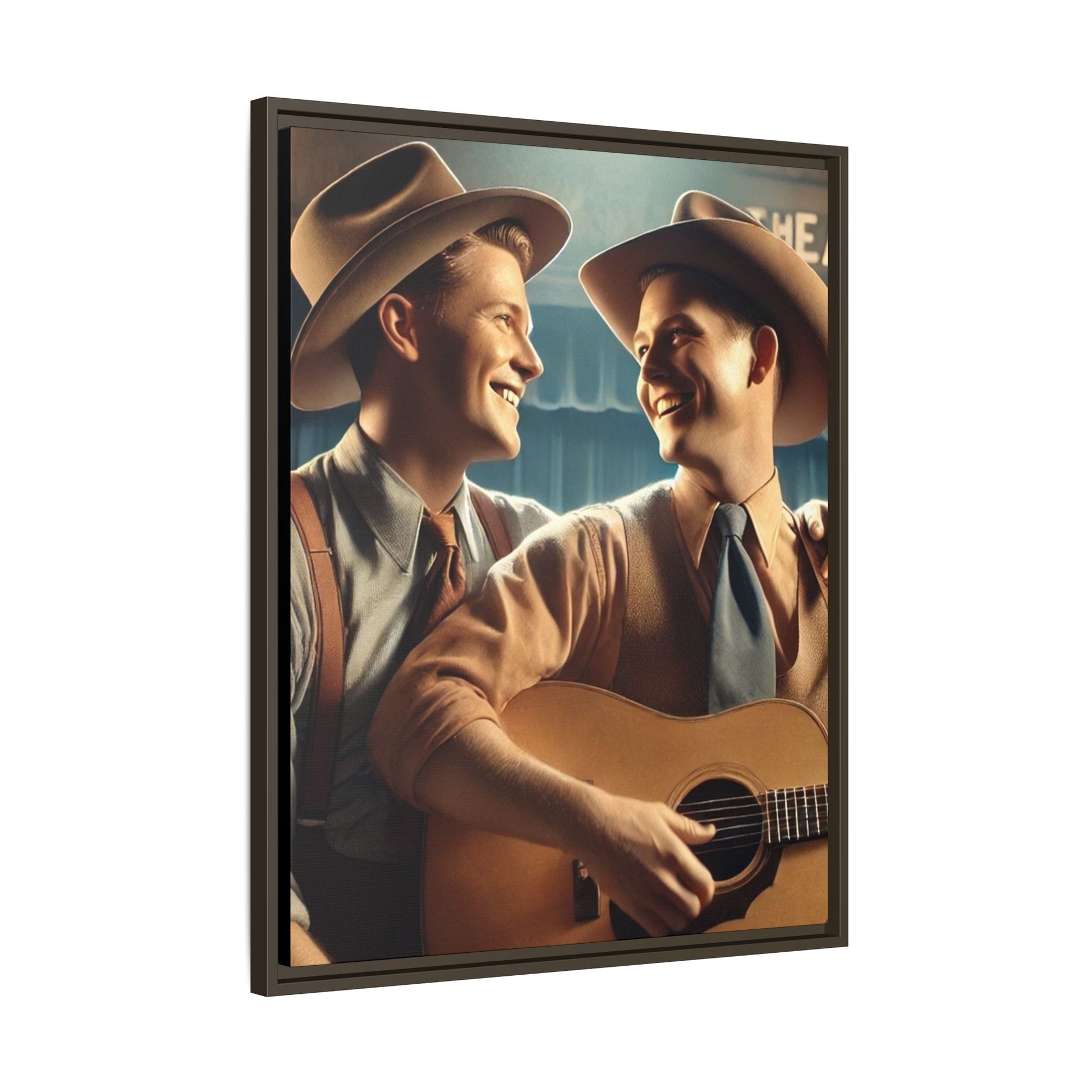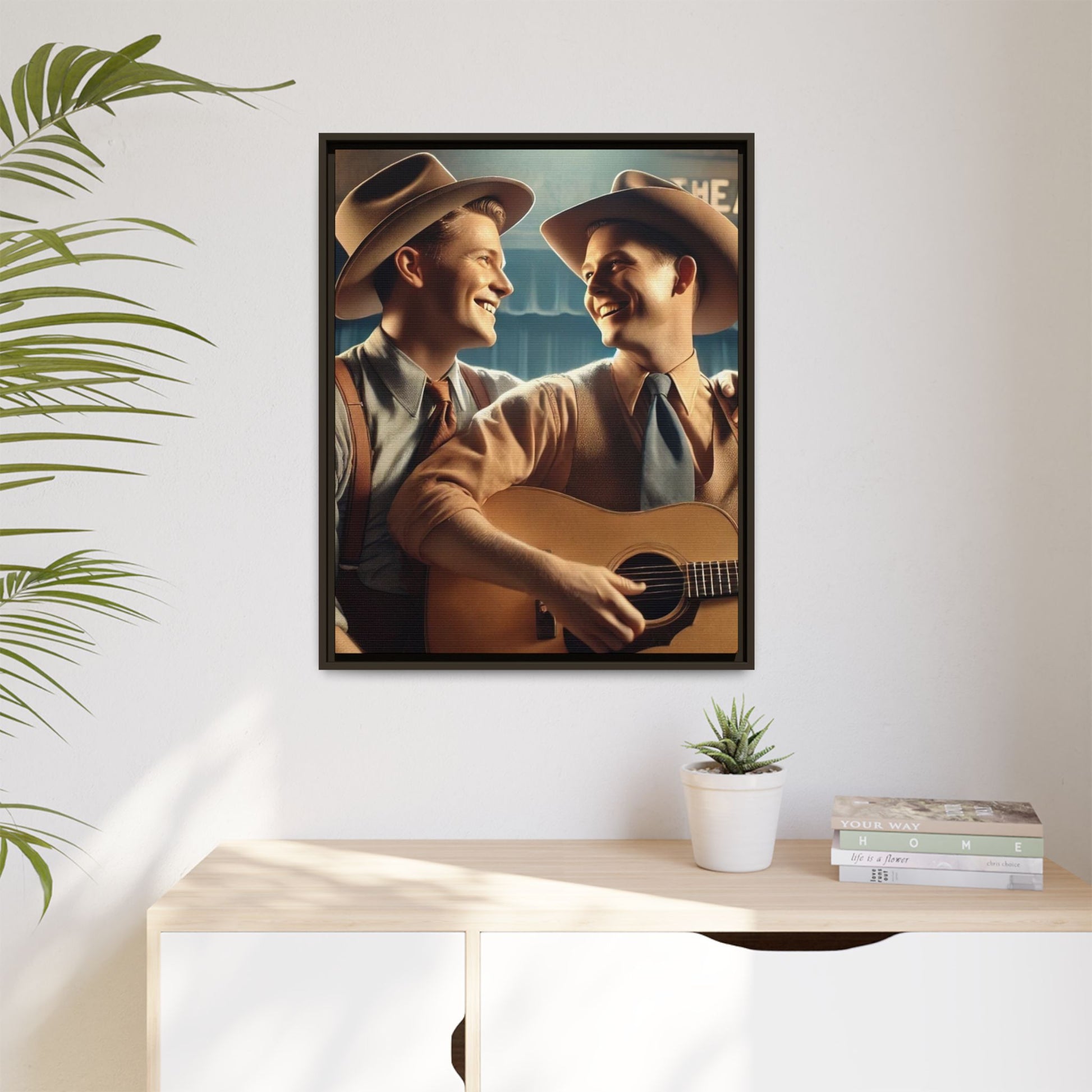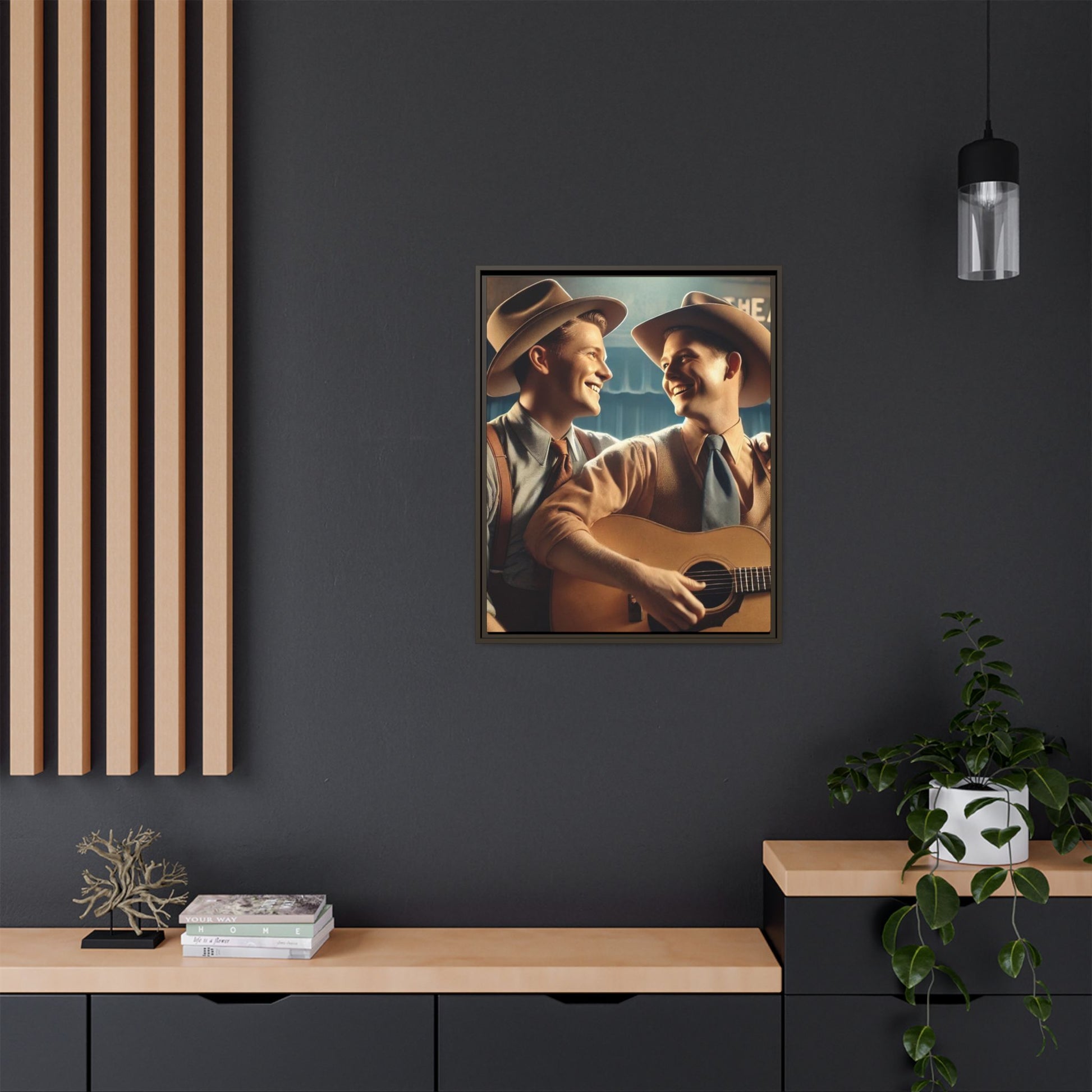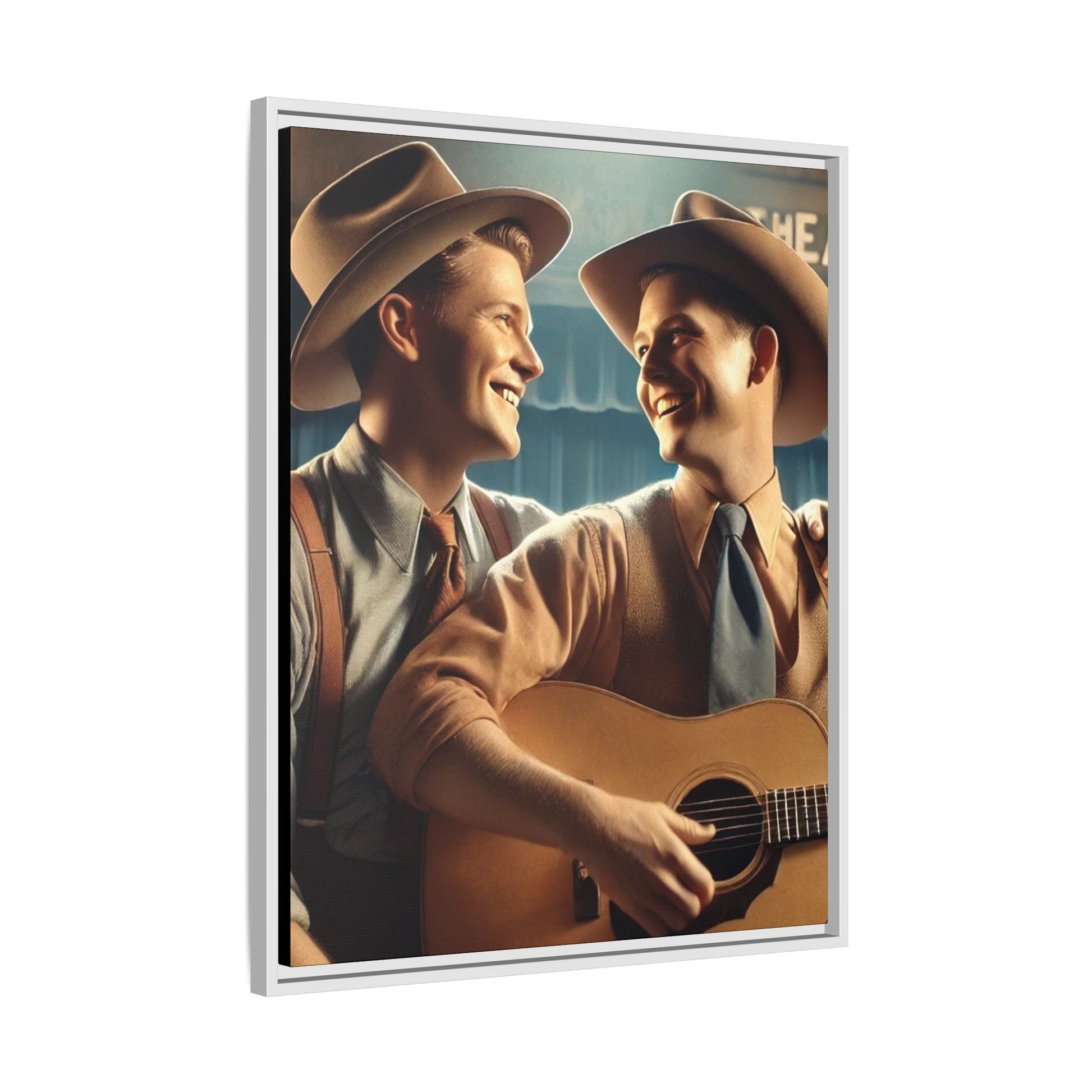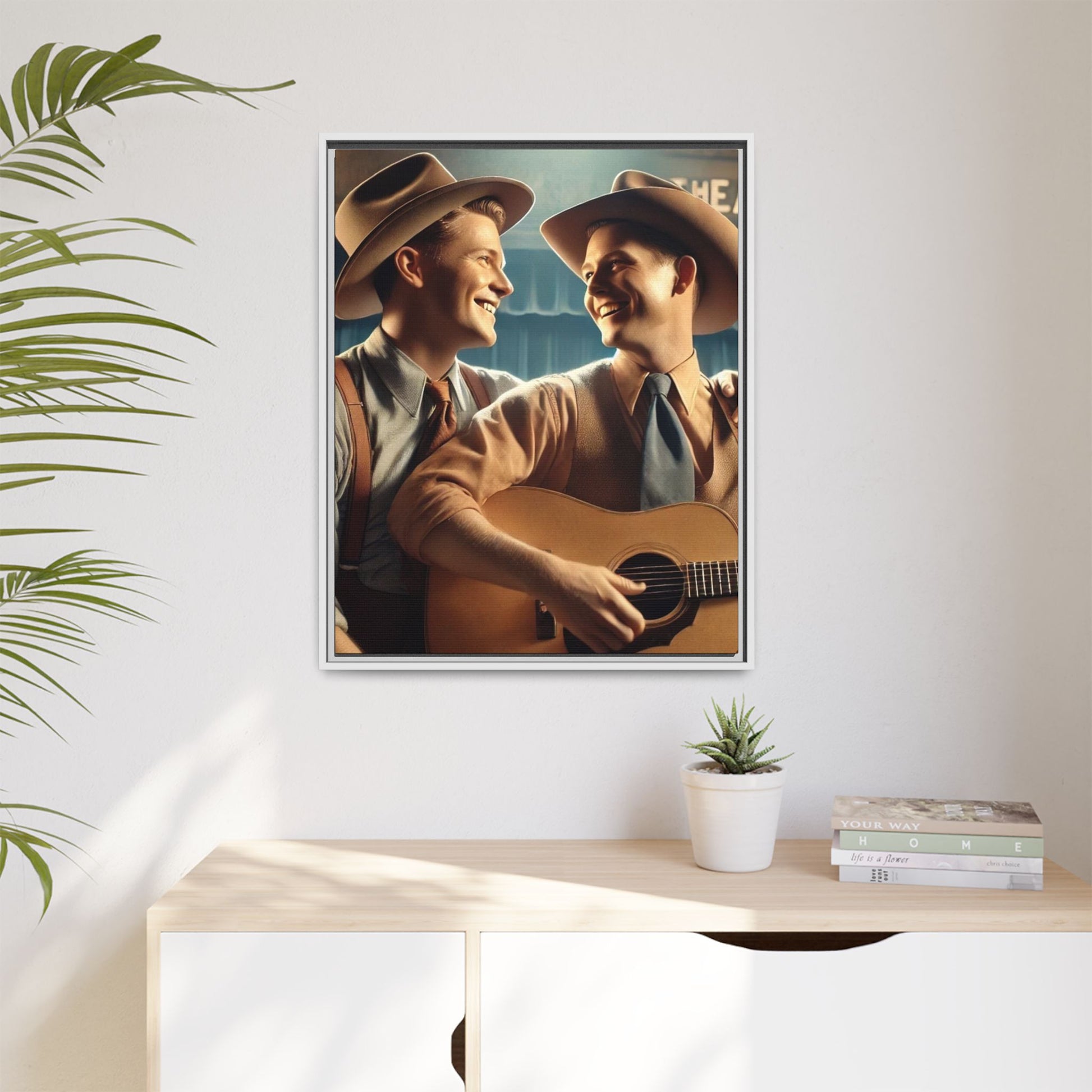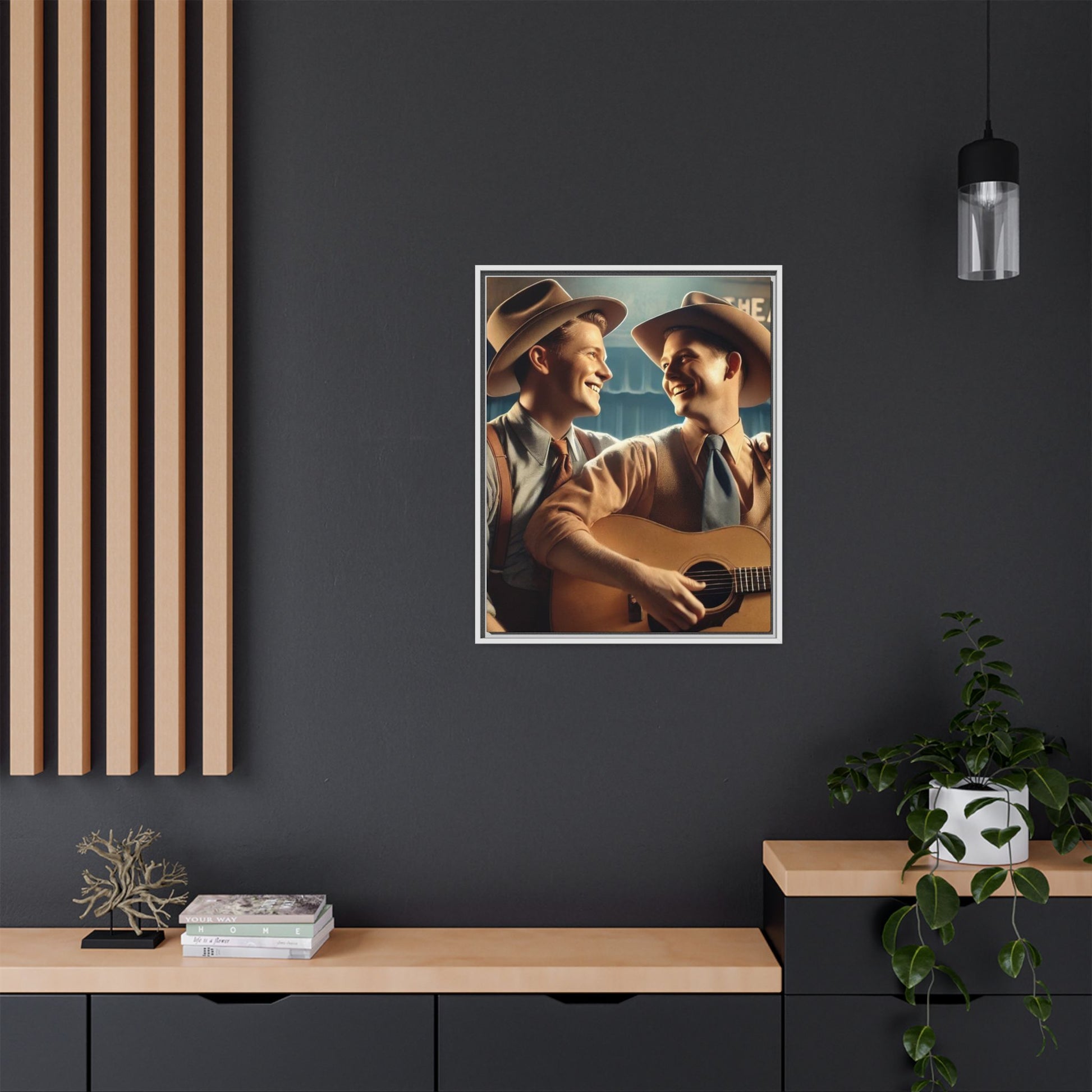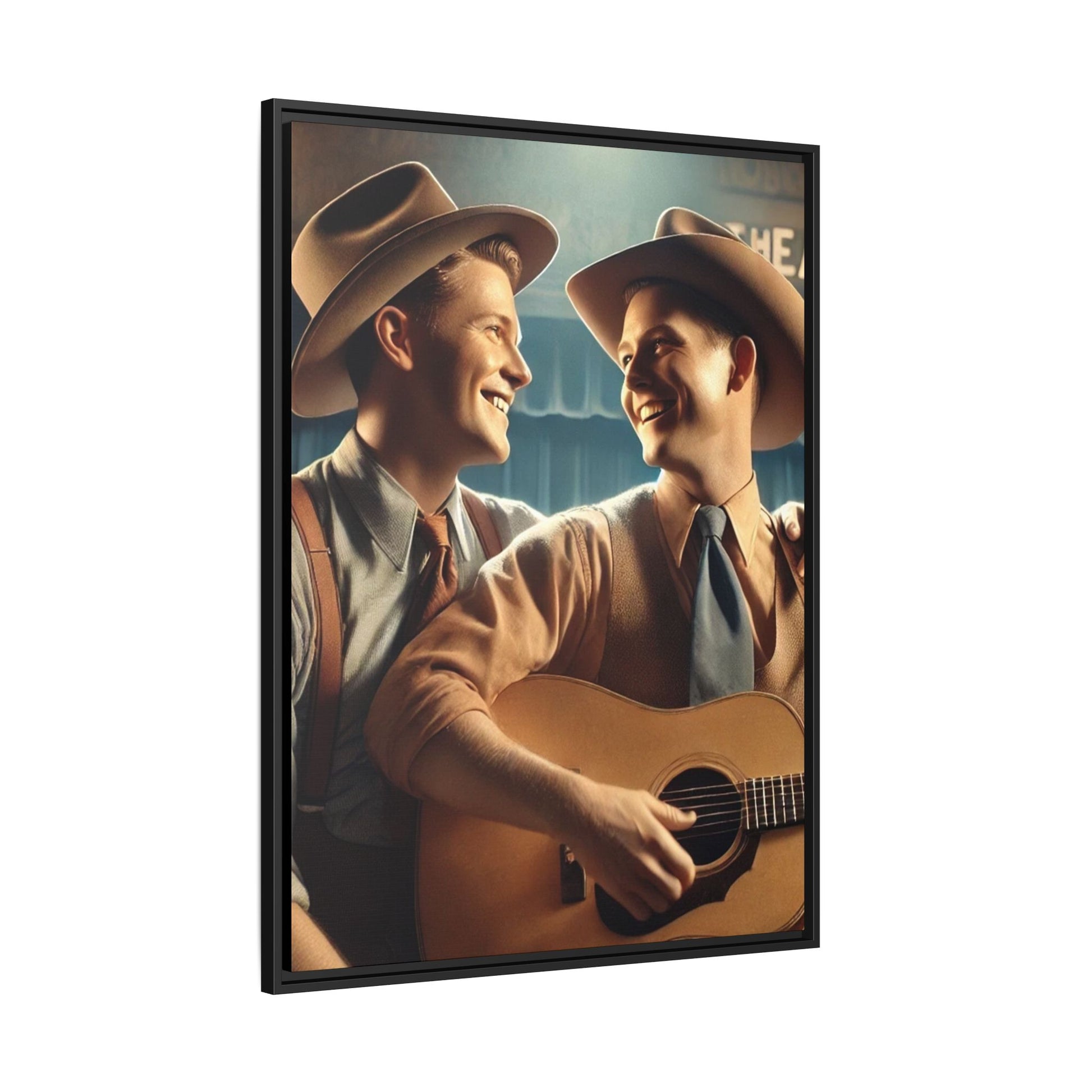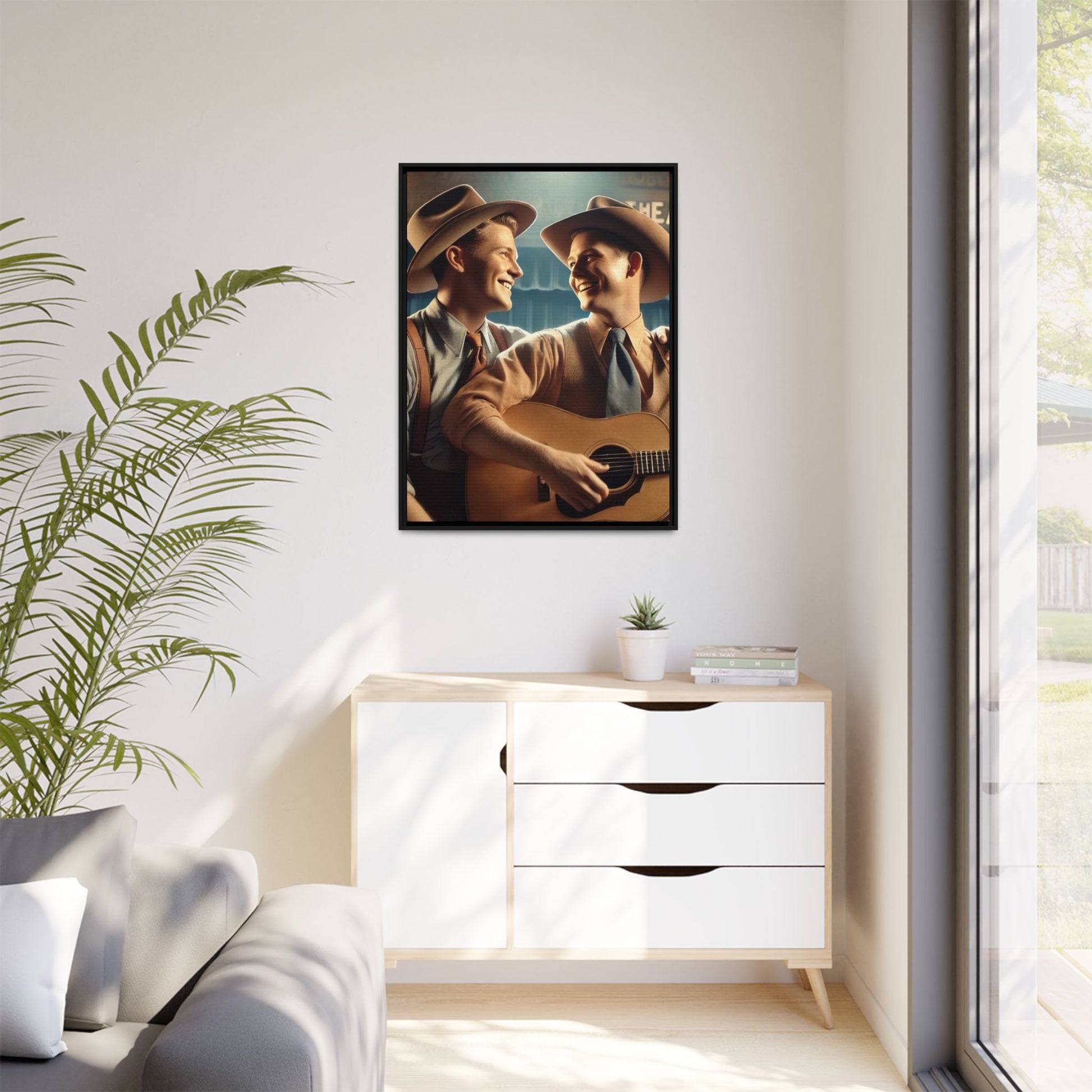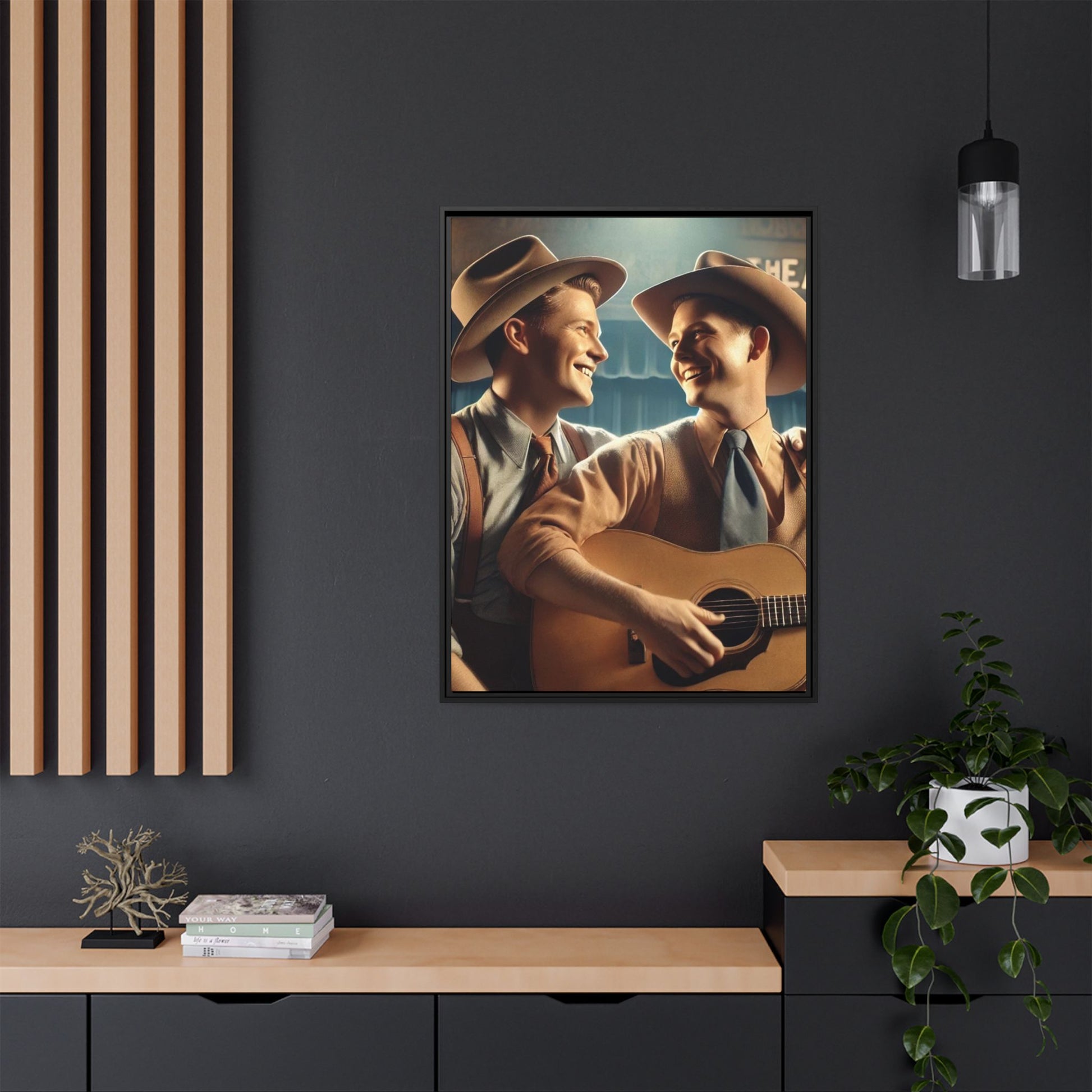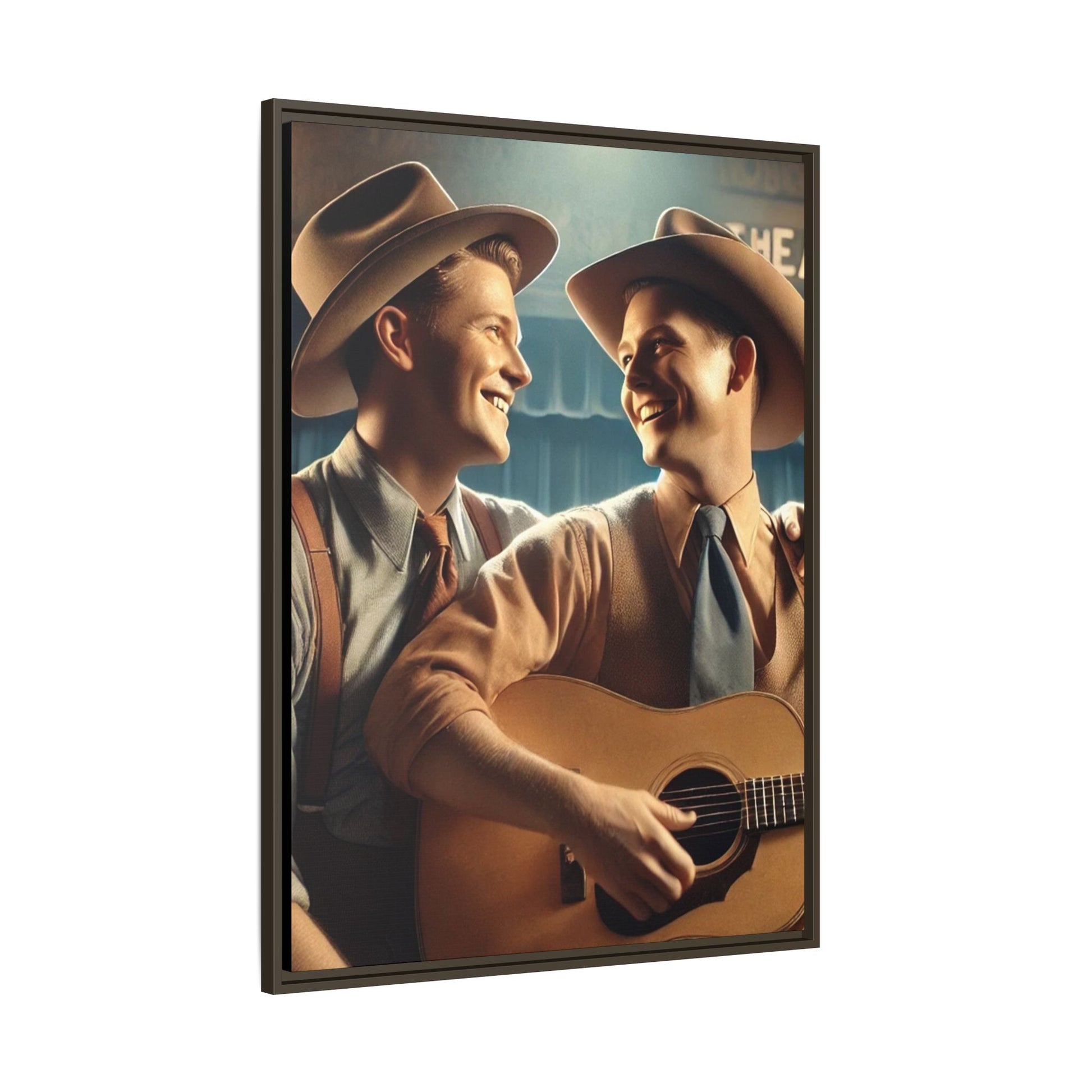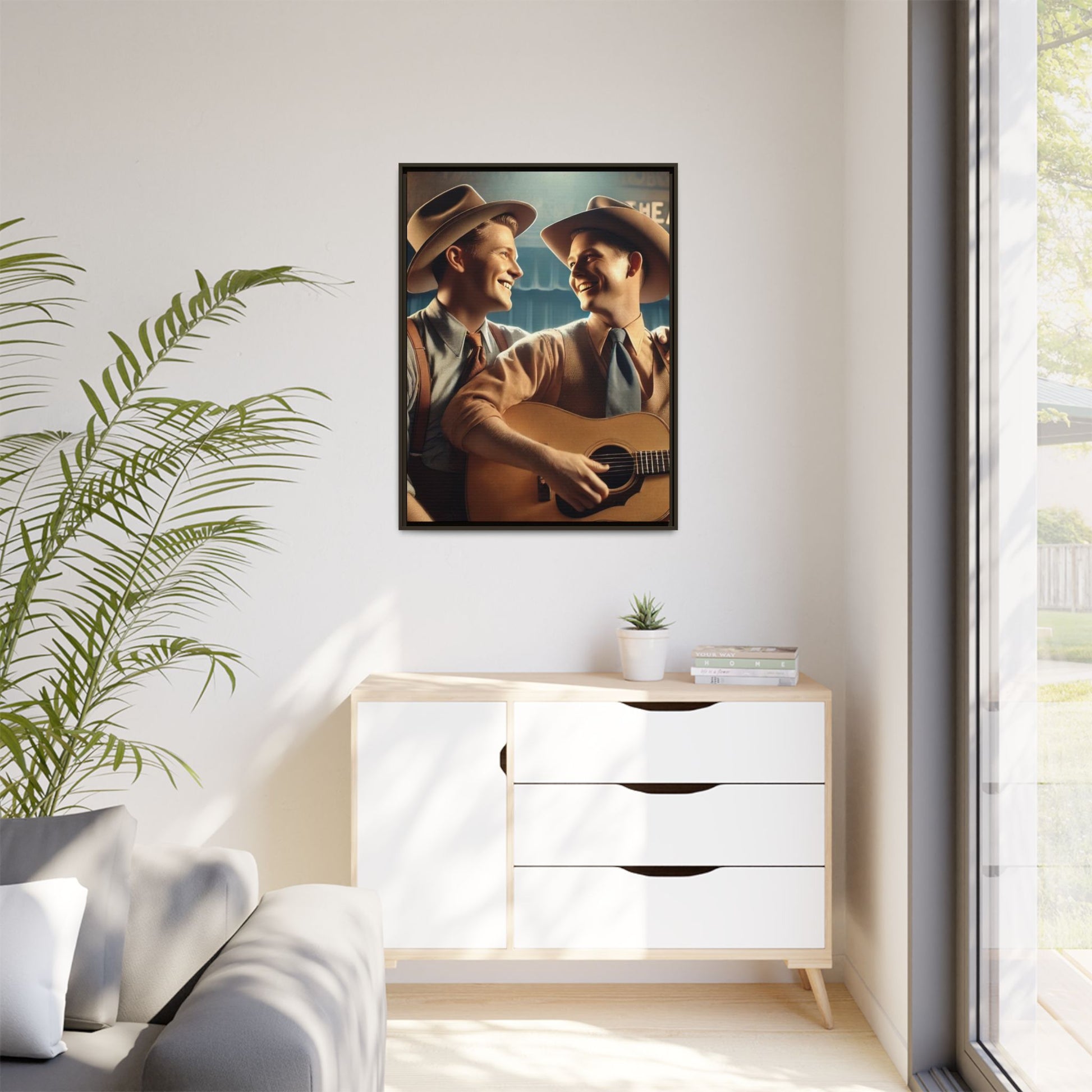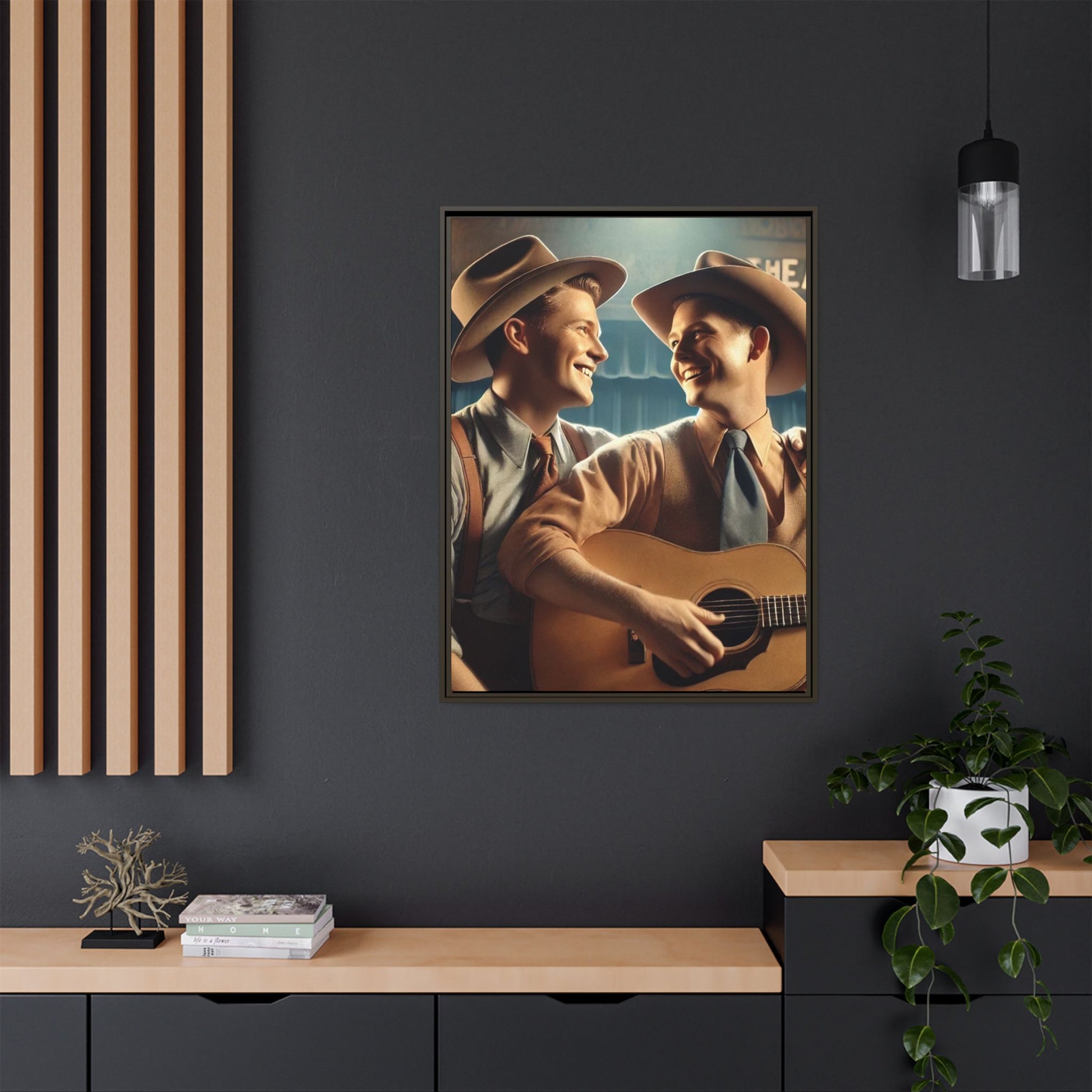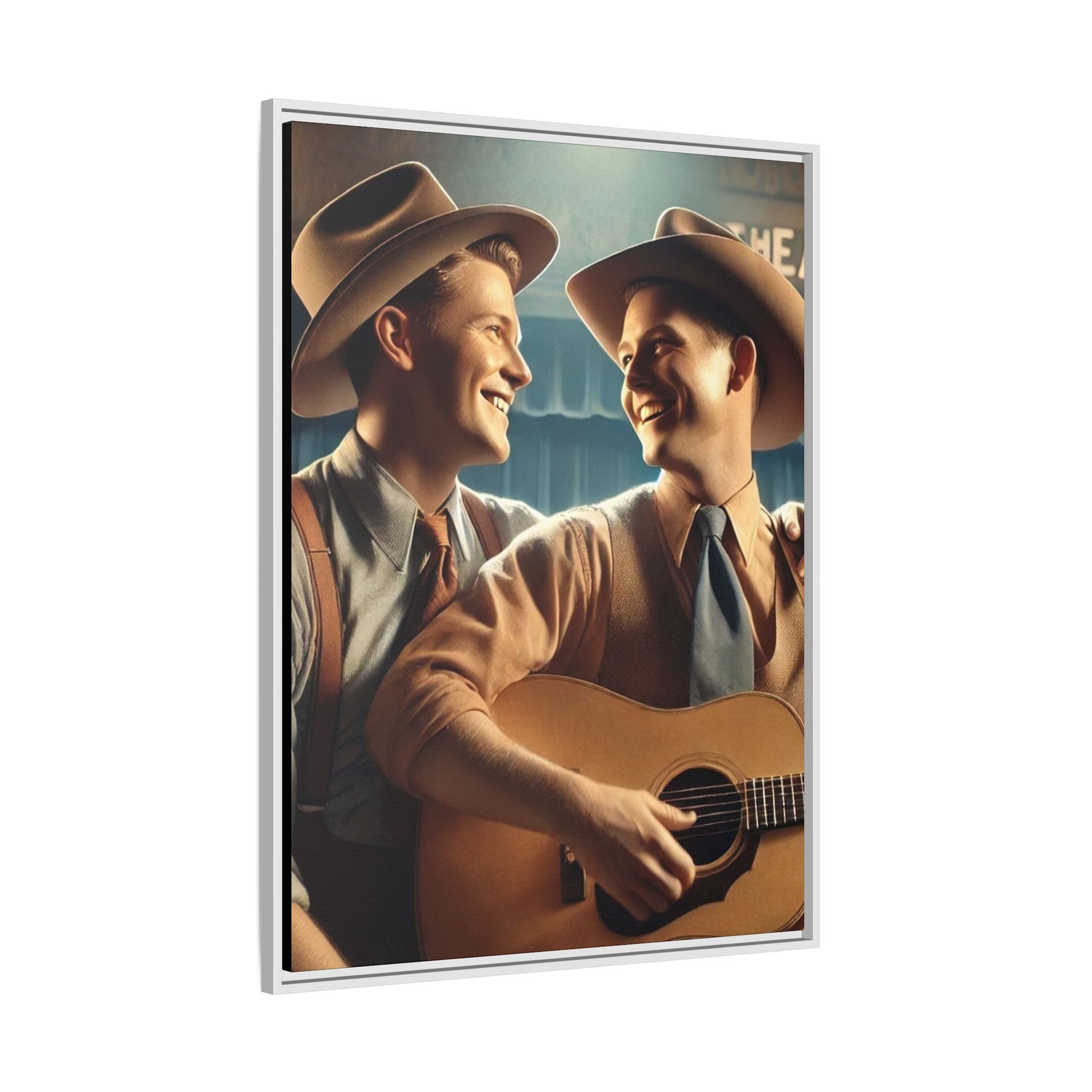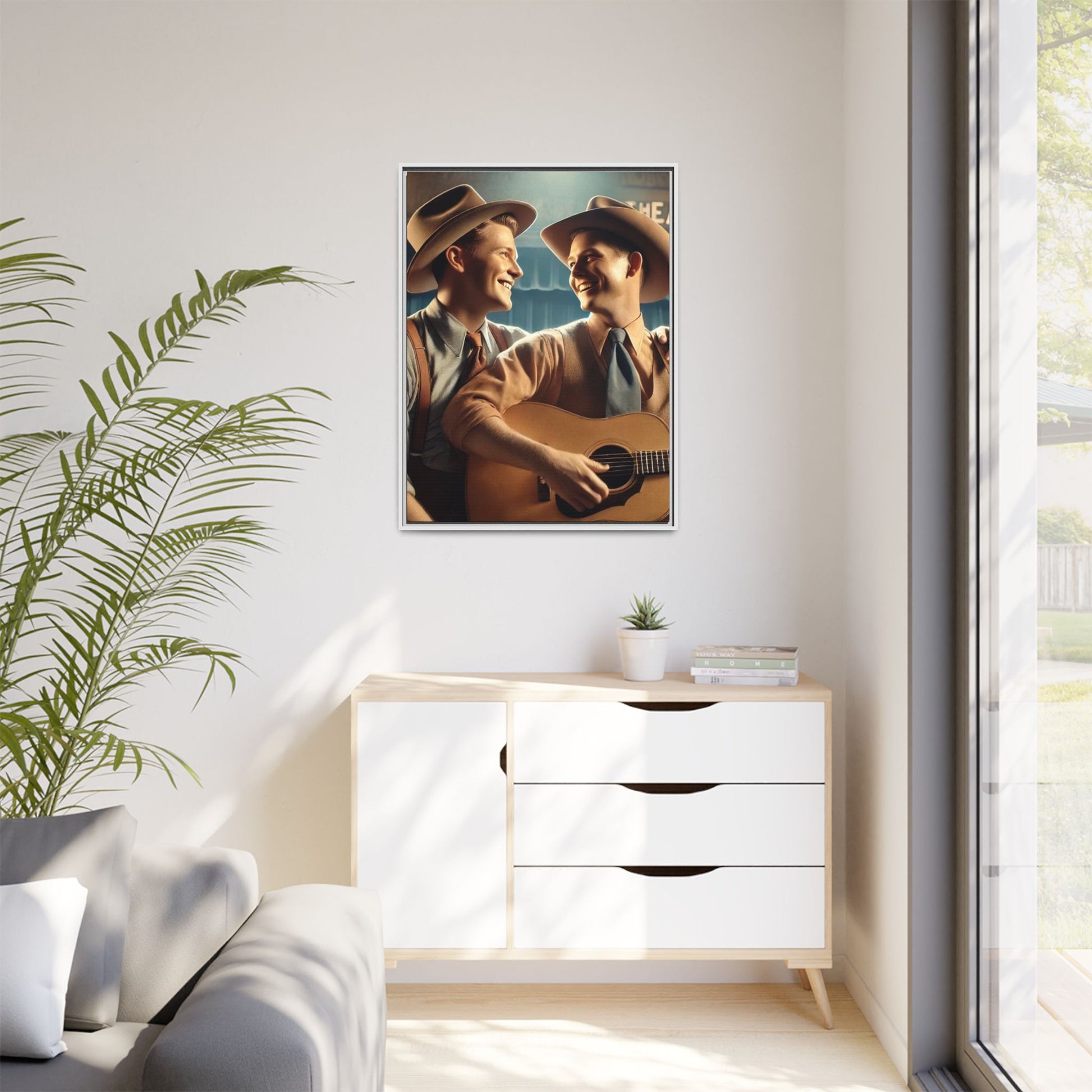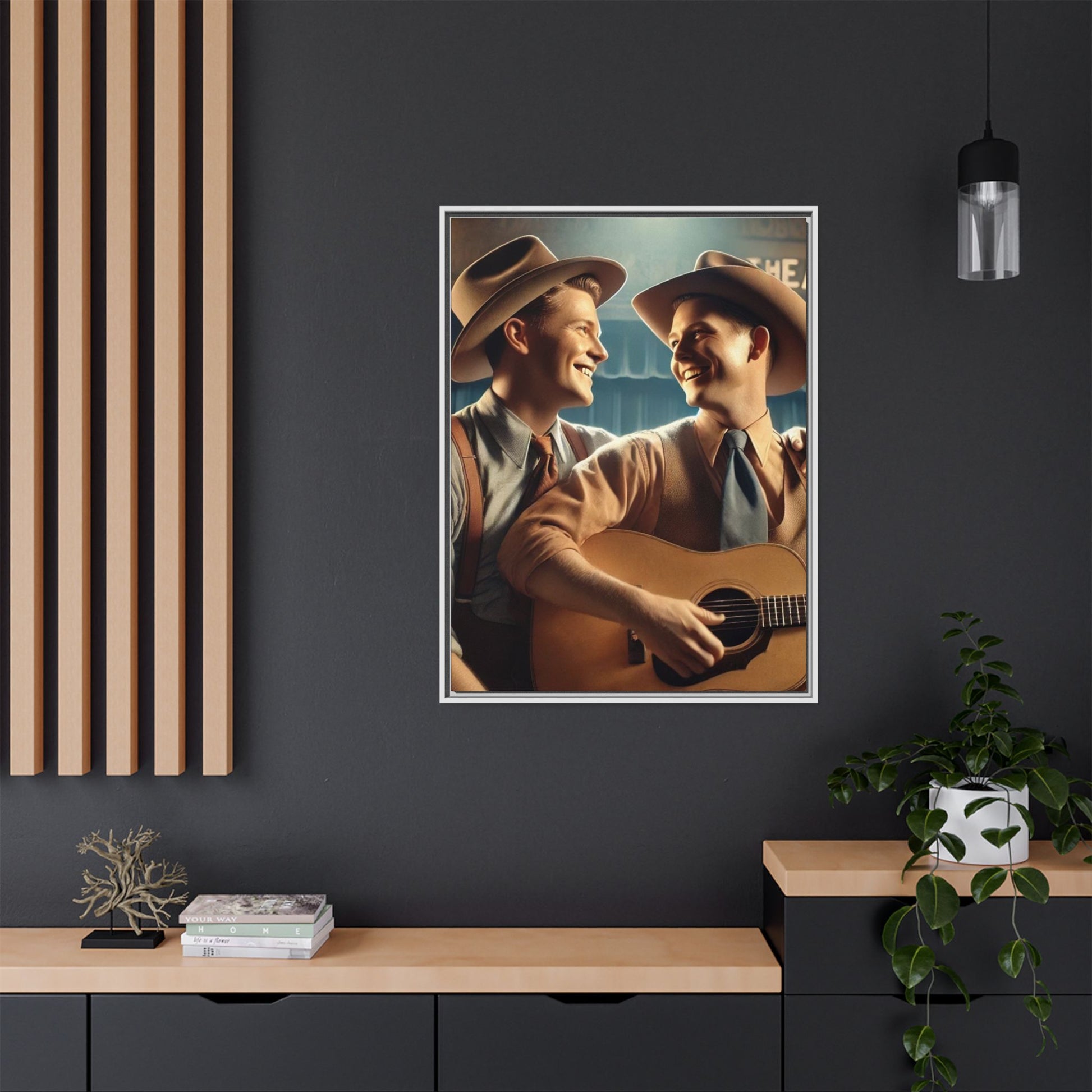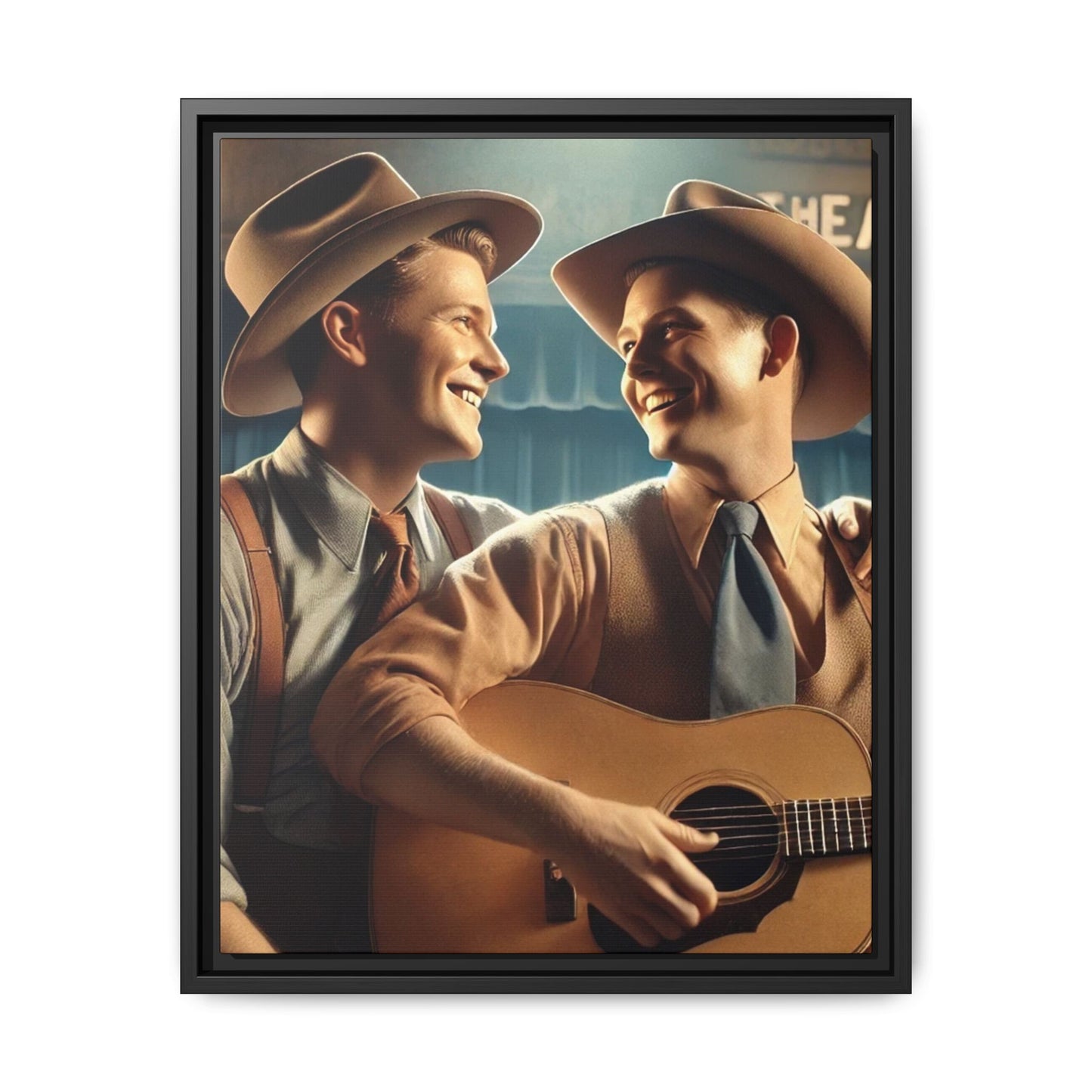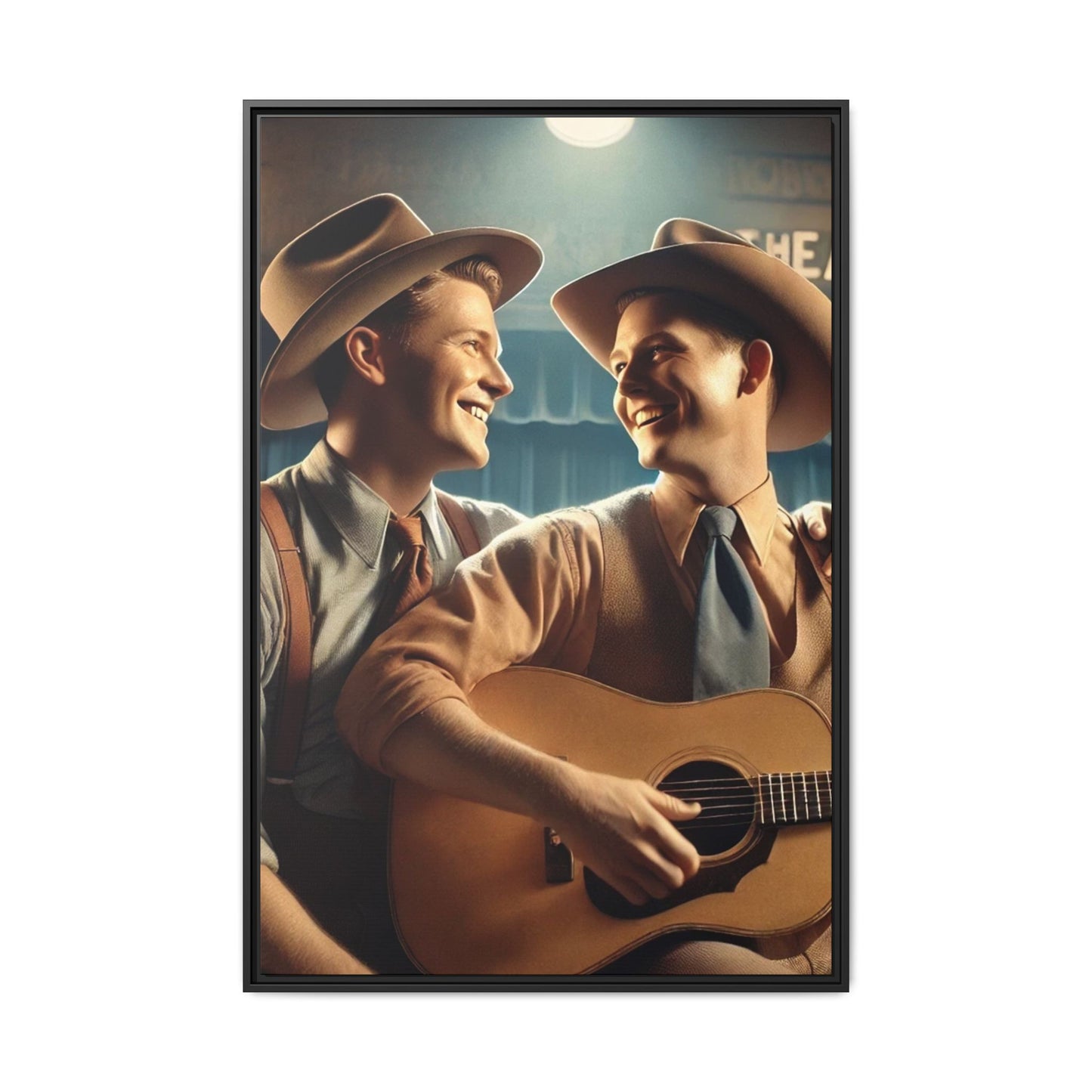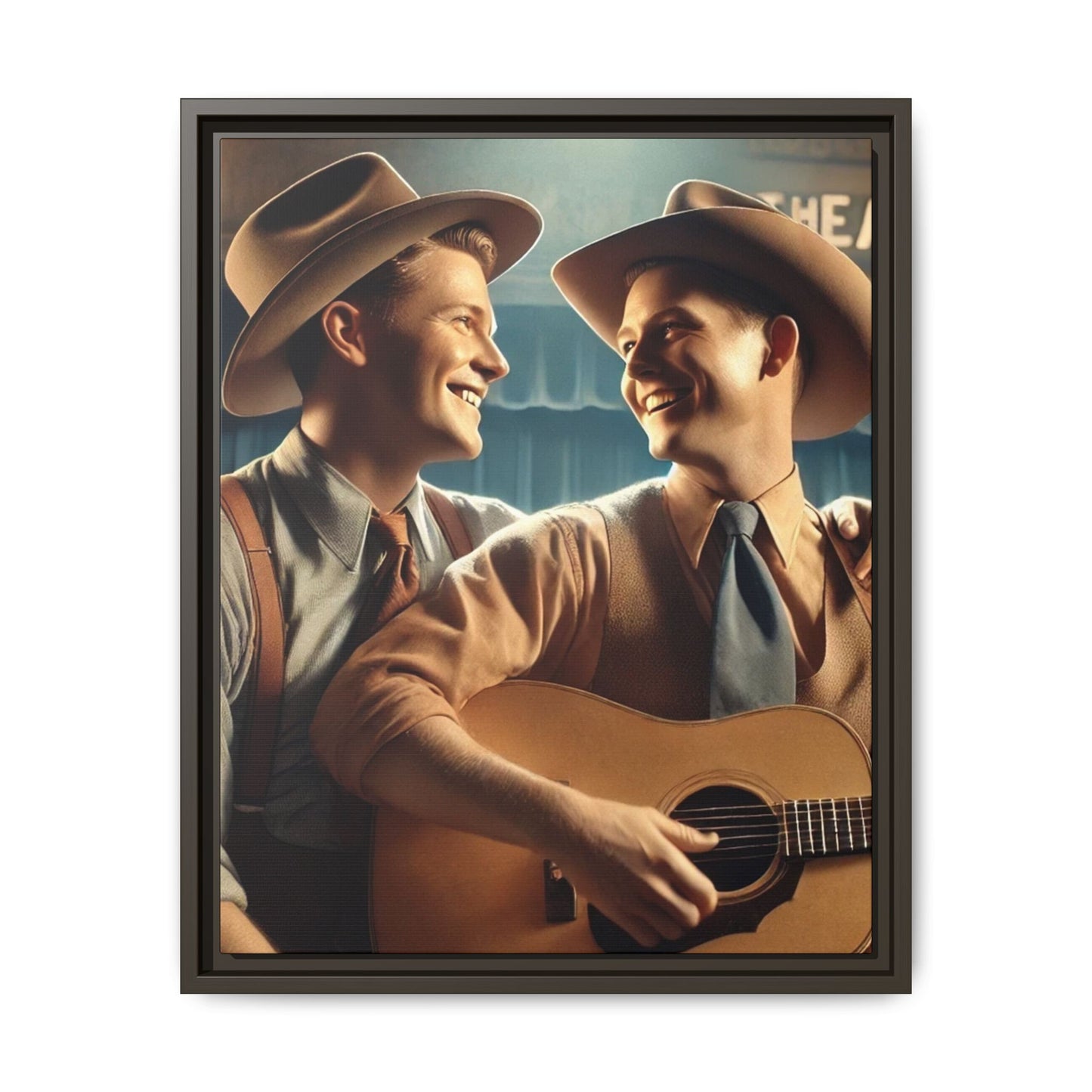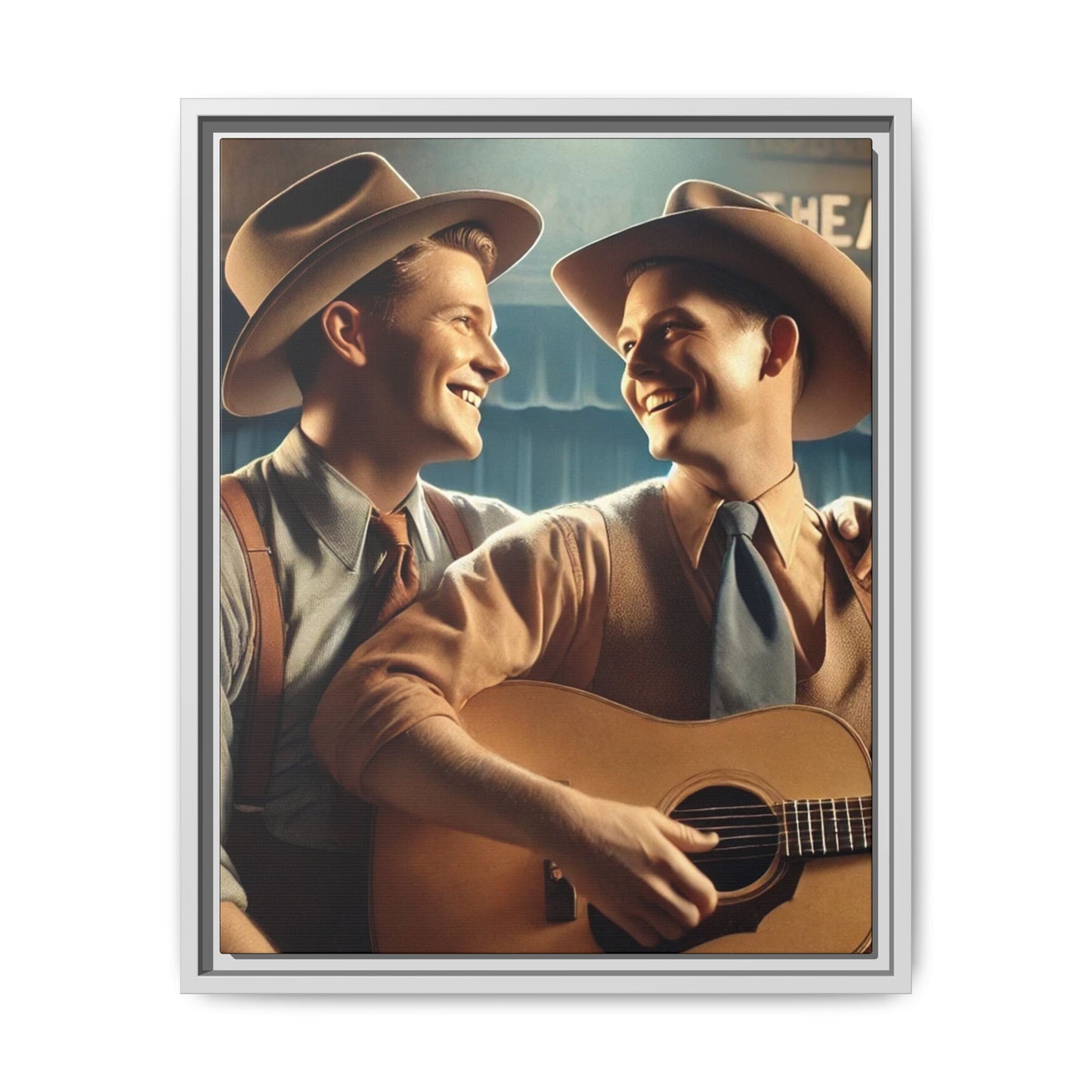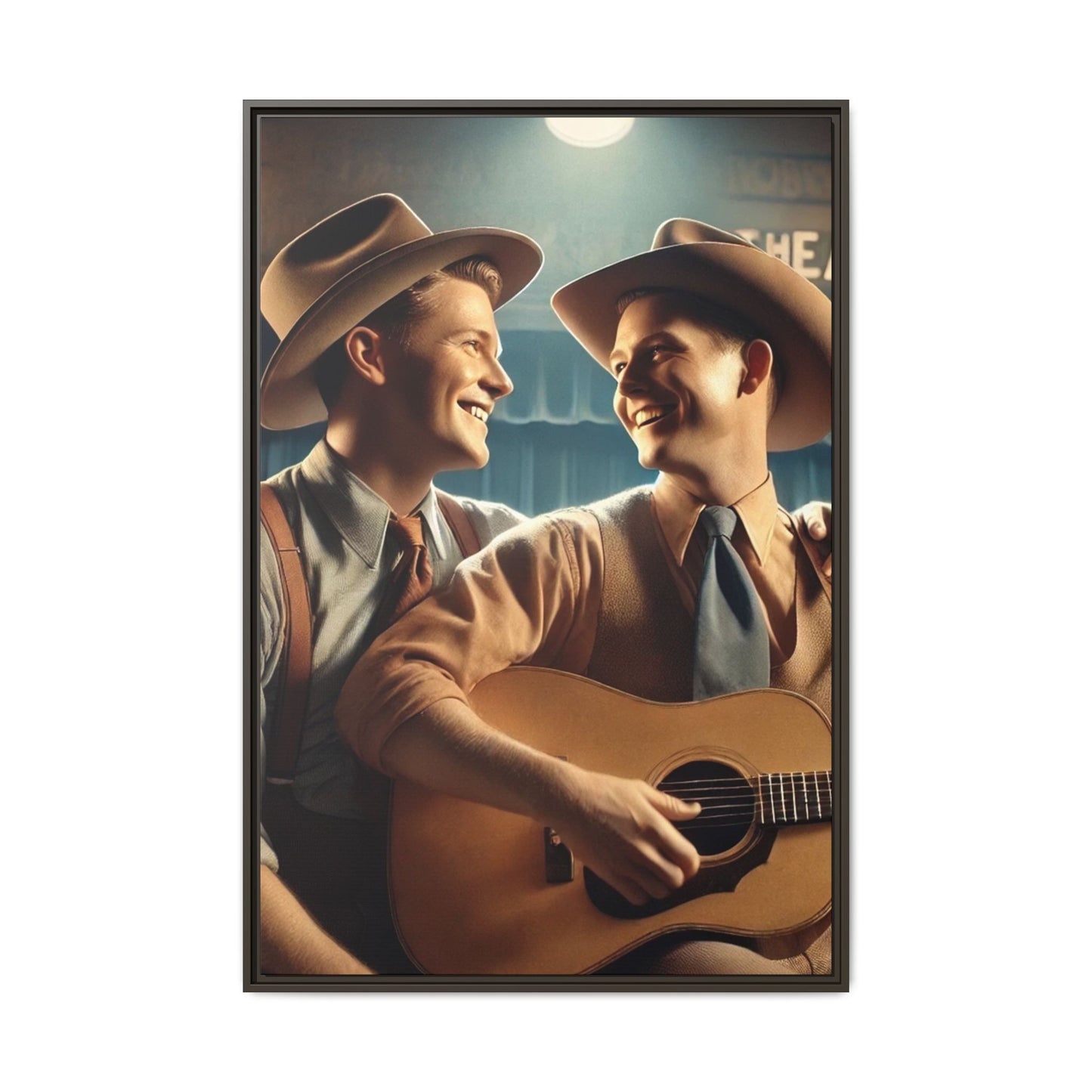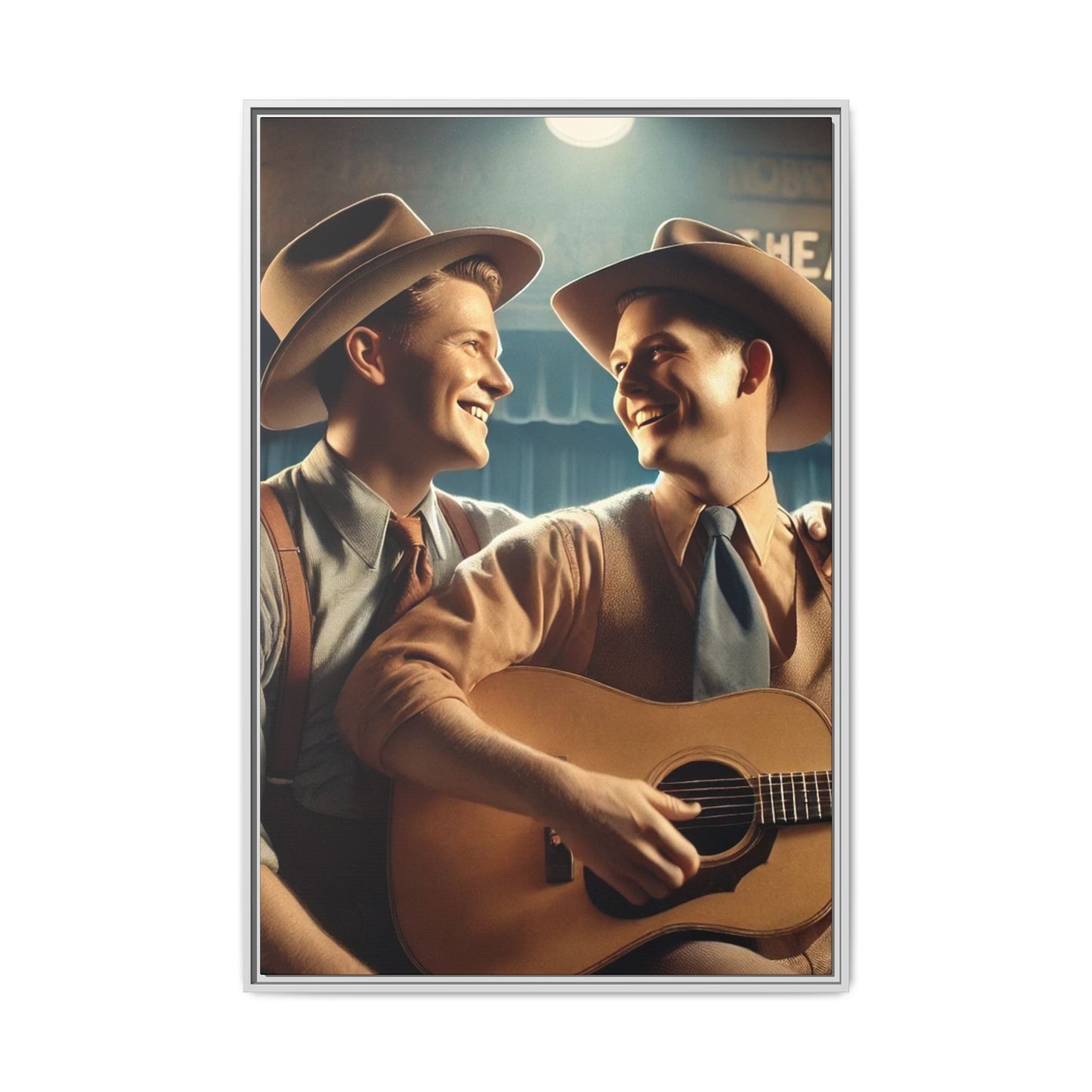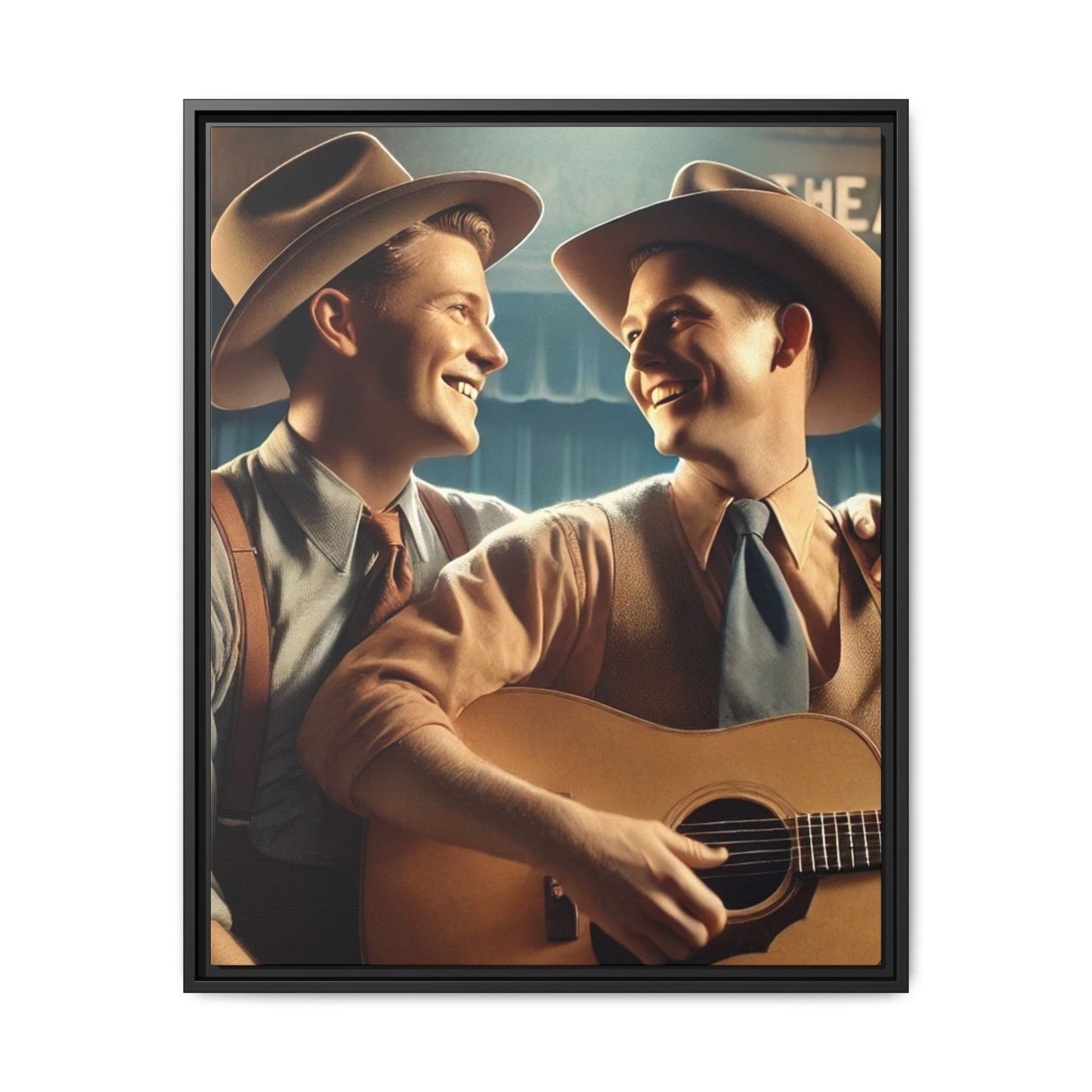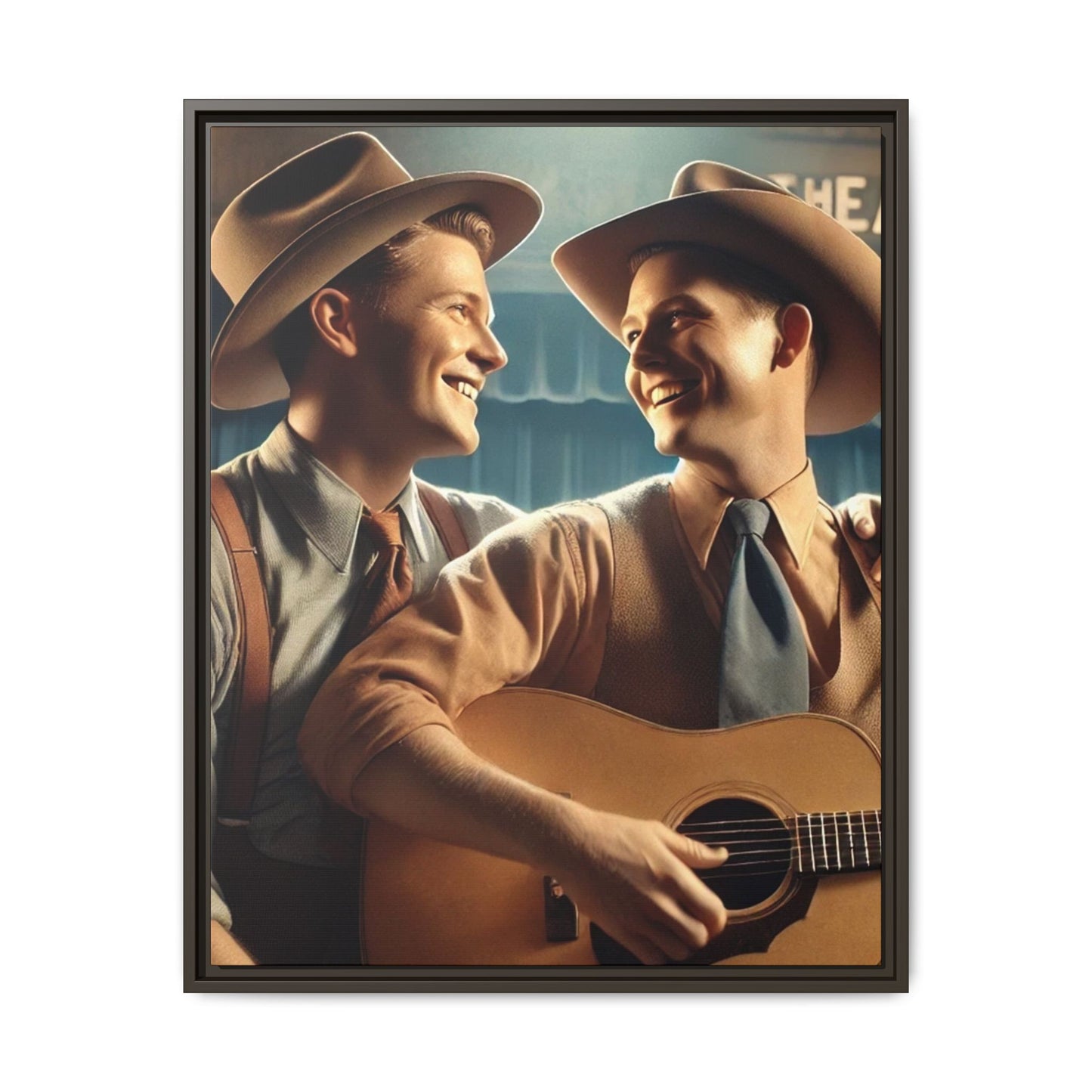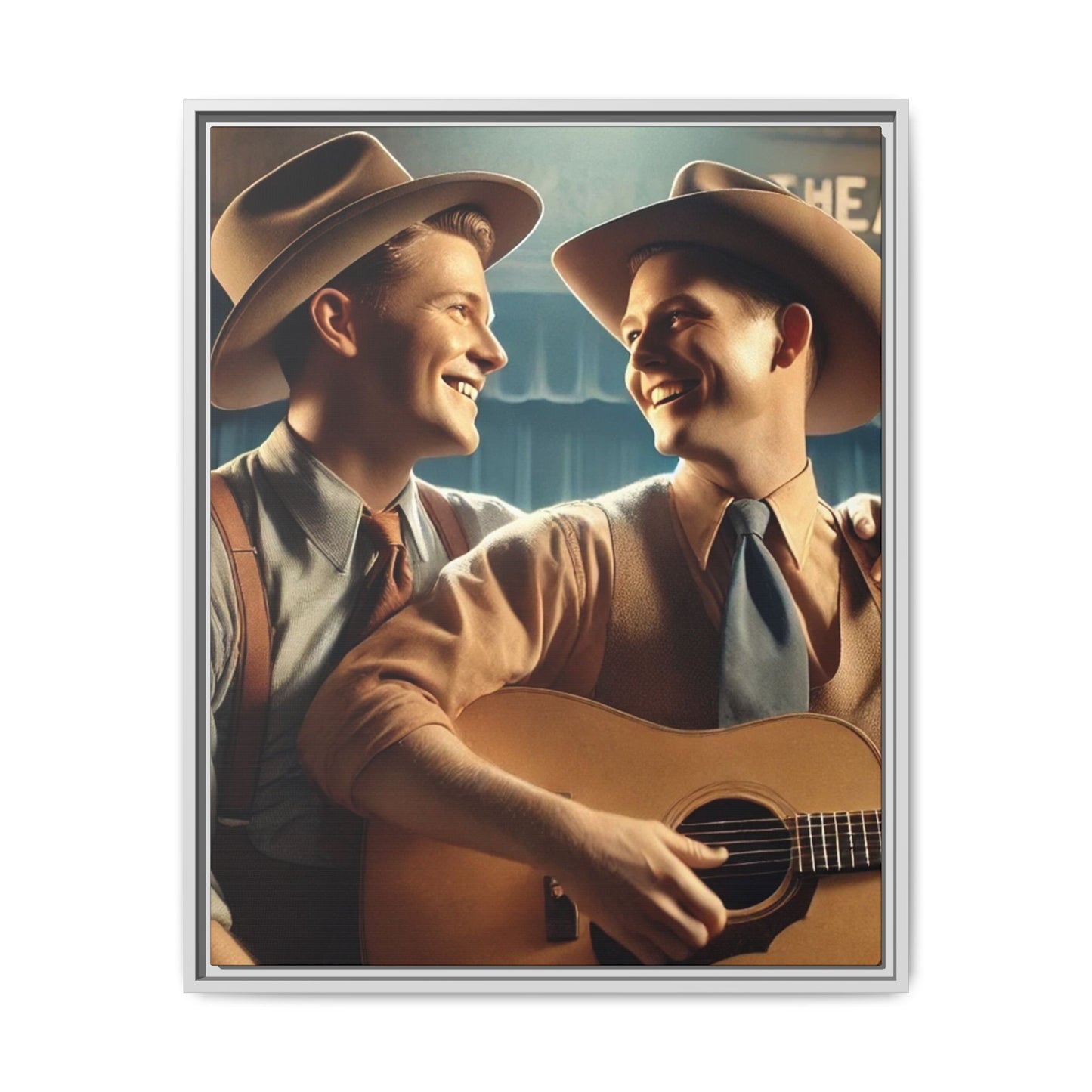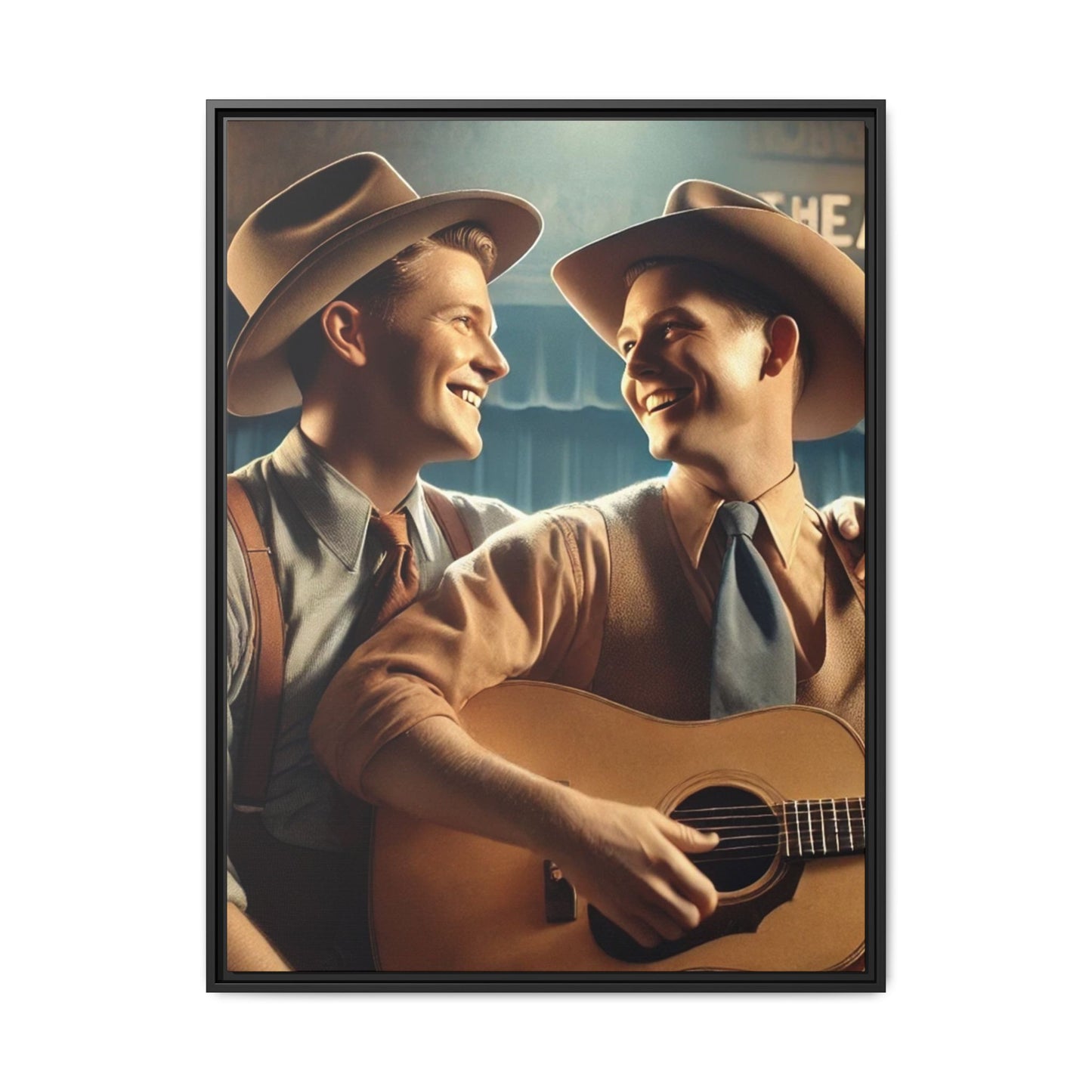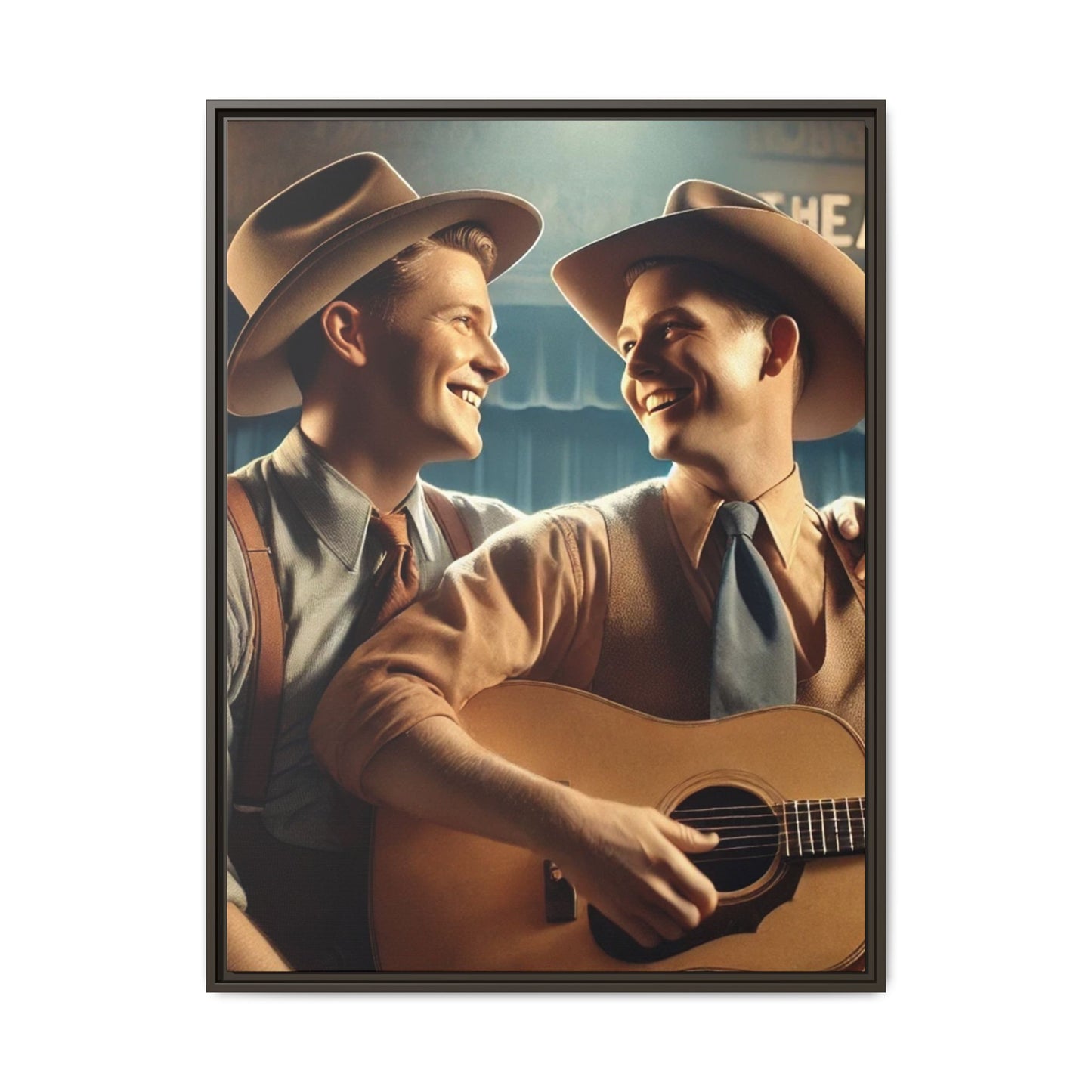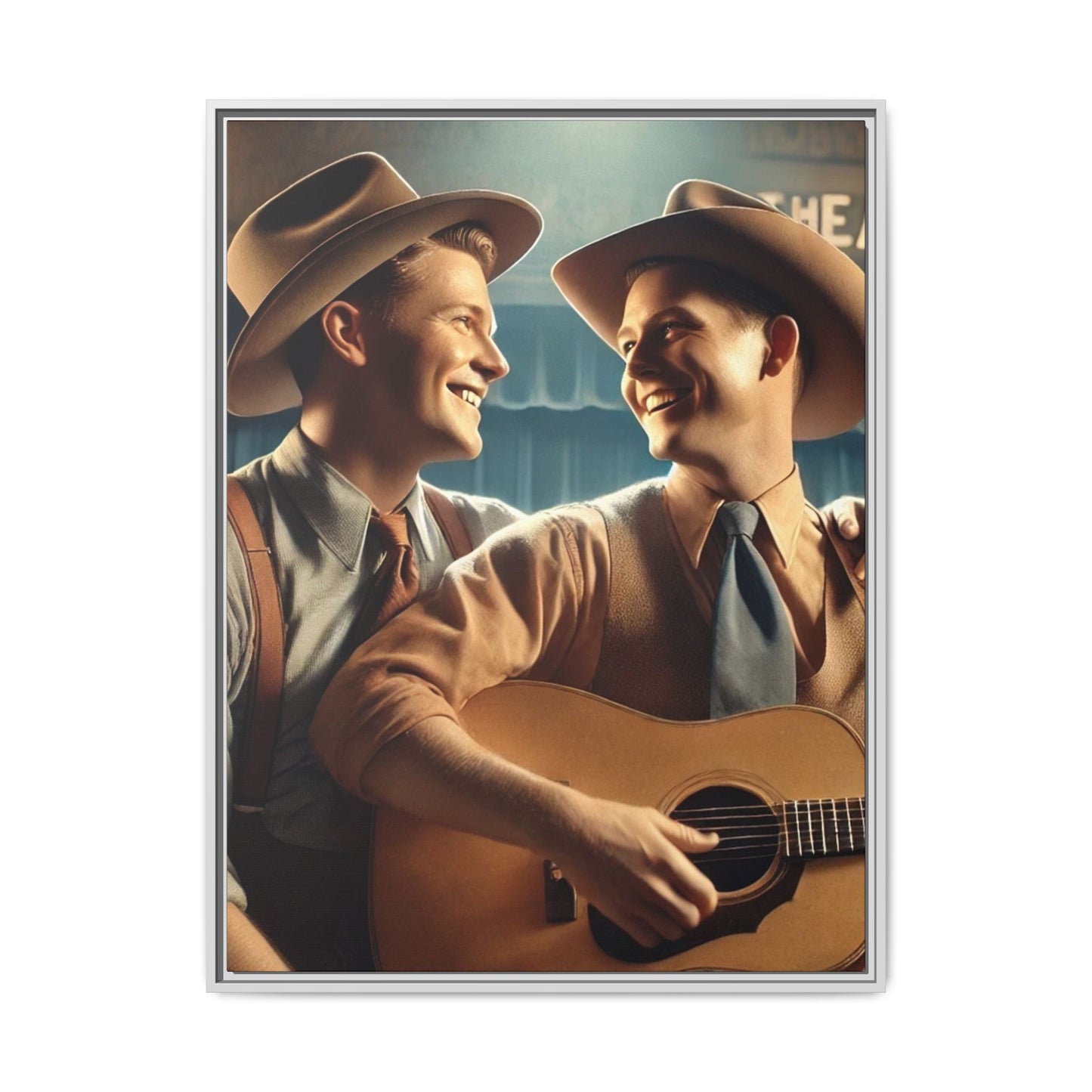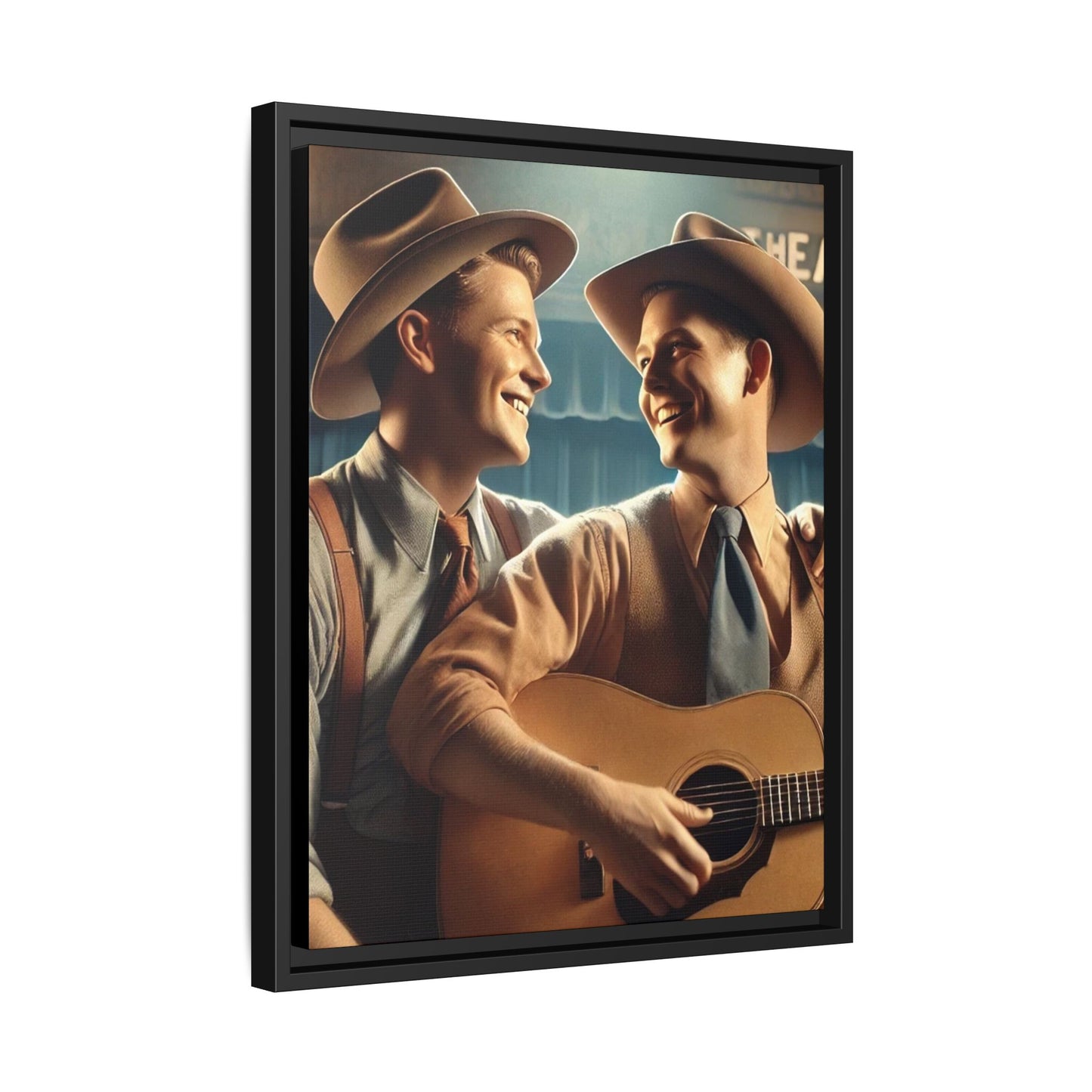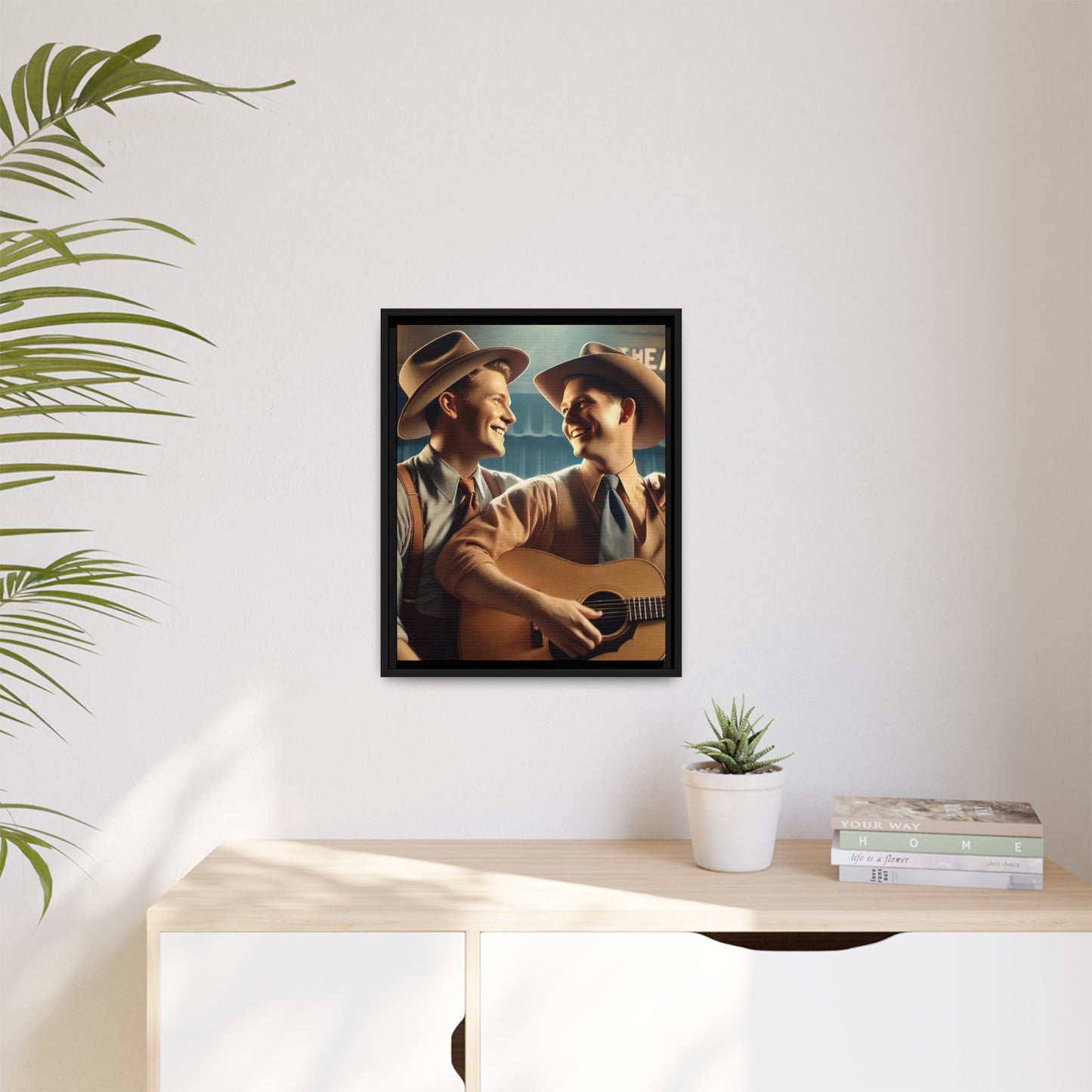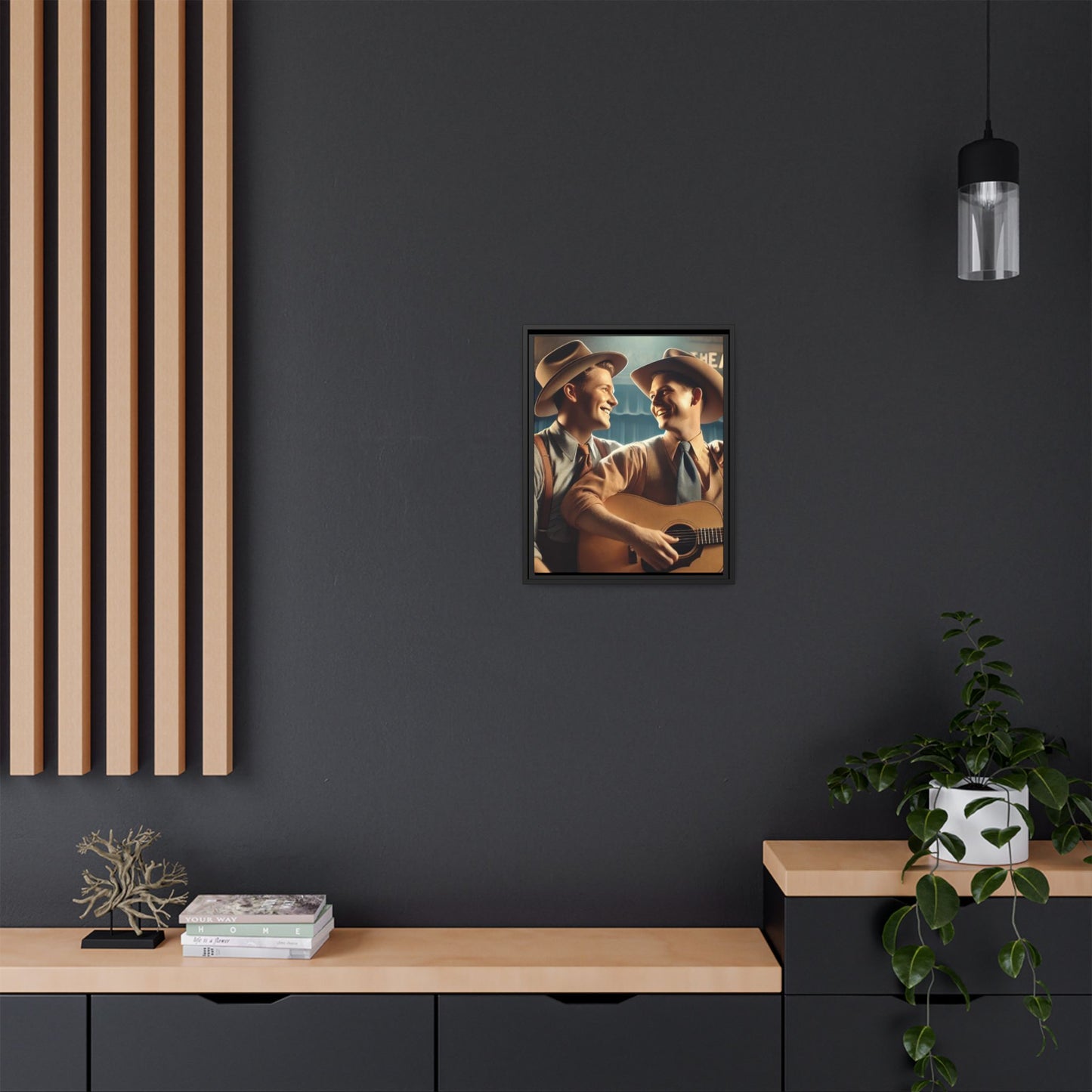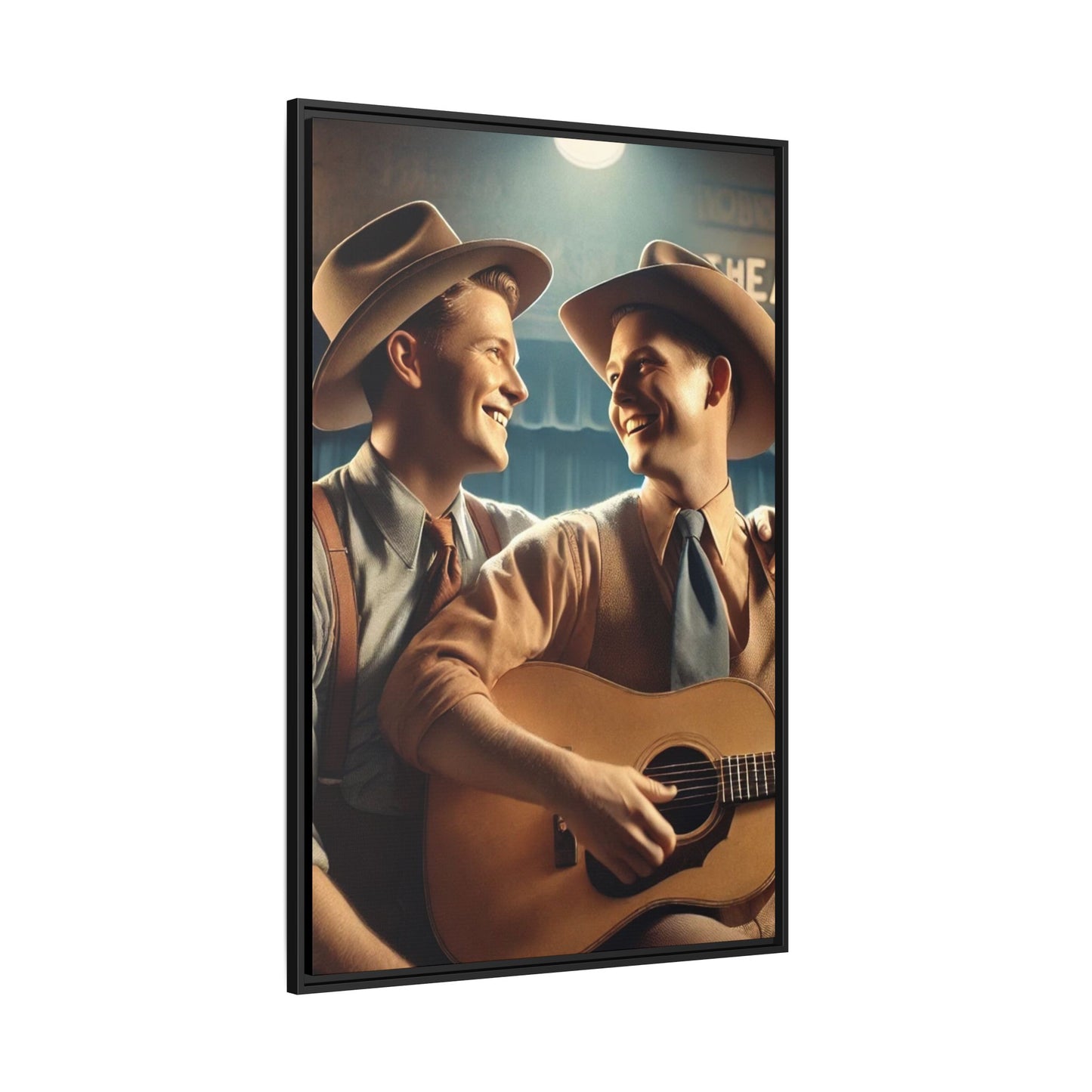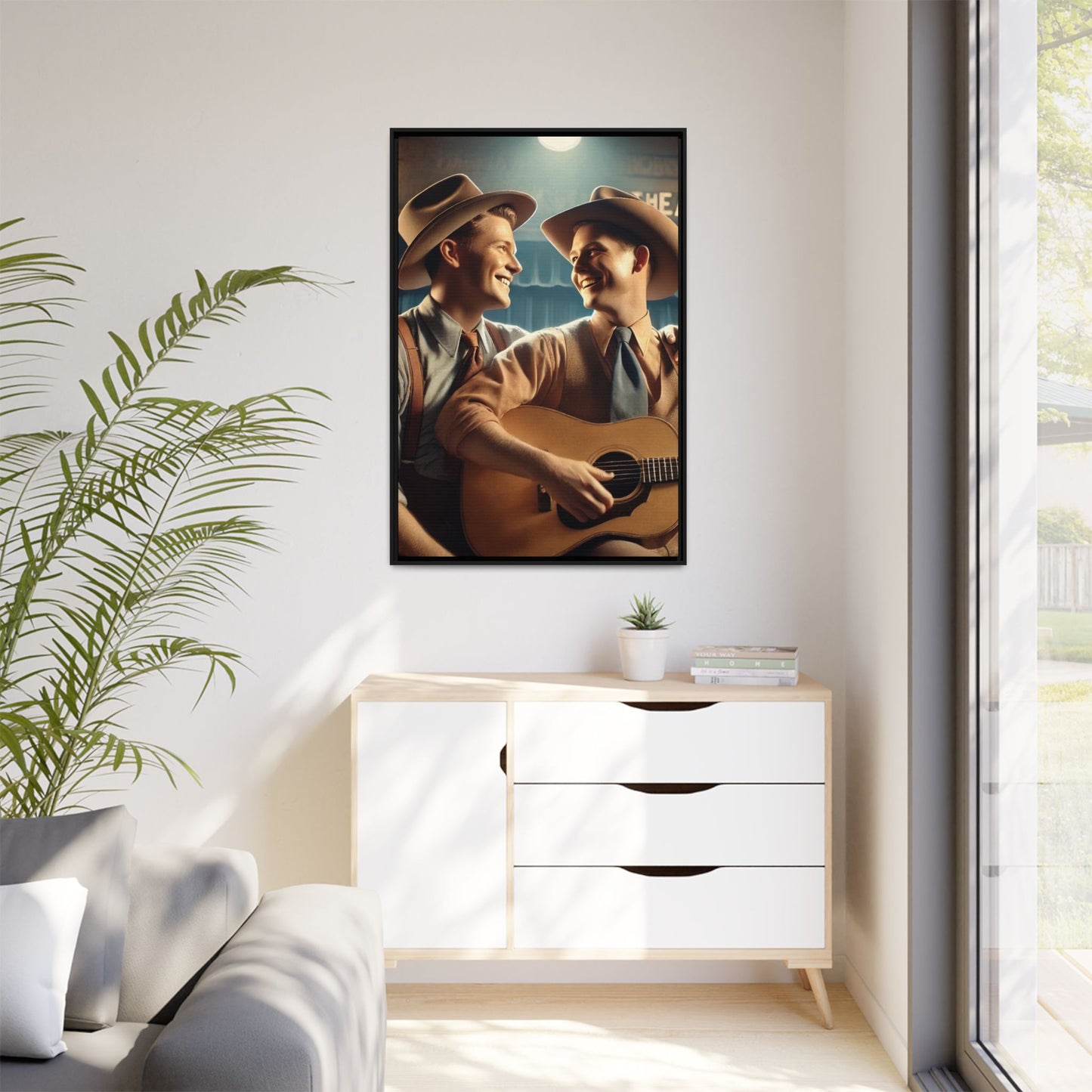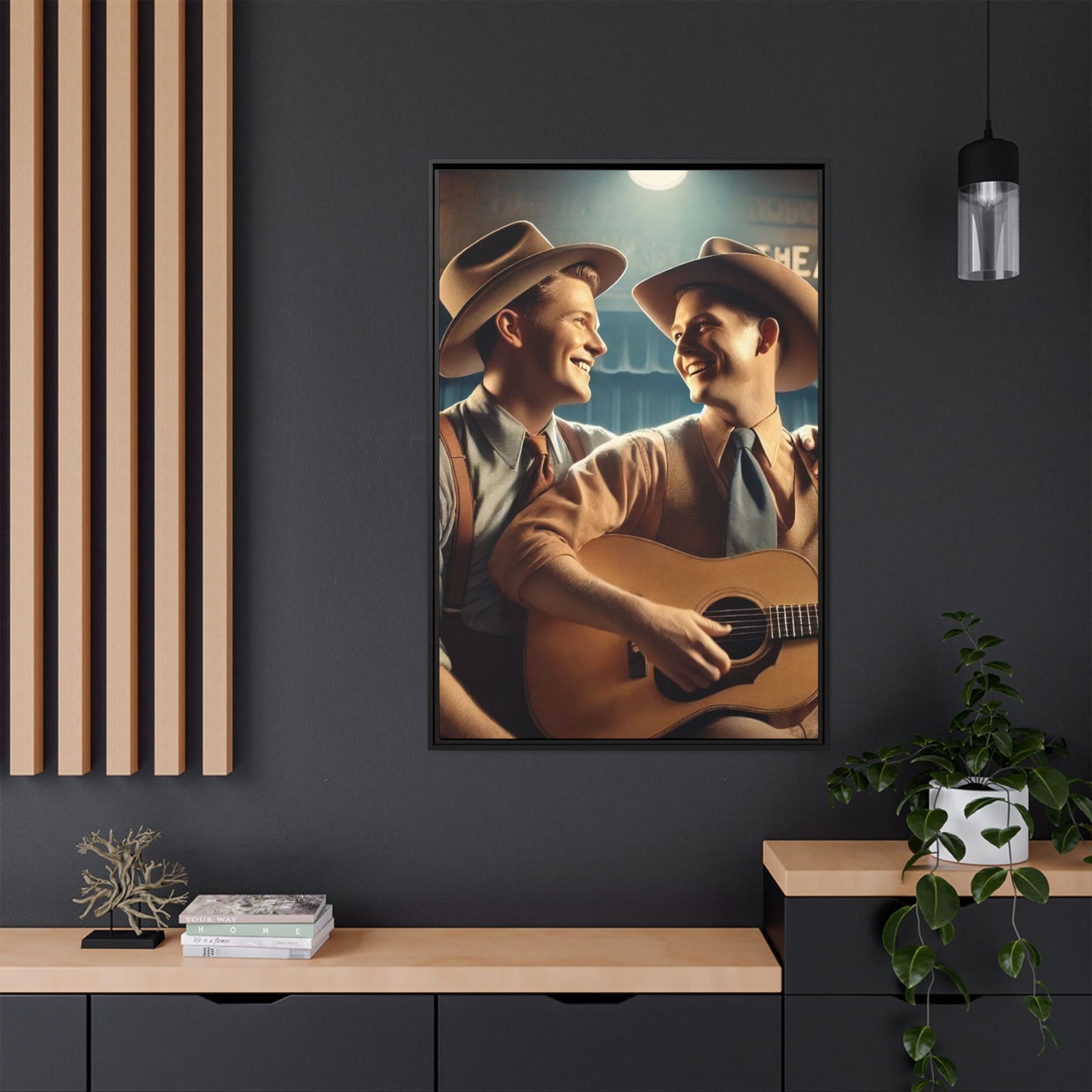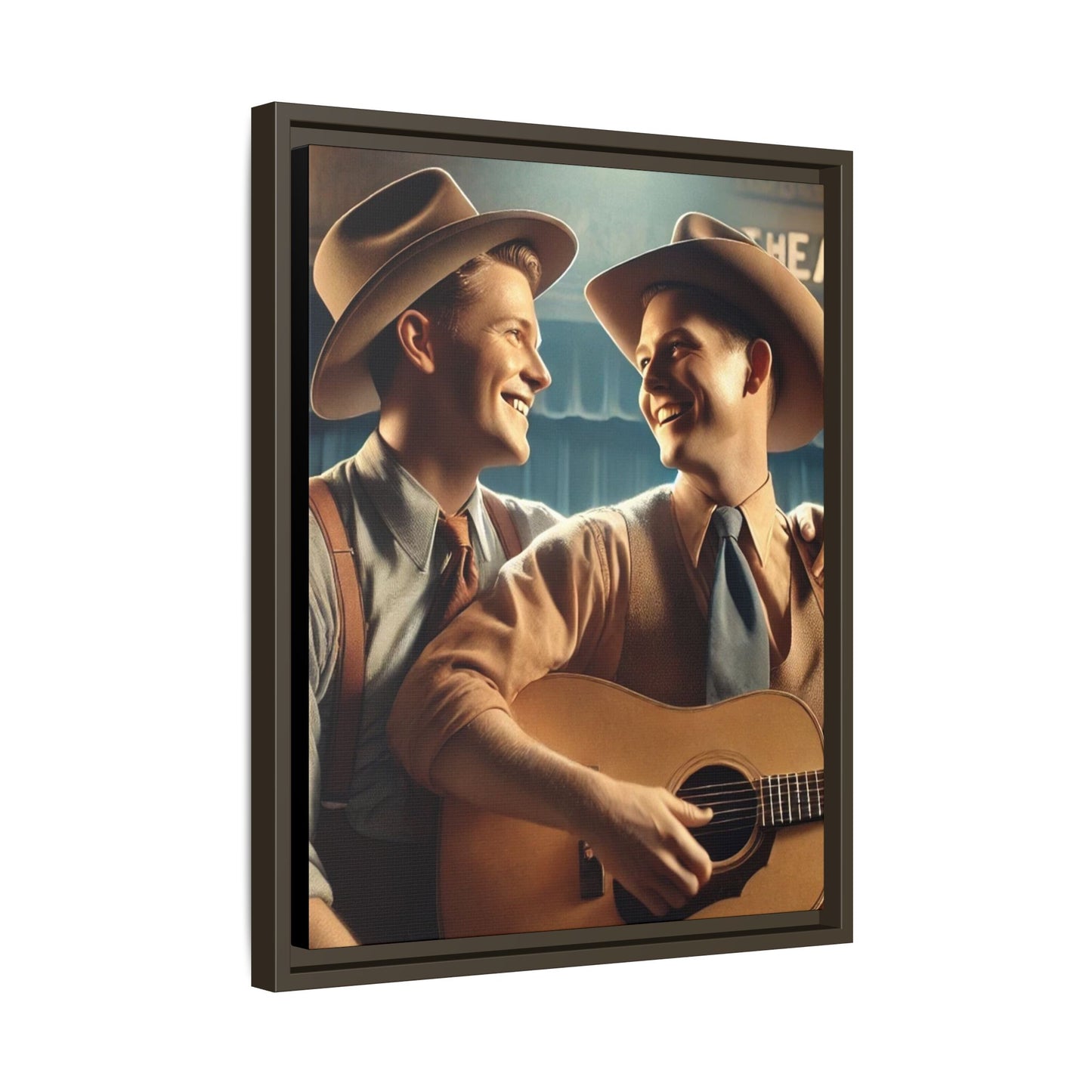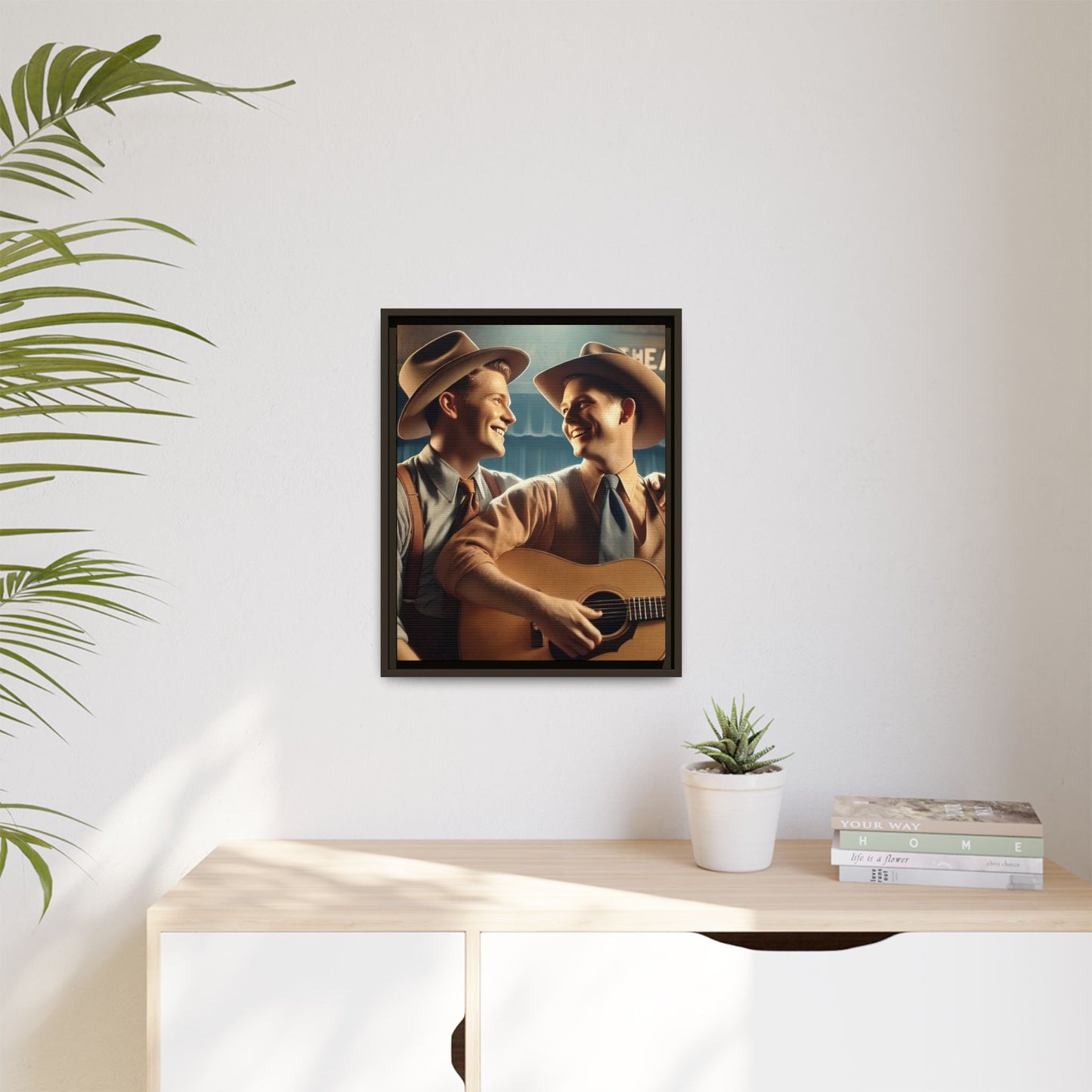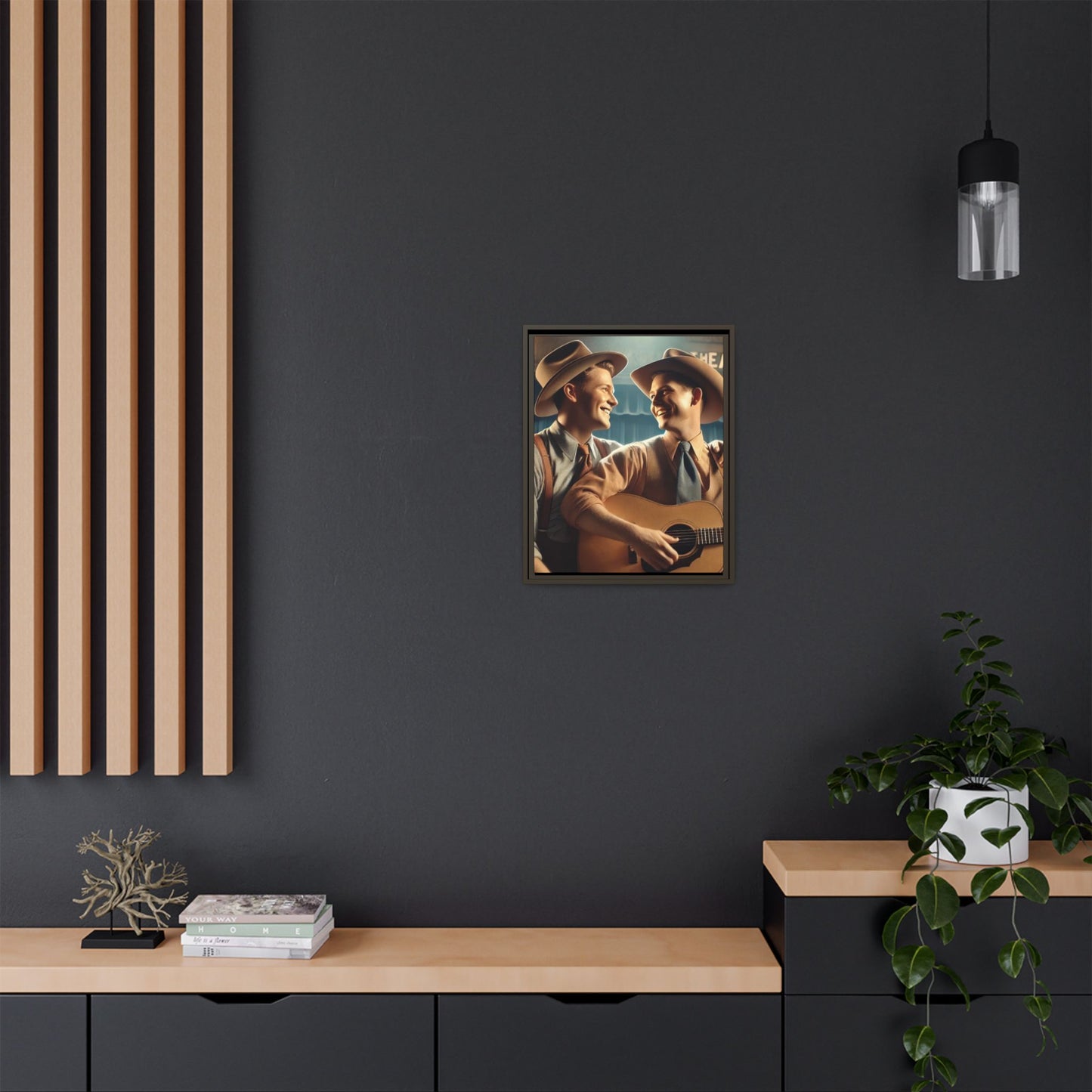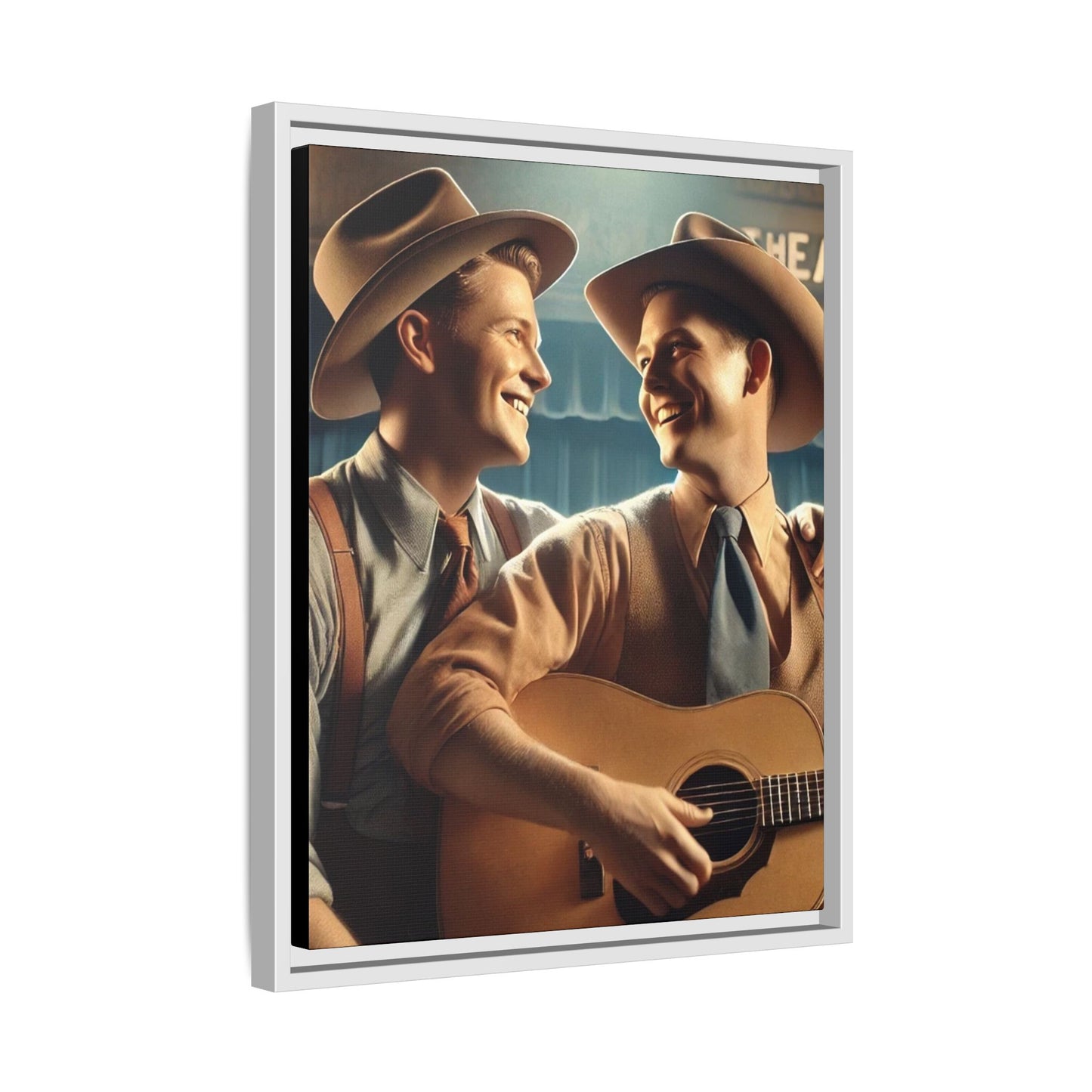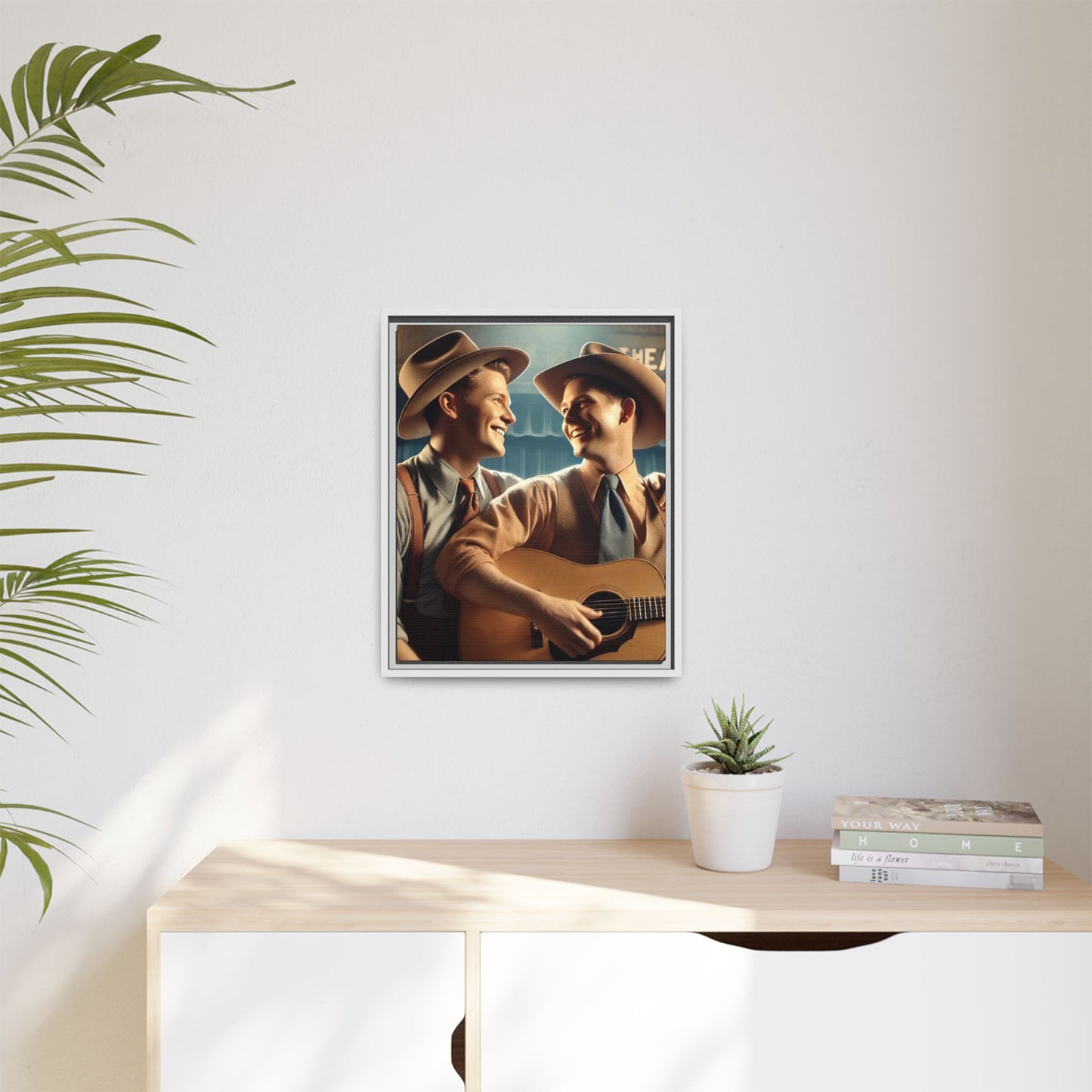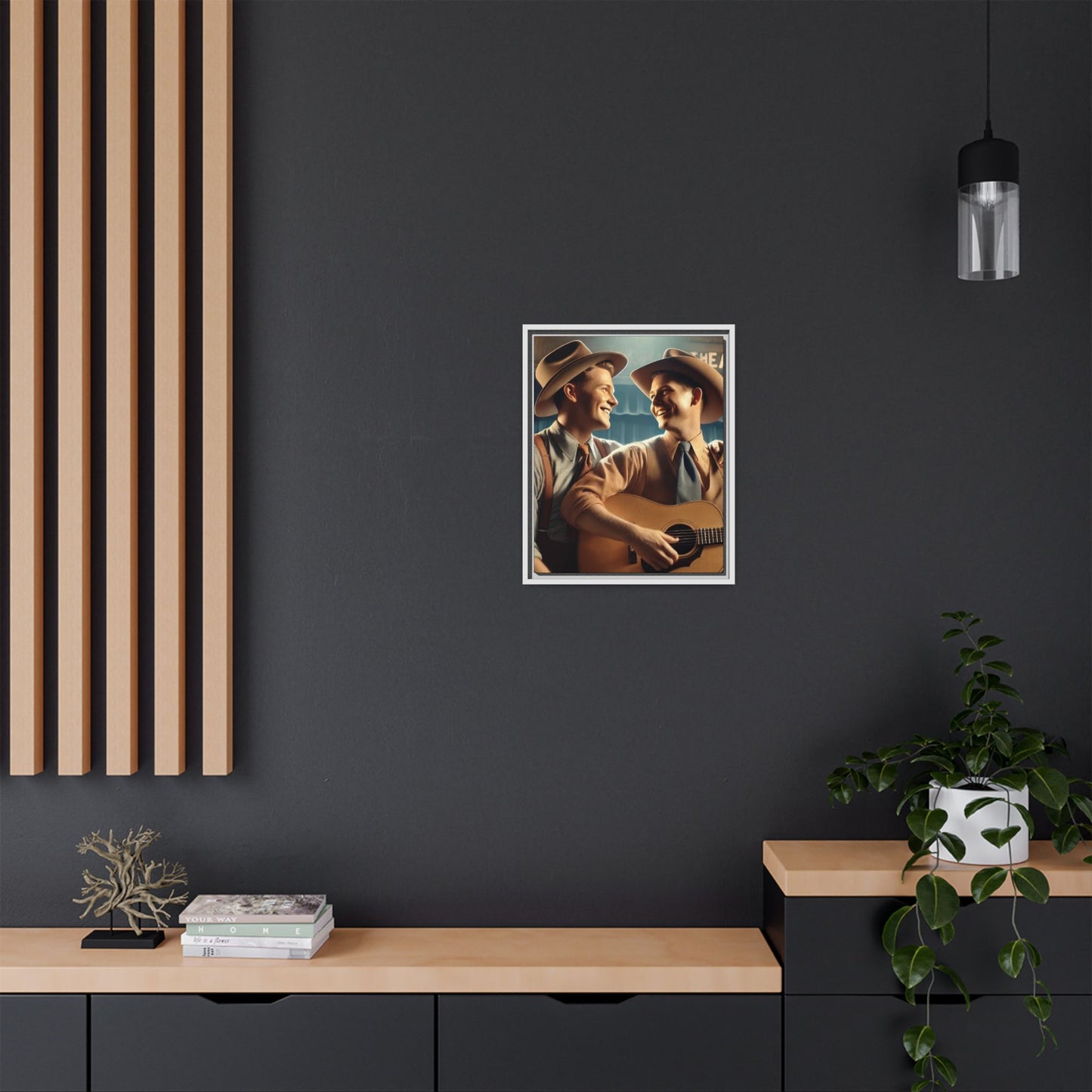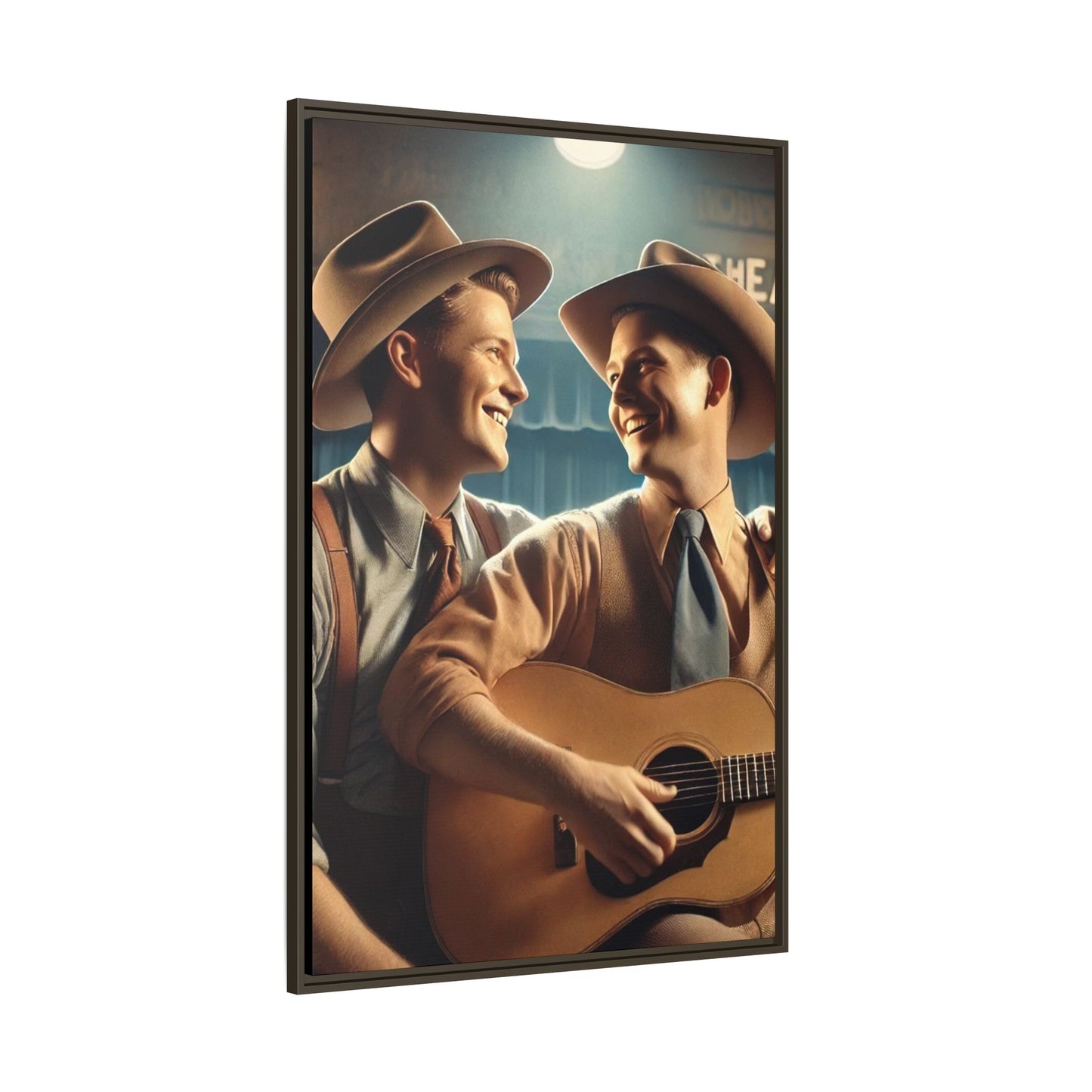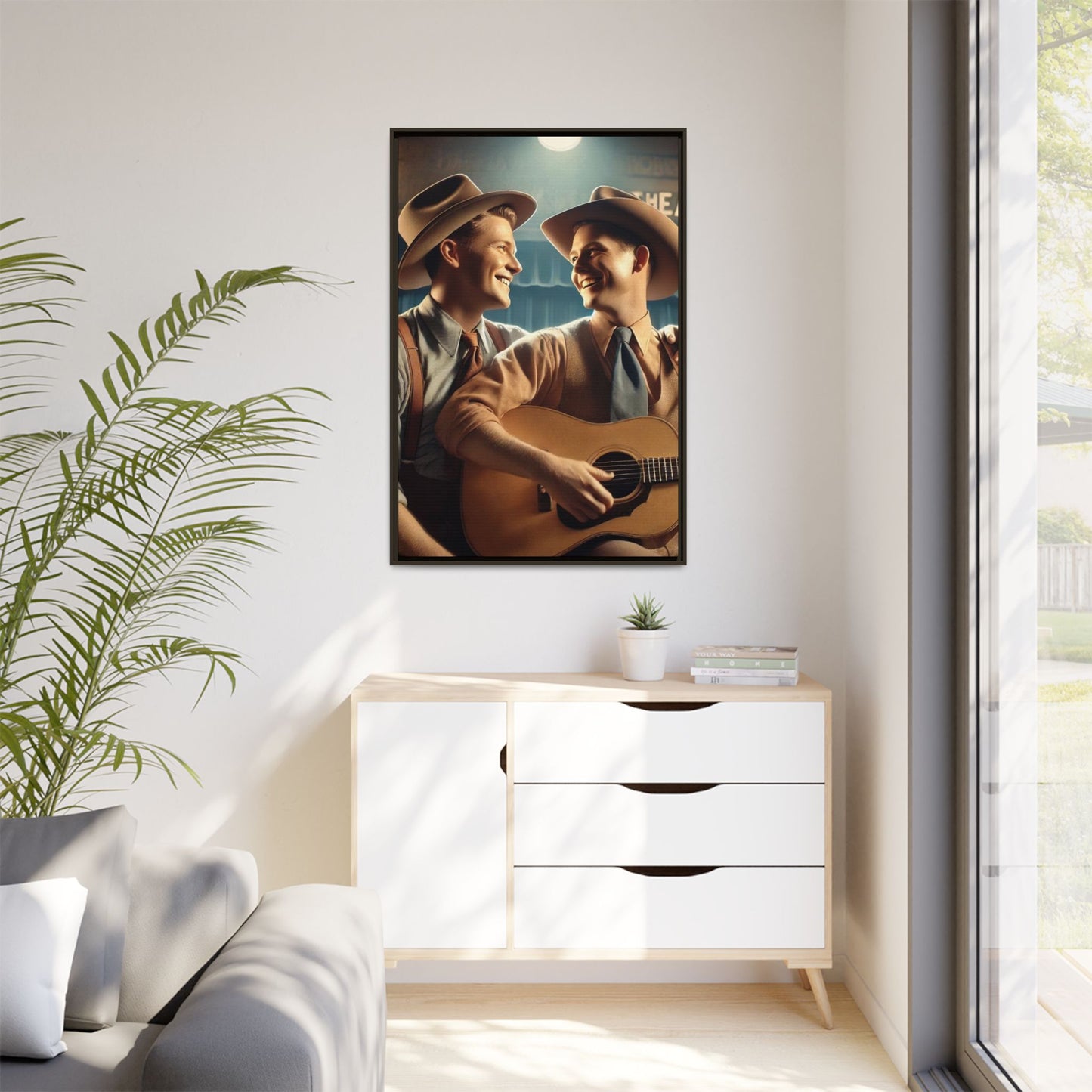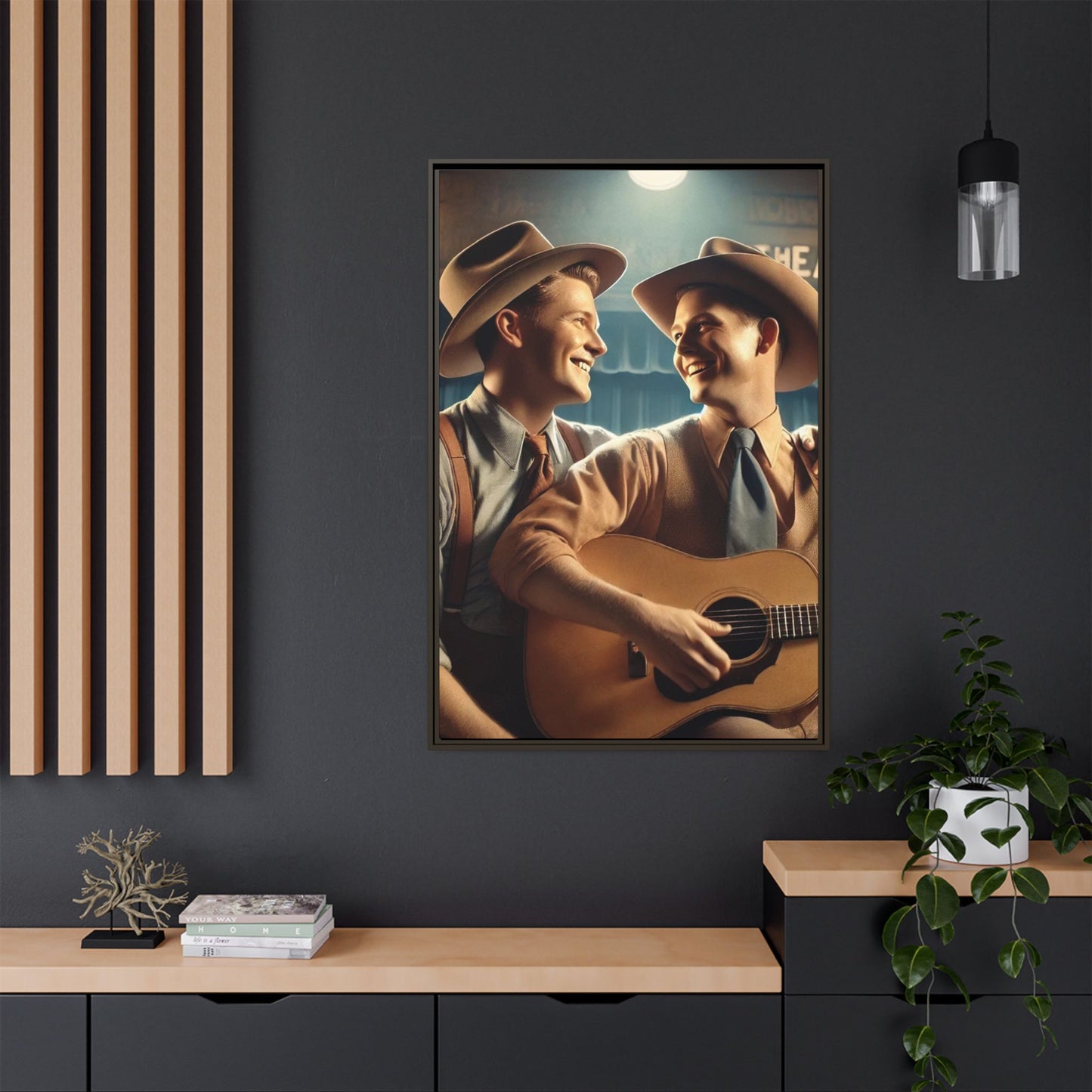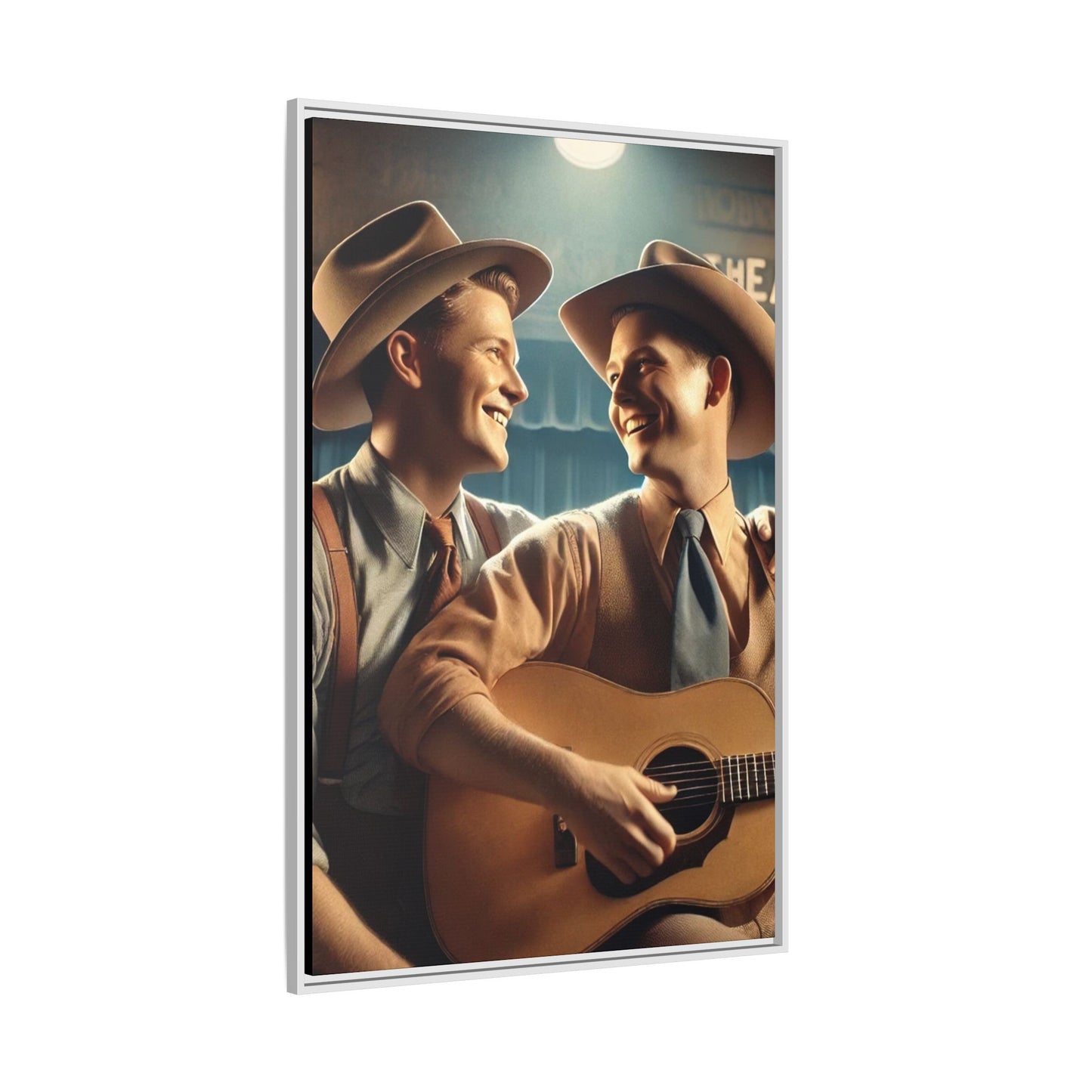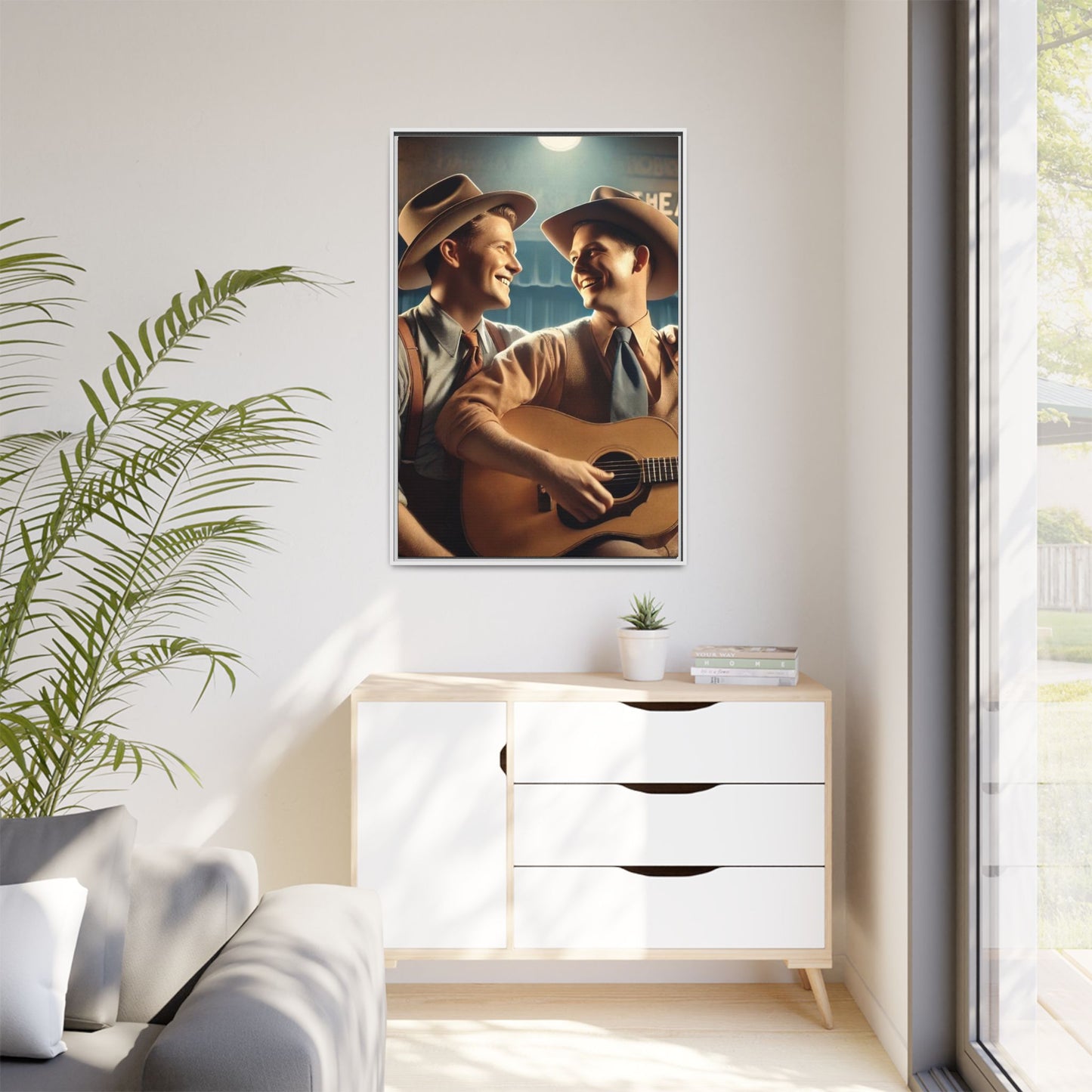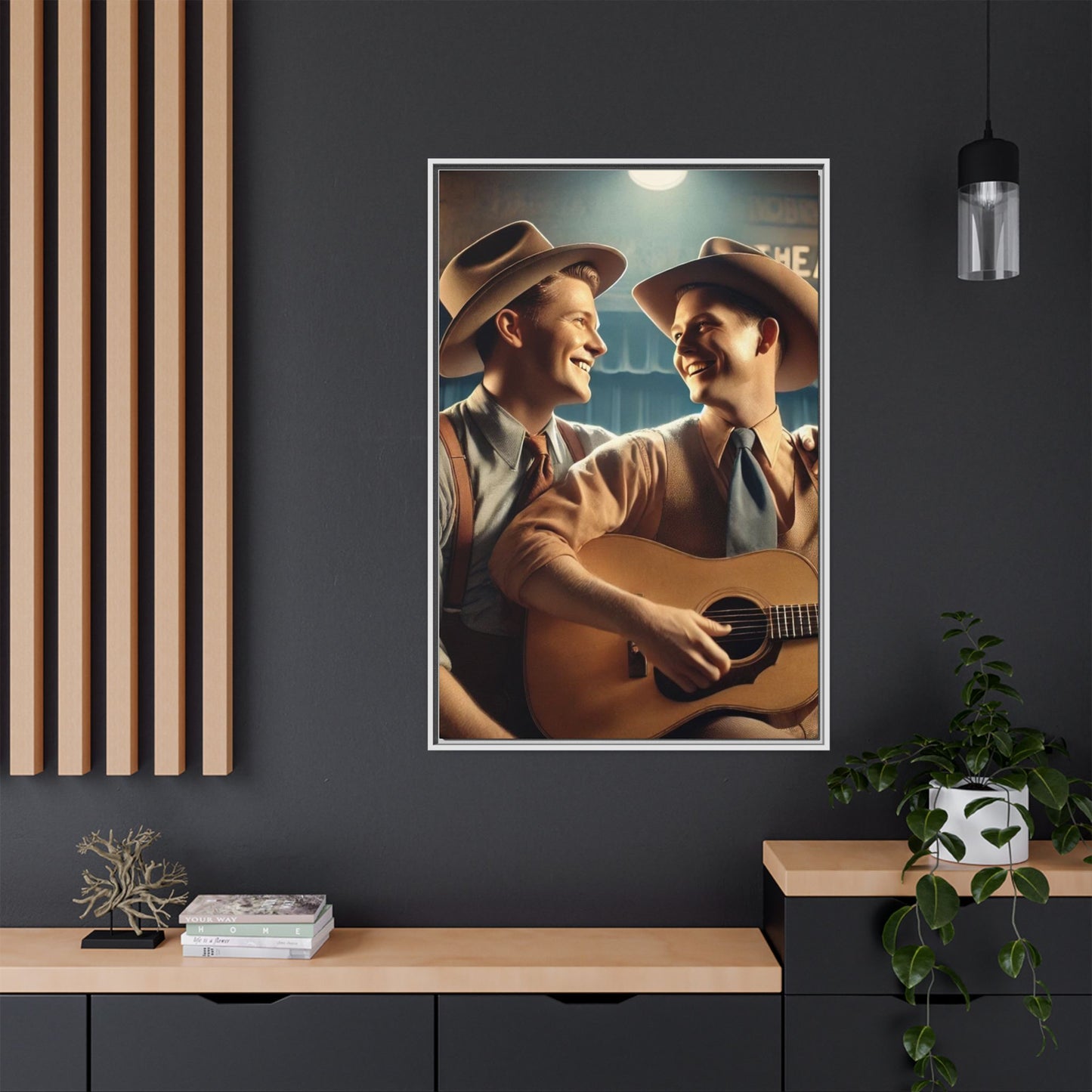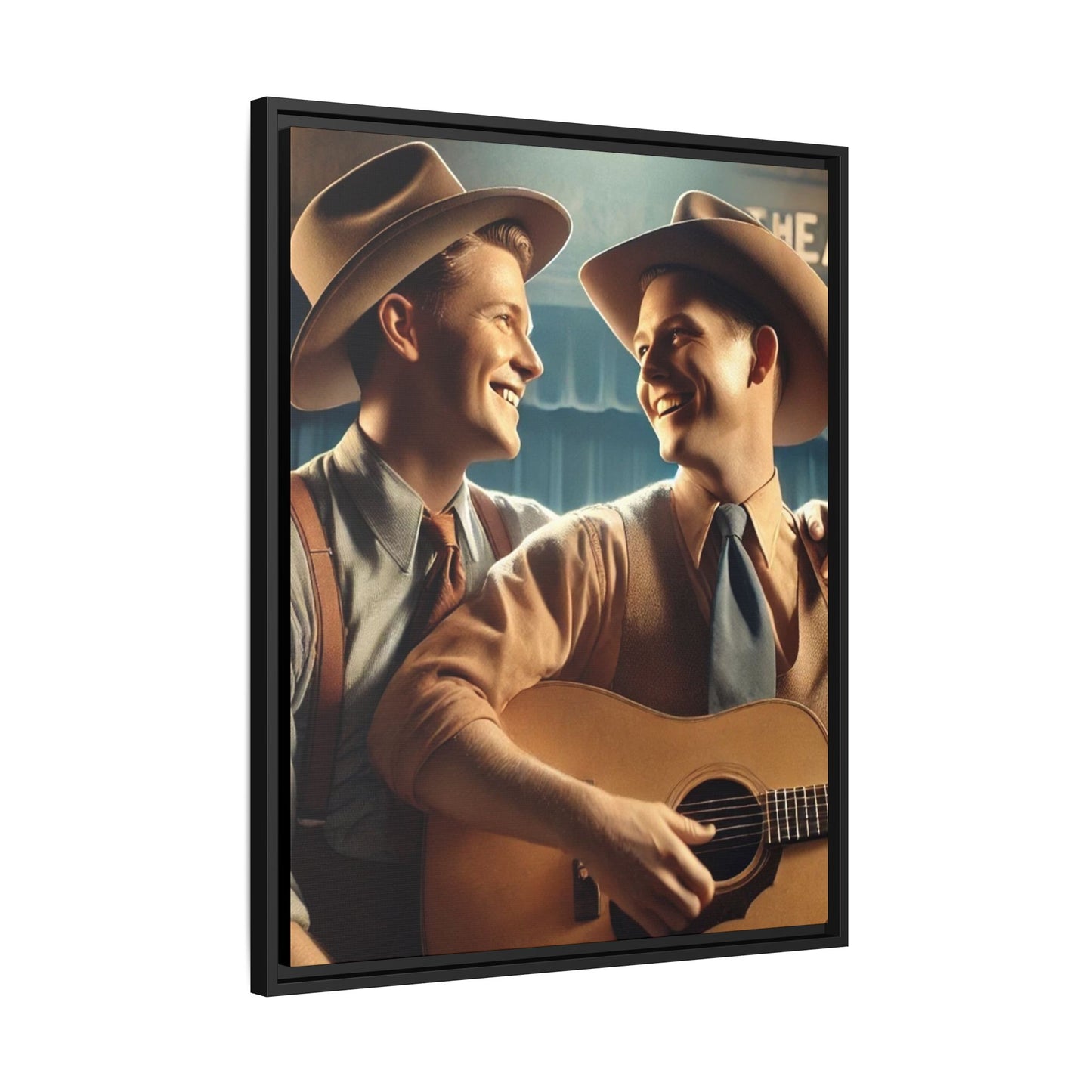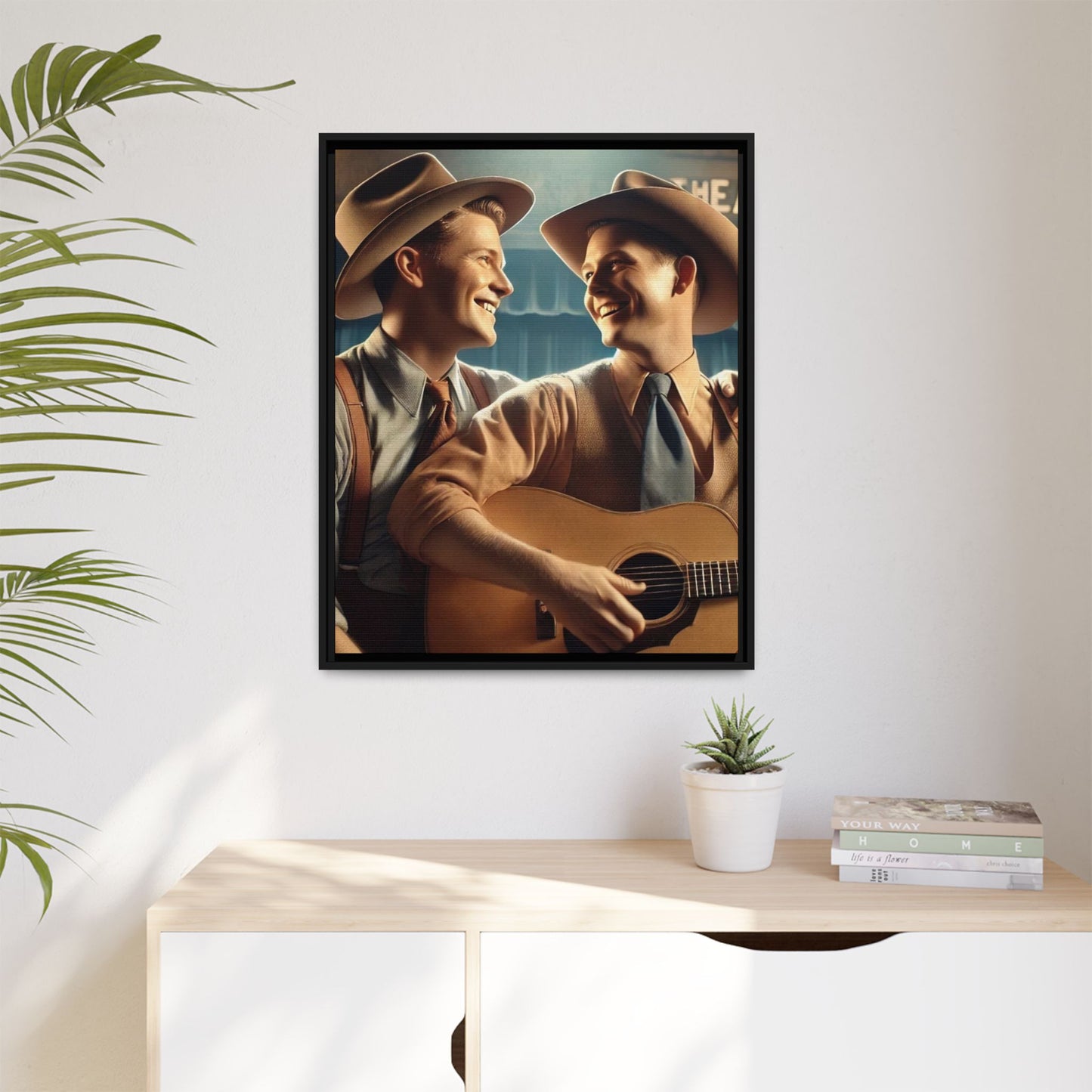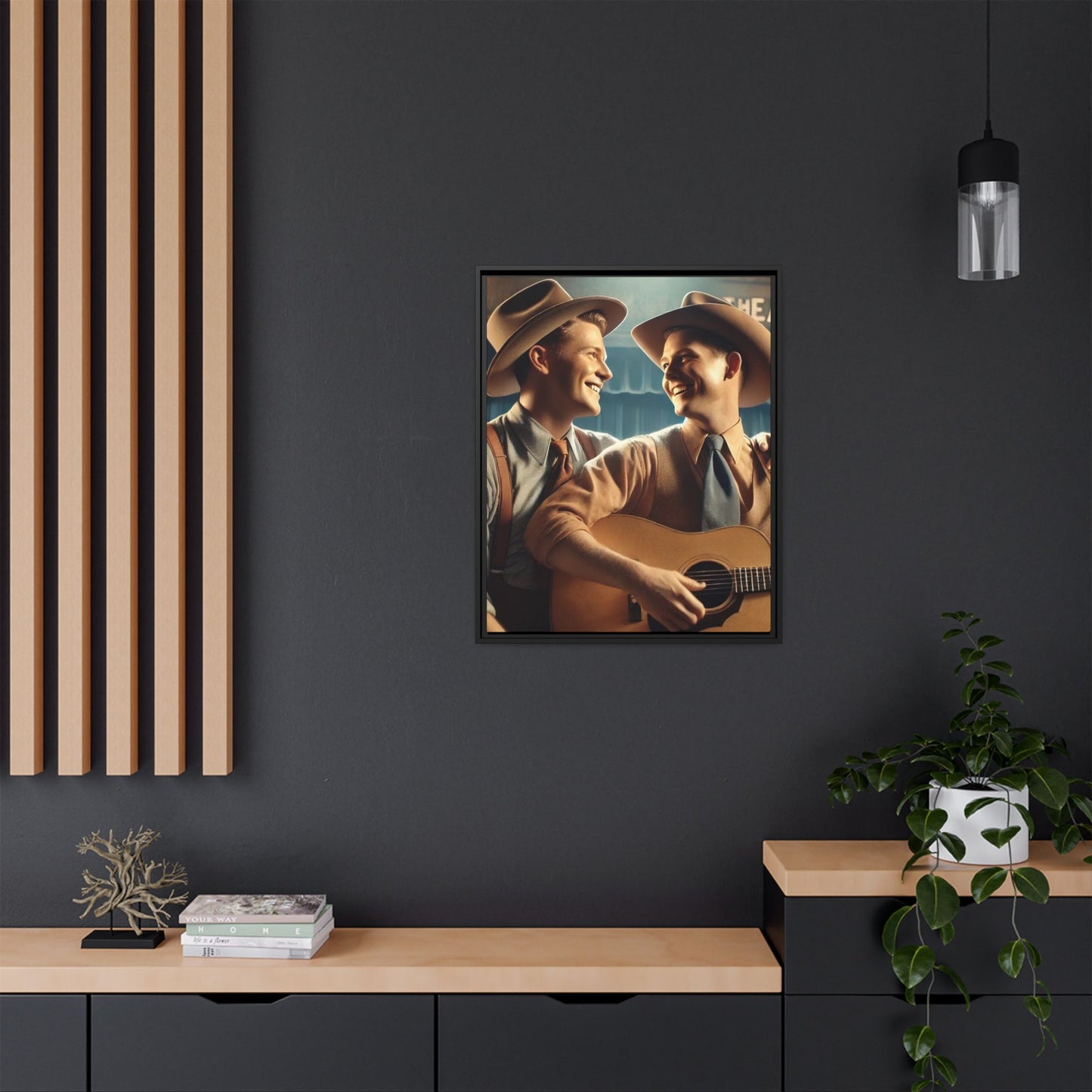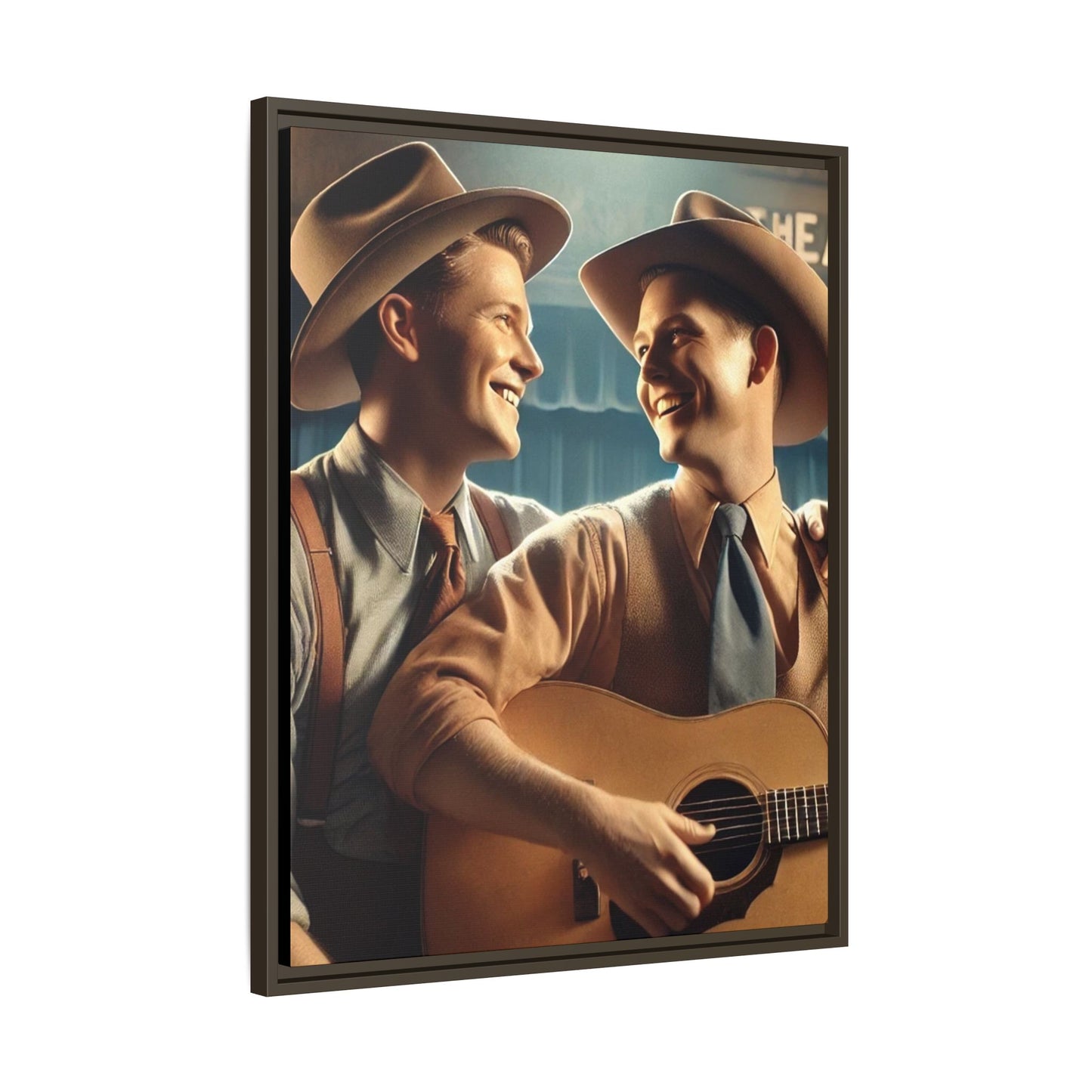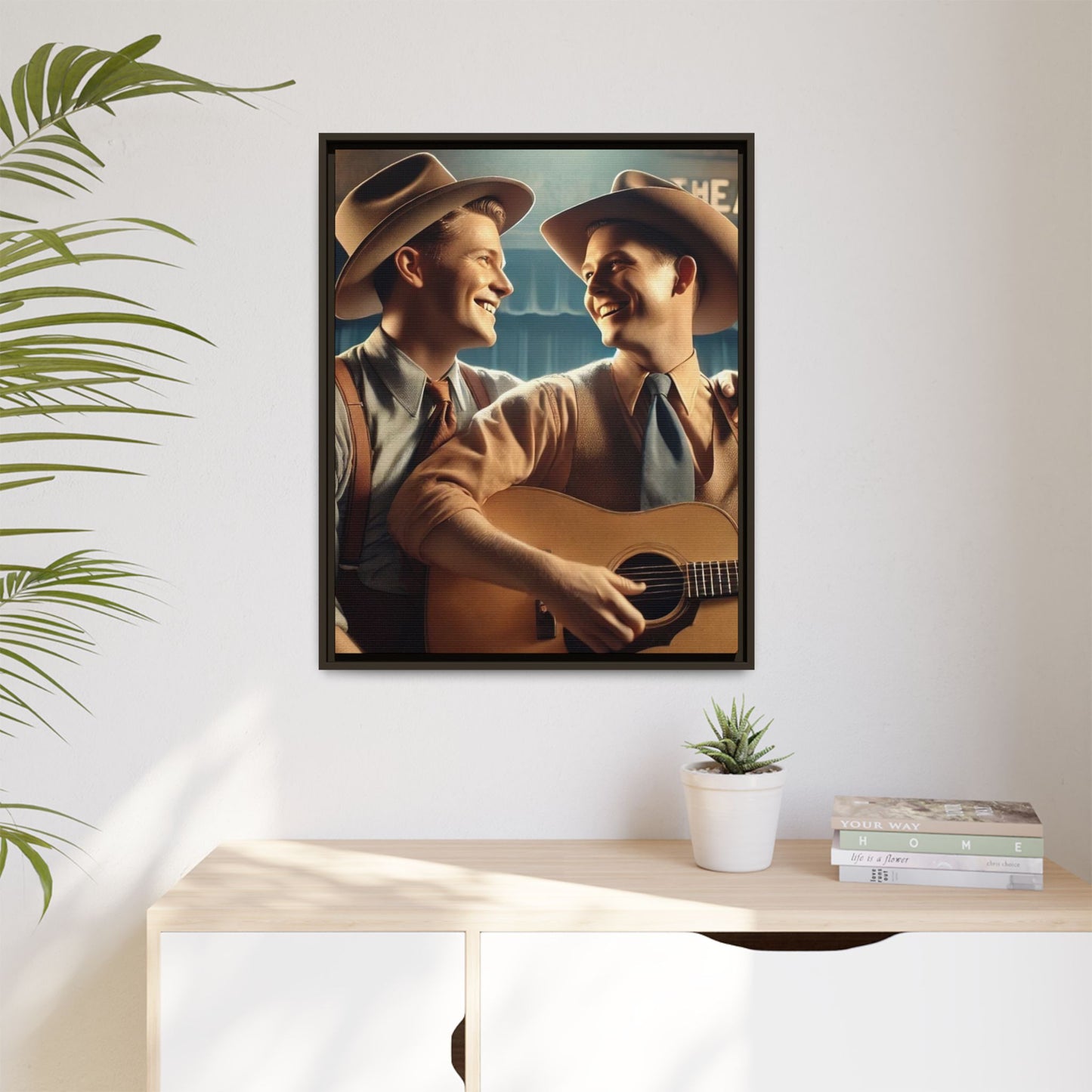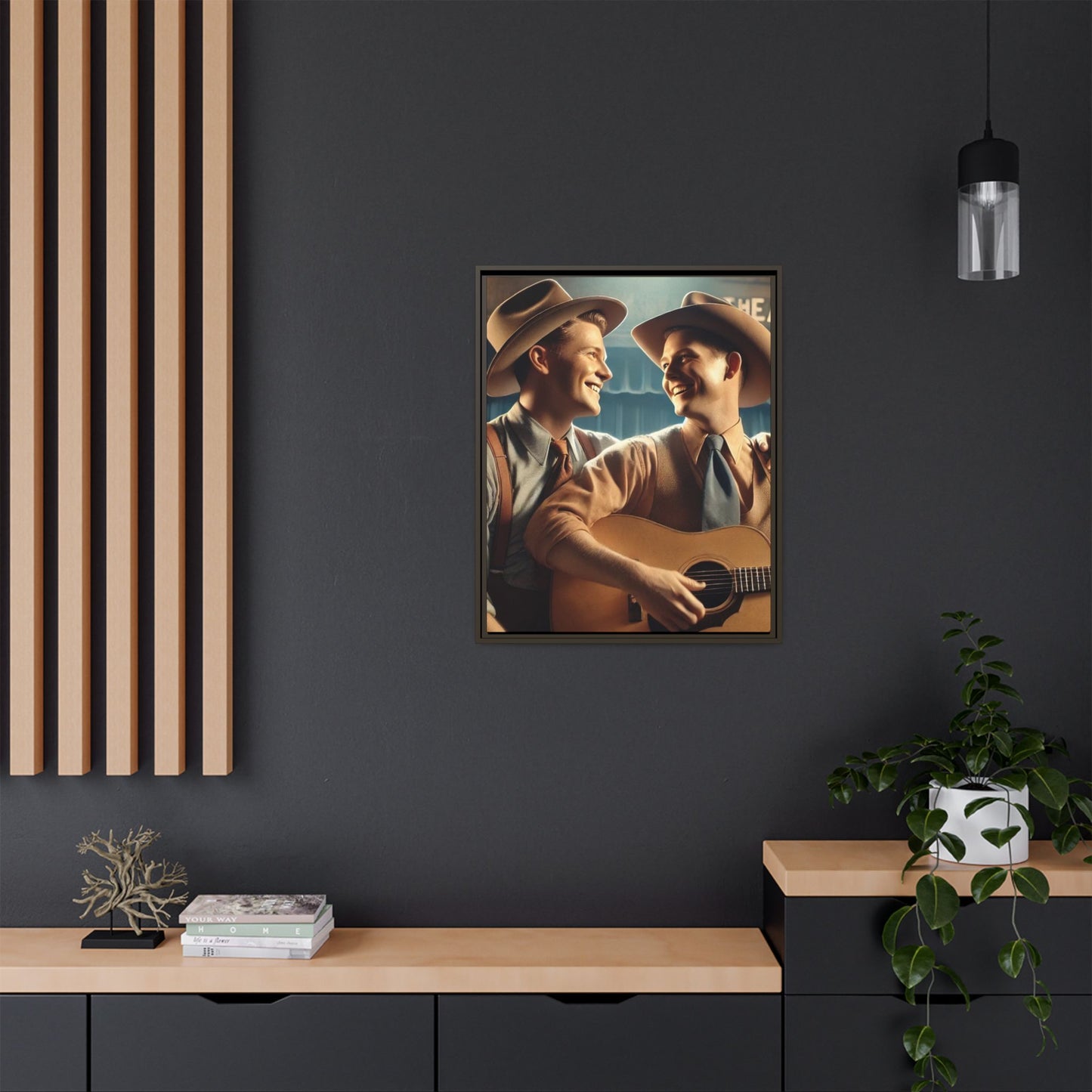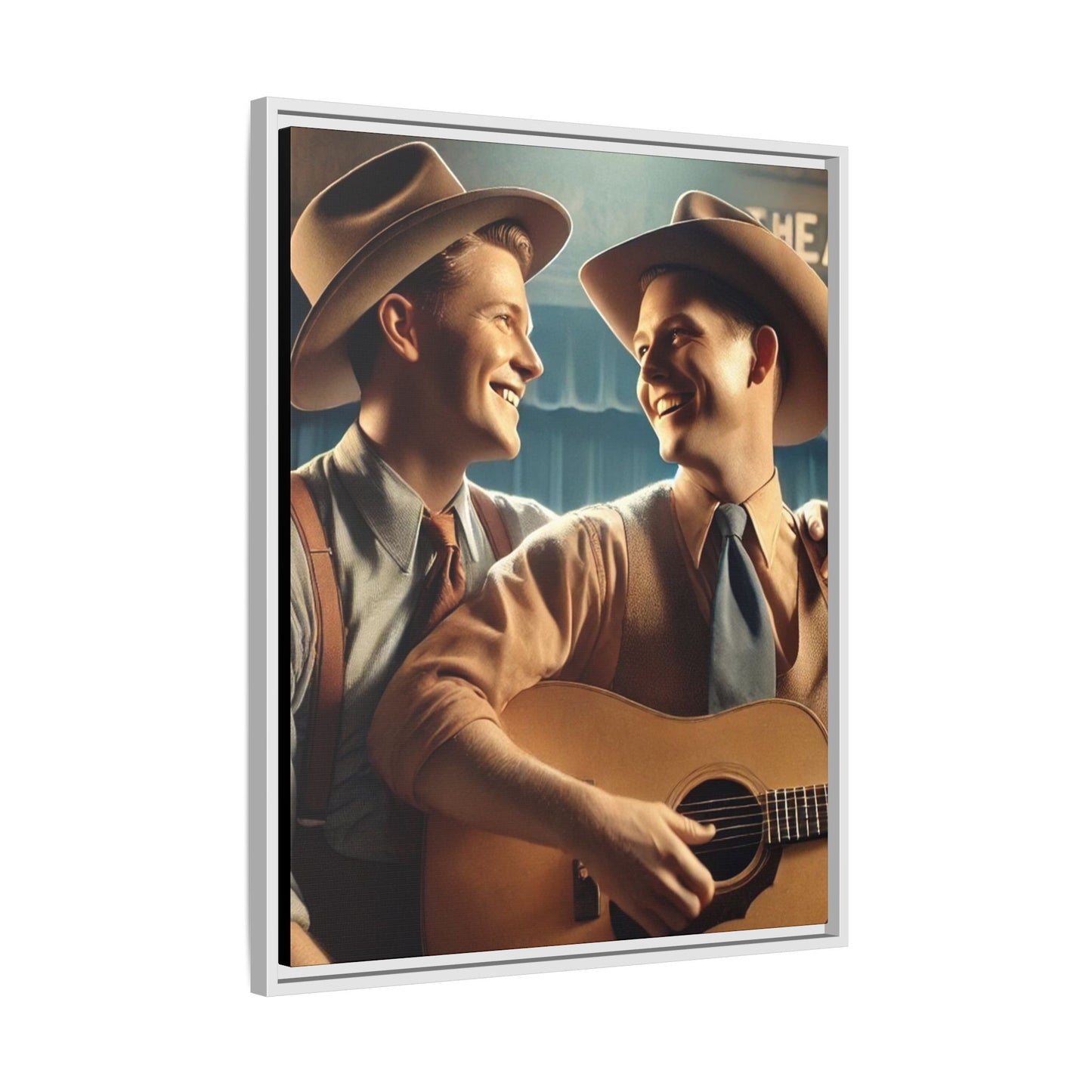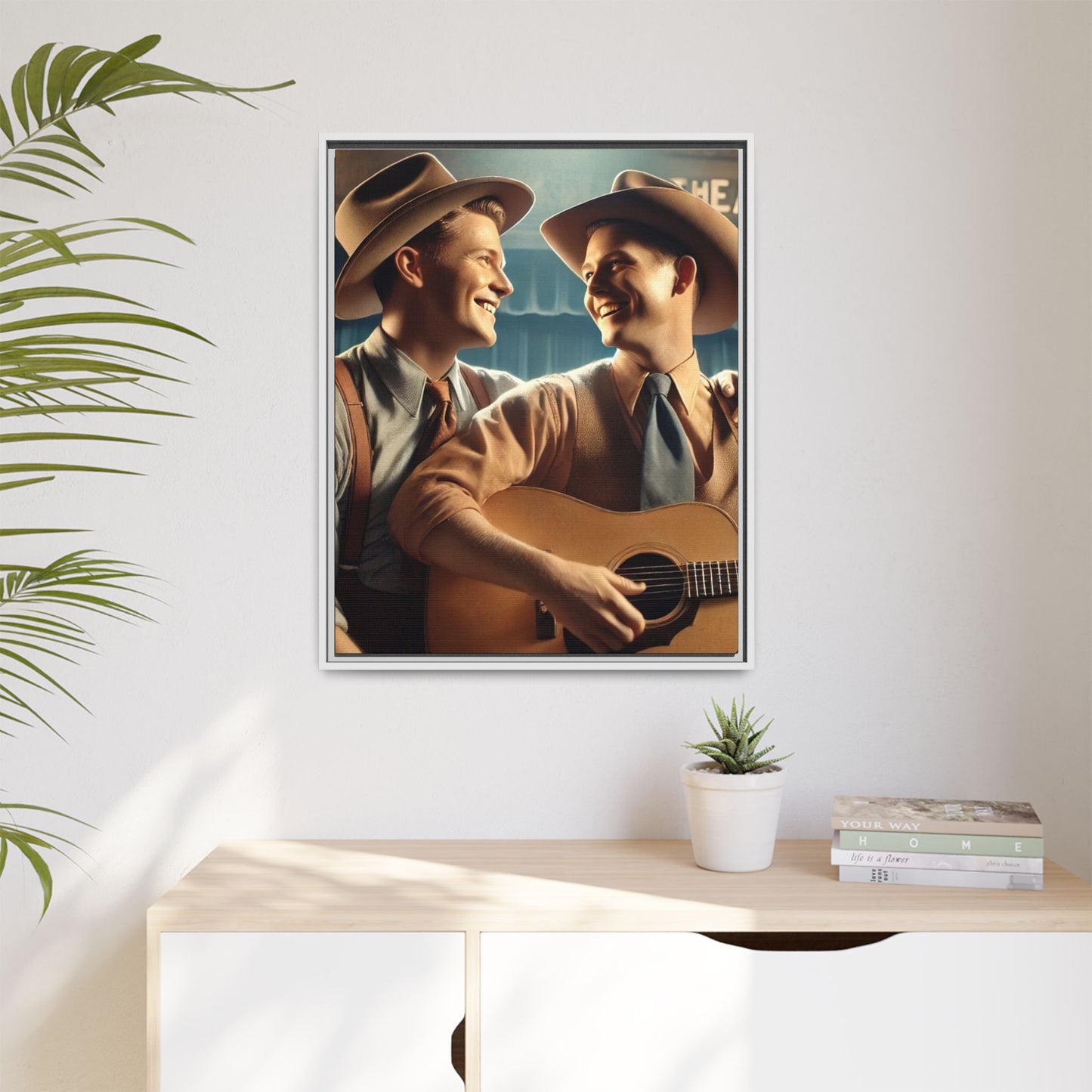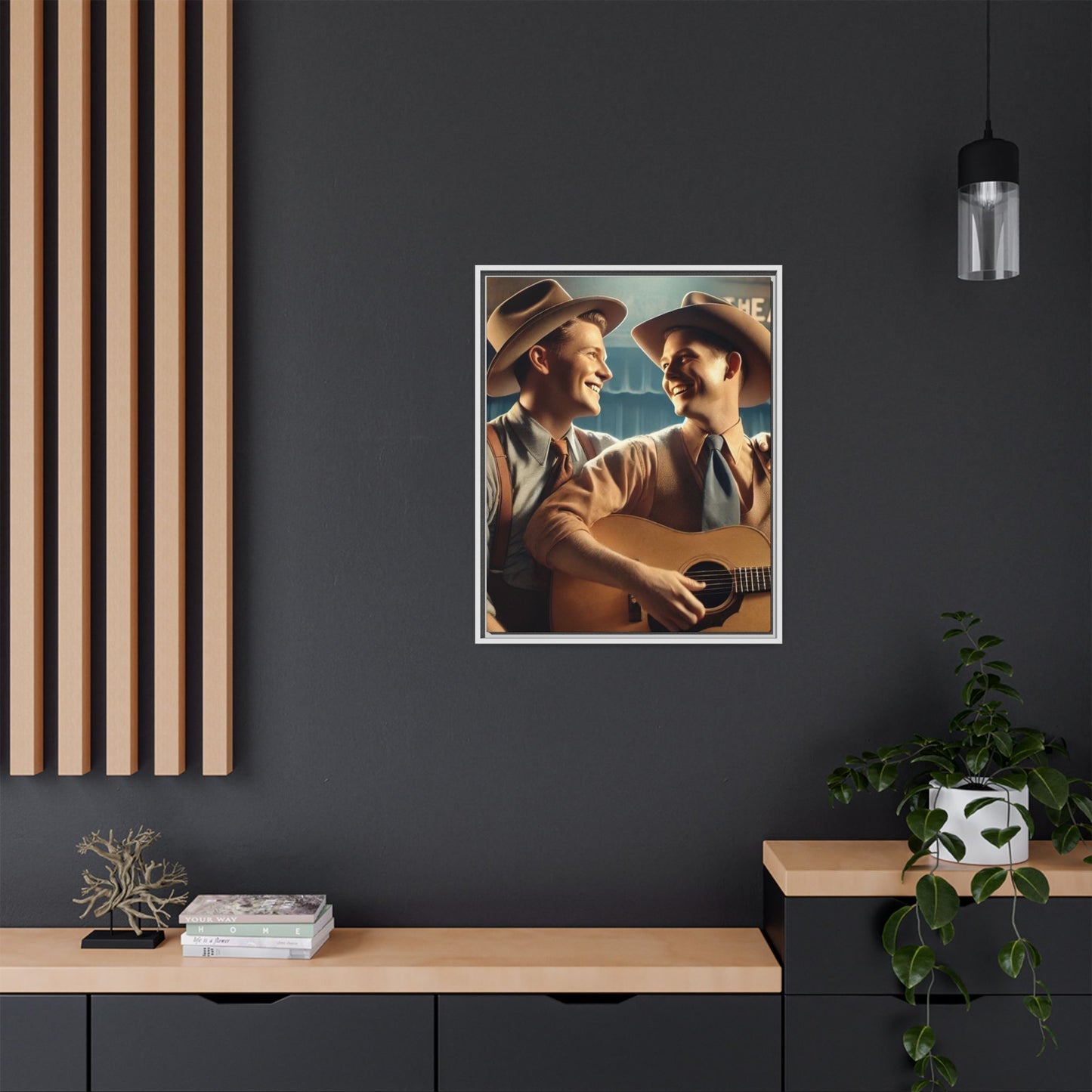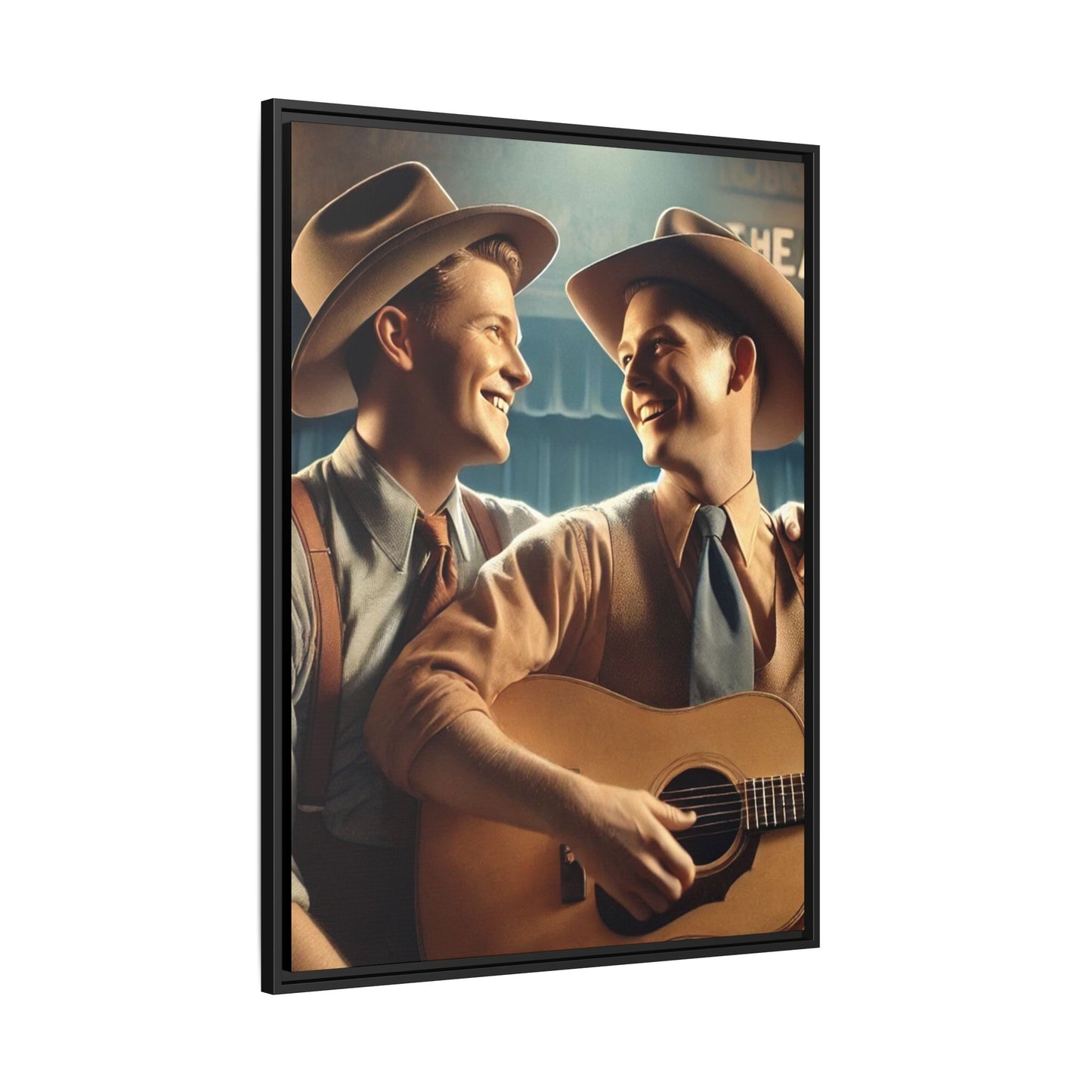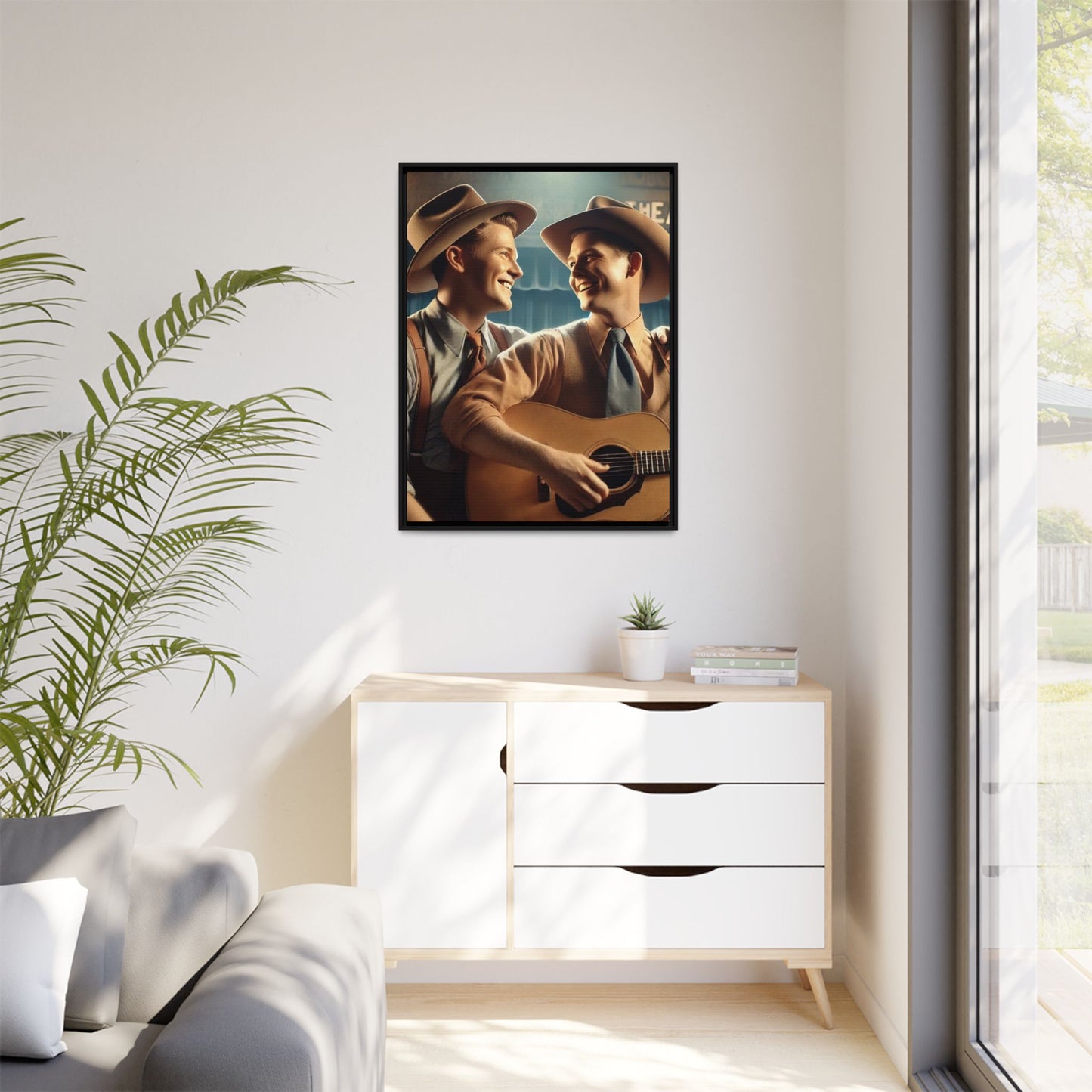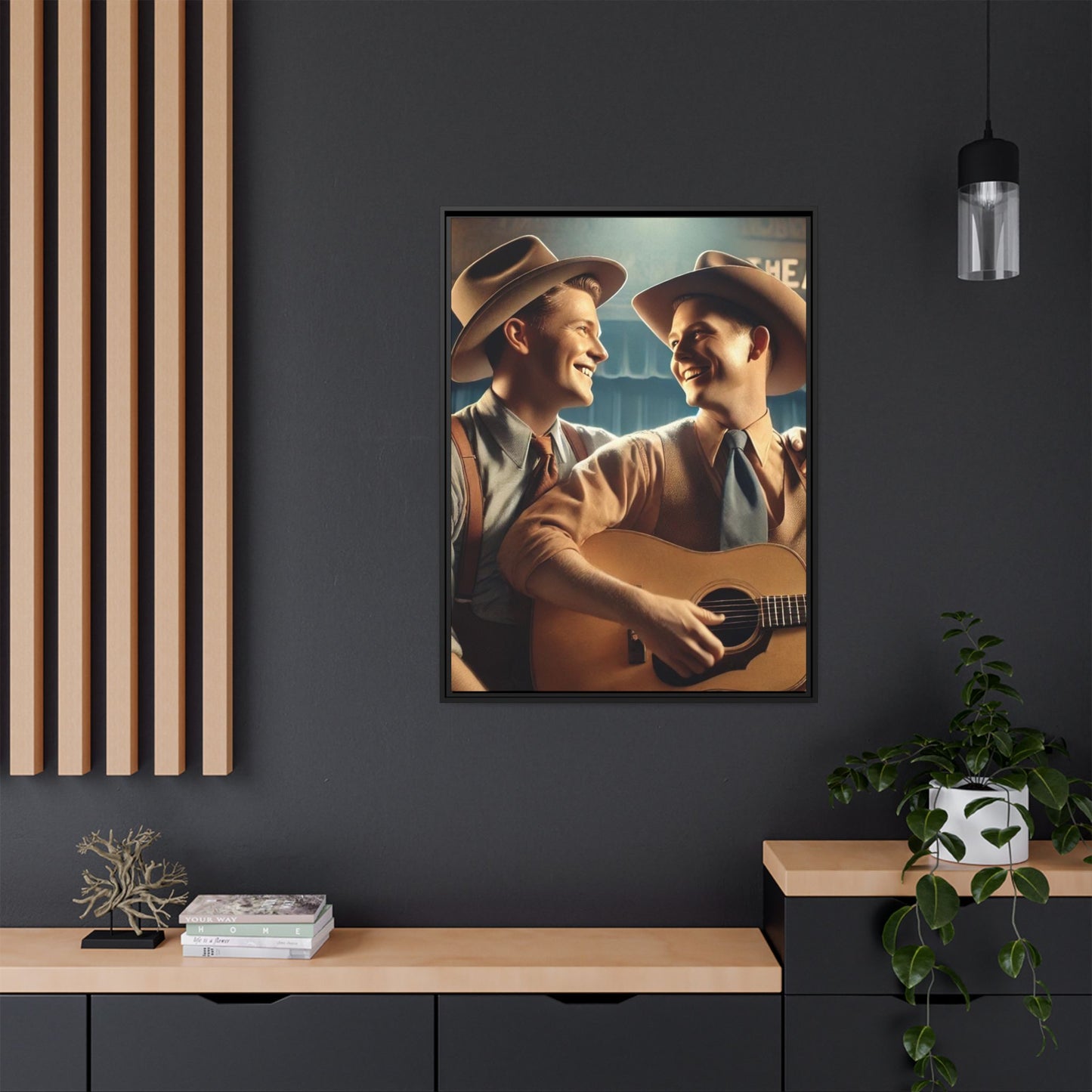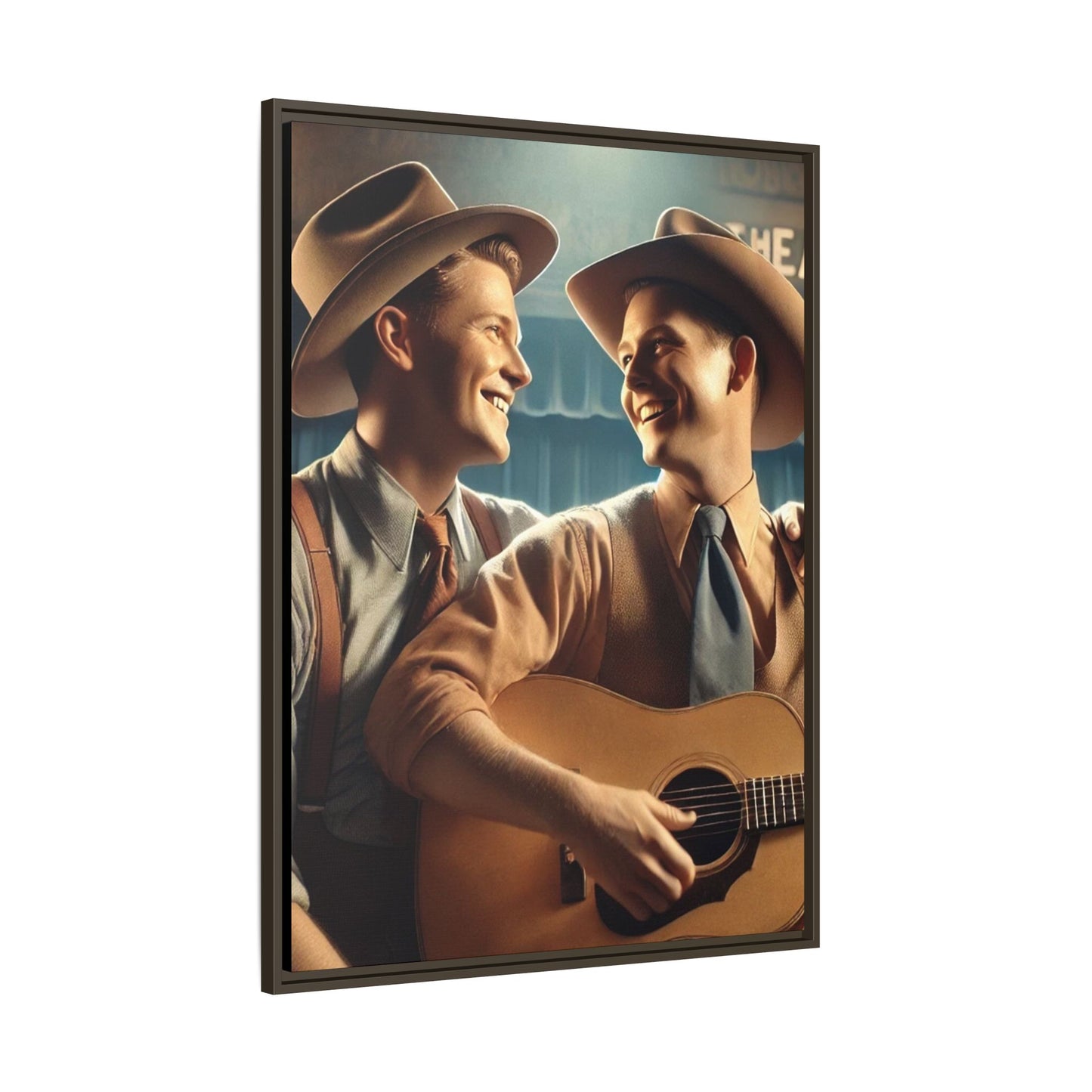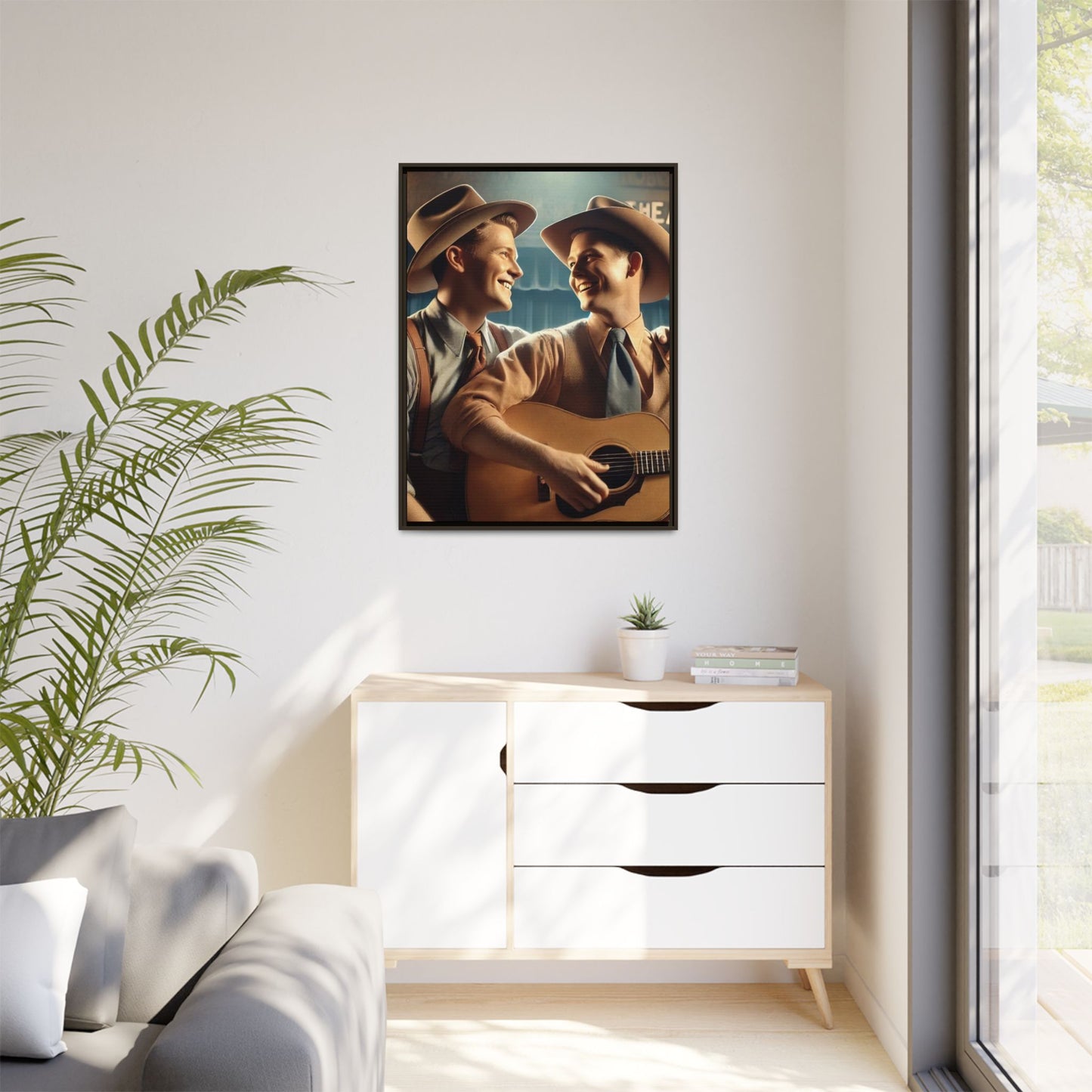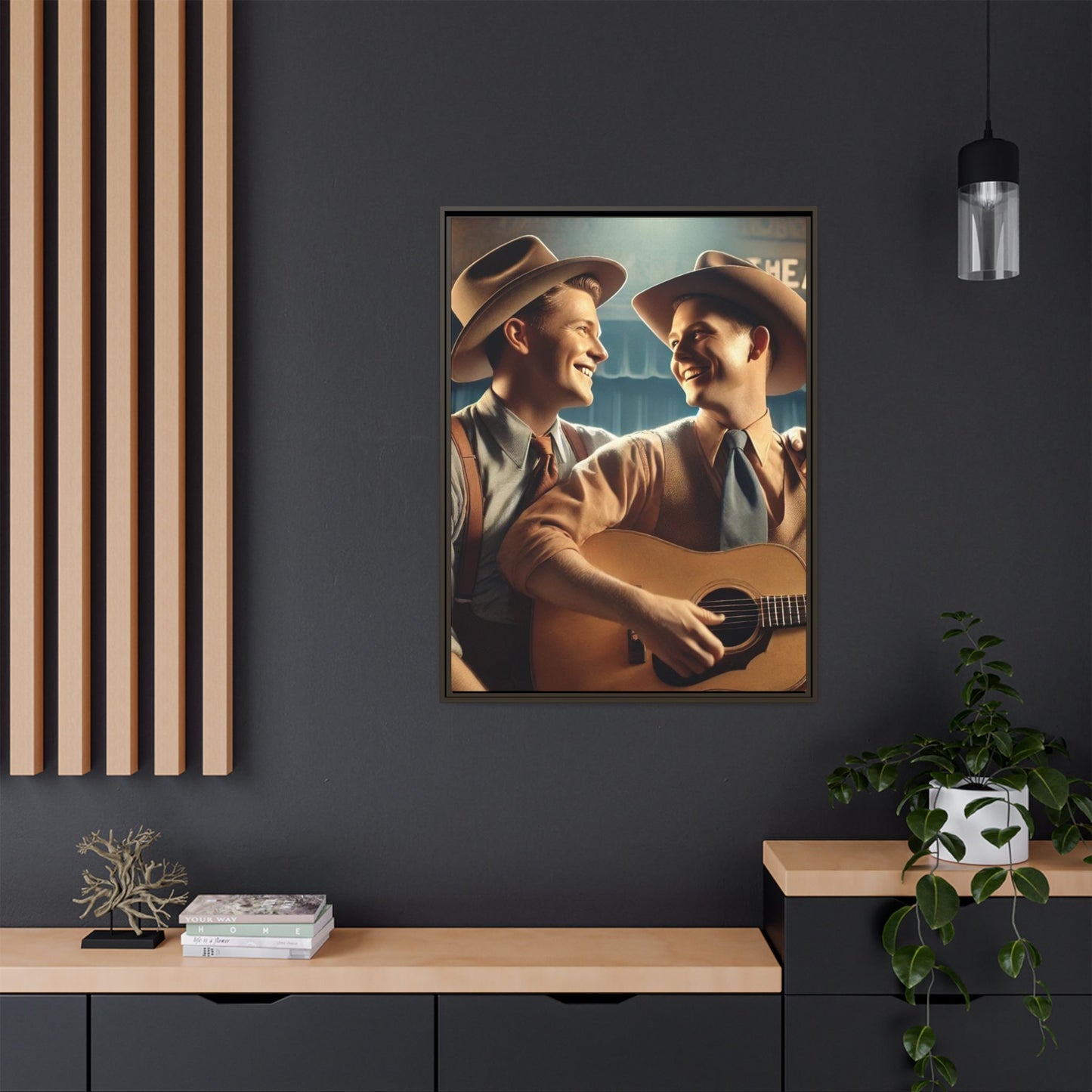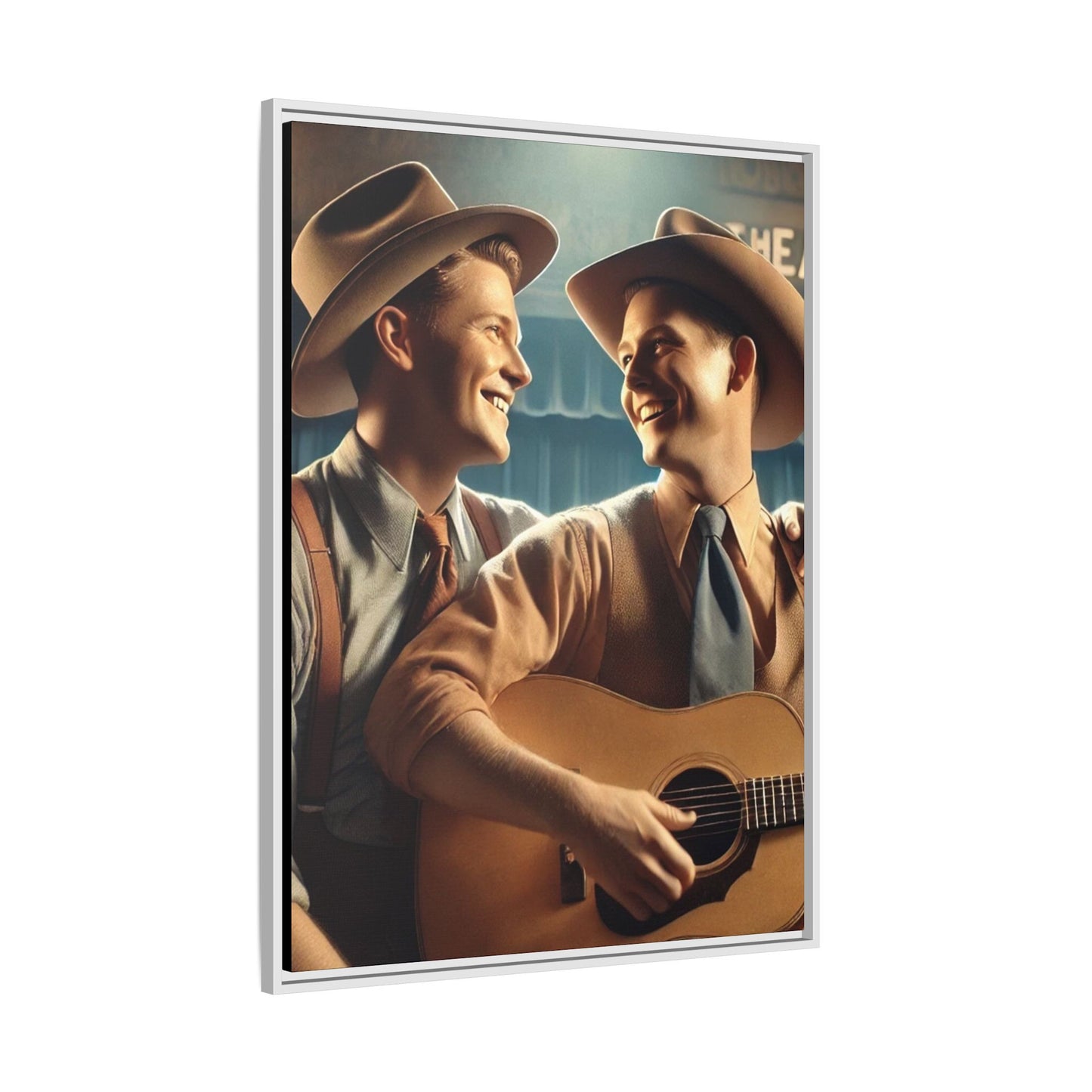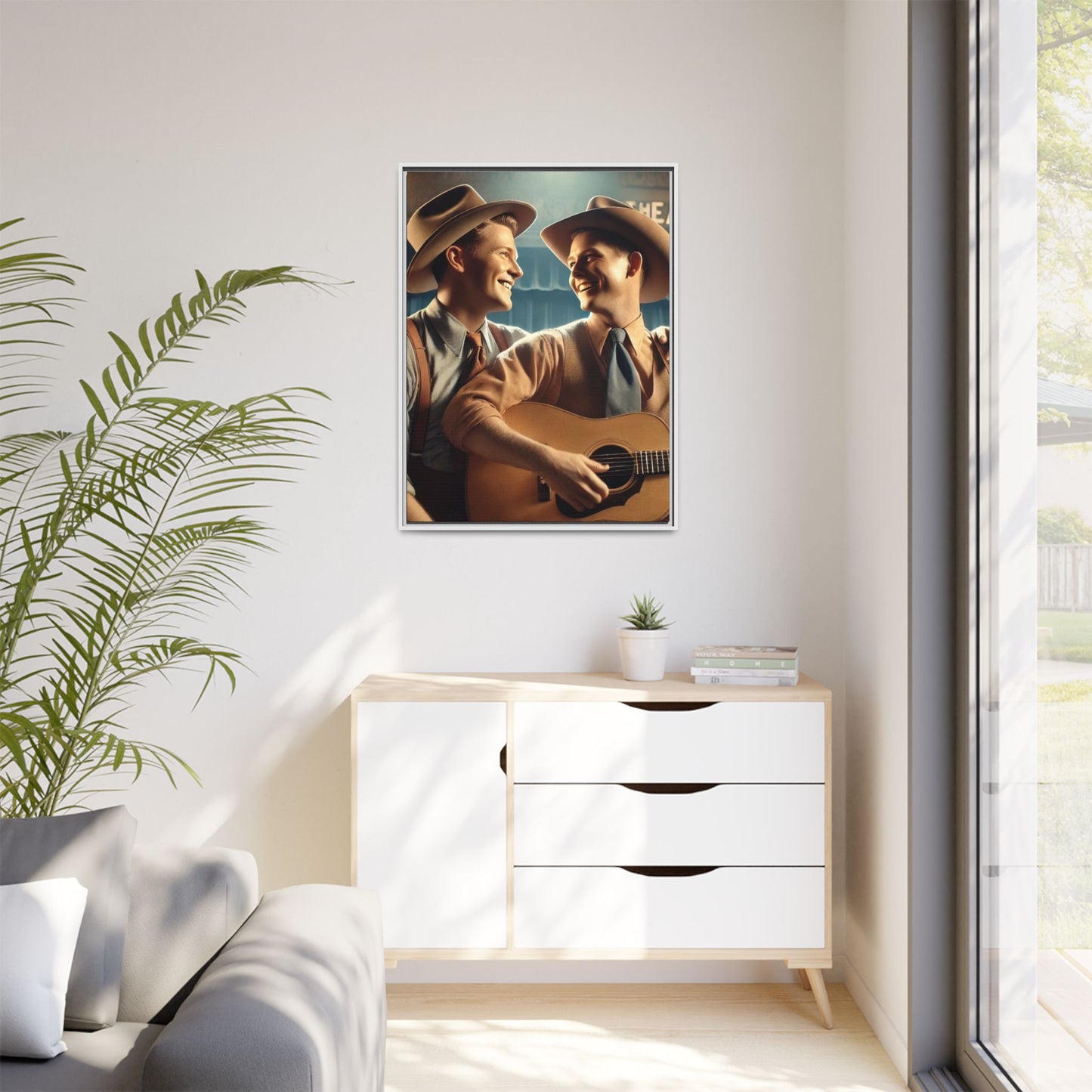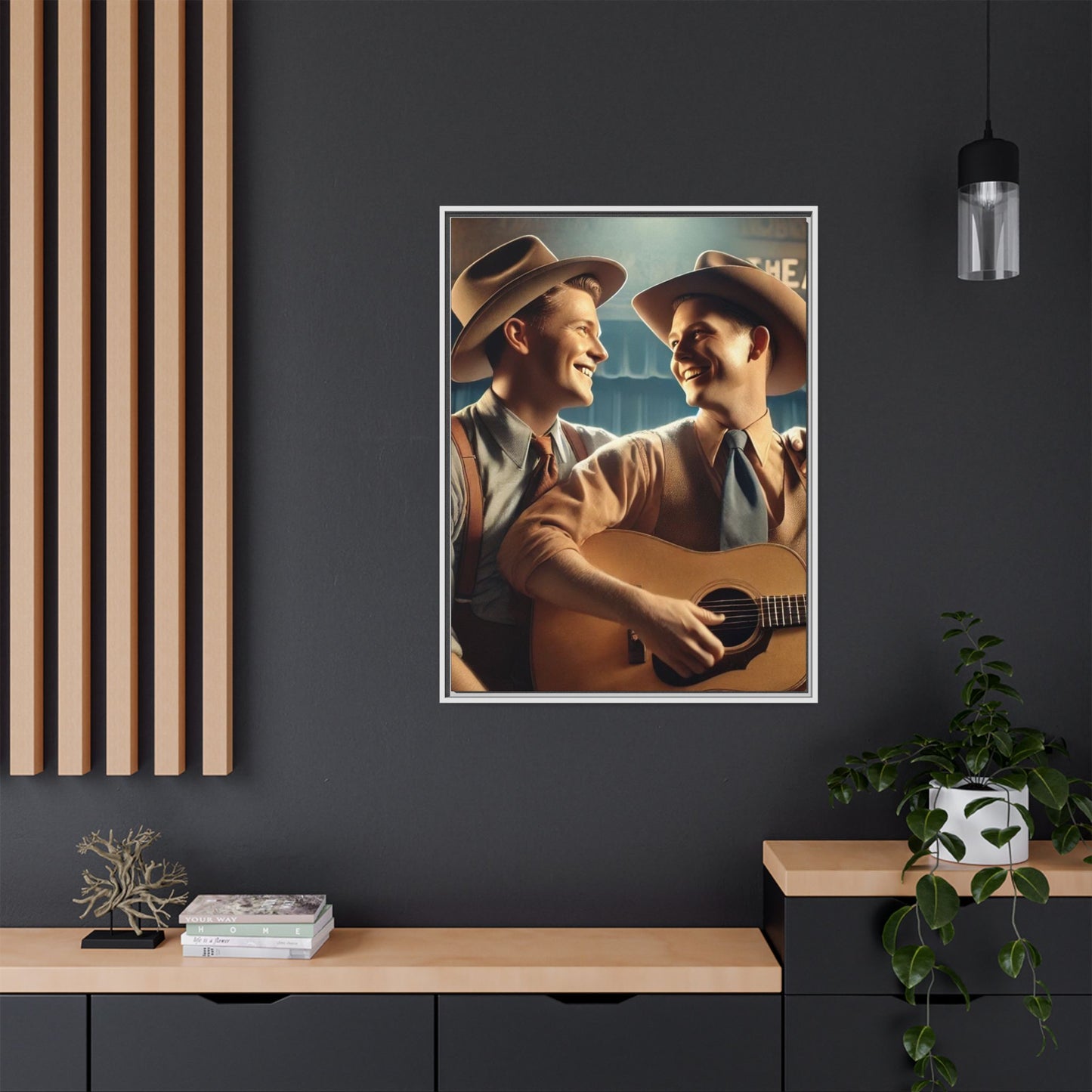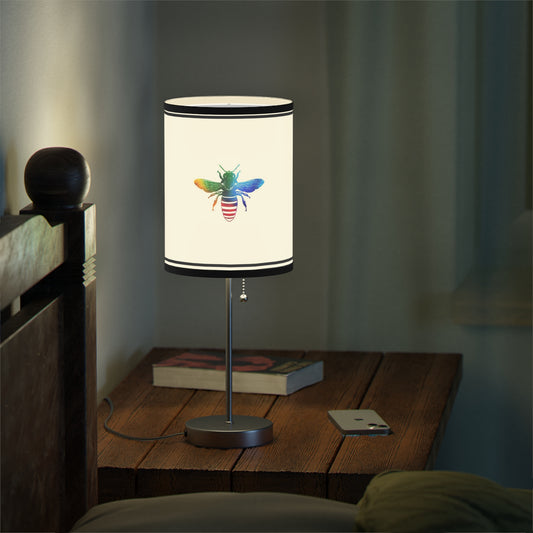This artwork captures a heartwarming moment between a queer couple recording a country-western song in a 1930s-style recording studio. Dressed in classic Western attire with wide-brimmed hats, button-up shirts, and ties, the two men sit closely together, sharing a warm, affectionate gaze and matching smiles. One holds a guitar, resting his arm on his partner's shoulder, creating a sense of connection and camaraderie that radiates through their expressions.
The muted blue background and soft lighting evoke a nostalgic, vintage atmosphere, transporting the viewer to an era of traditional country music. The setting, complete with subtle studio elements, enhances the authenticity of the scene, while the joyful expressions of the couple bring a lively, romantic energy to the image. Their attire and body language capture both their personal style and a deep sense of partnership, blending the rugged charm of country music with an understated celebration of love.
This artwork beautifully portrays the intersection of music, love, and resilience, celebrating queer romance within the world of early country-western music. It captures the warmth, unity, and timeless joy shared by the couple, reflecting themes of creativity, passion, and companionship in a setting that feels intimate and enduring.
This case study series examines the life and work of Midwestern artist Grant Wood. Known for his role in the Regionalist art movement, Wood’s paintings capture the spirit of rural American life with a distinct style inspired by Gothic and Renaissance art. His most iconic works, like American Gothic, reflect a meticulous attention to detail and a flat, decorative approach, showcasing earthy, muted colors—greens, browns, and blues—that echo the landscapes and life of the Midwest. These colors, punctuated occasionally with bright reds or yellows, create a grounded yet nostalgic atmosphere, resonating with the enduring American spirit.
This study is also a tribute to Wood as a queer artist—a truth that he may have kept concealed due to the social and cultural norms of his time. While the term gay didn’t gain mainstream use until the 1960s, queer has since become an inclusive, positive label within the LGBTQ+ community. It embraces a spectrum of identities that defy traditional definitions of sexuality and gender, reflecting the diversity and resilience of those who navigate life outside conventional norms. Reclaiming the term allows us to acknowledge the full breadth of Wood’s identity as part of his legacy.
In exploring Wood’s work, this series imagines what his art might have looked like if he had the freedom to express his authentic self openly, without societal restrictions. It also raises questions about the impact of cultural bias on art preservation—wondering if some pieces that might have reflected same-sex relationships were perhaps destroyed or never created due to the fear of judgment. These case studies honor Grant Wood’s authenticity, celebrating his contributions as a trailblazer in American art and recognizing the need for broader representation in galleries and museums today.
Please note: Slight size variations of +/- 1/8" (3.2mm) may occur due to the production process.
- Cotton and polyester canvas composite with a special proprietary coating
- Sustainably sourced pinewood frame
- Available in multiple sizes and frame colors
- Horizontal, vertical, and square options available
- Sawtooth hanging hardware included.
